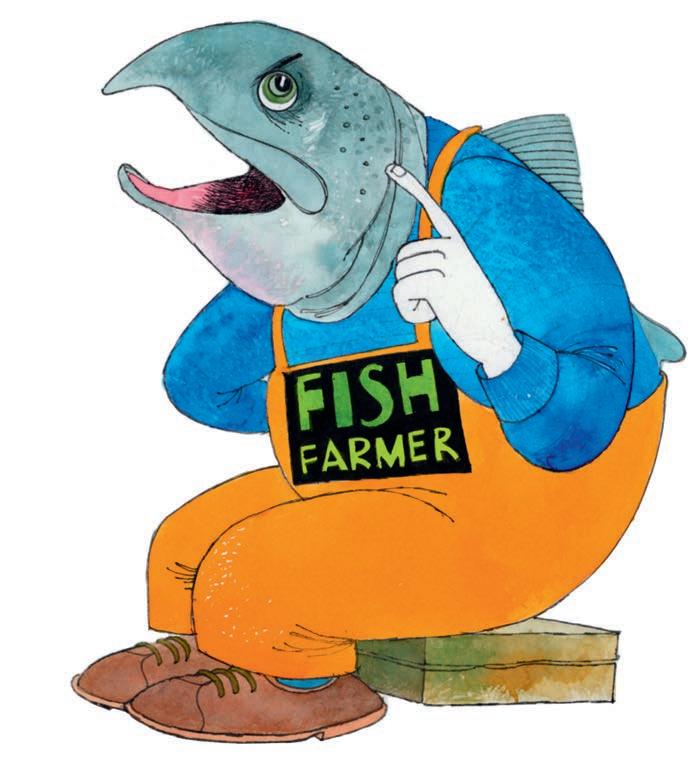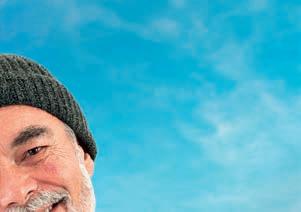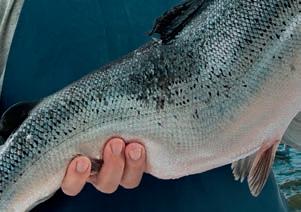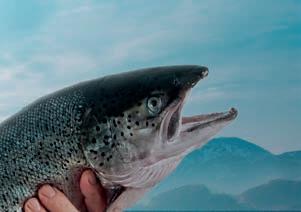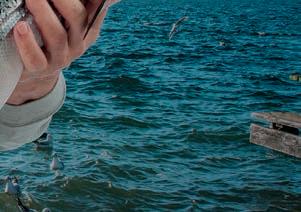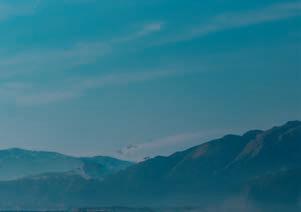











Subfarm’s vision for submersible pens
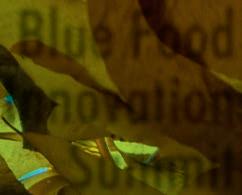
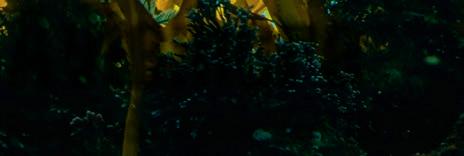

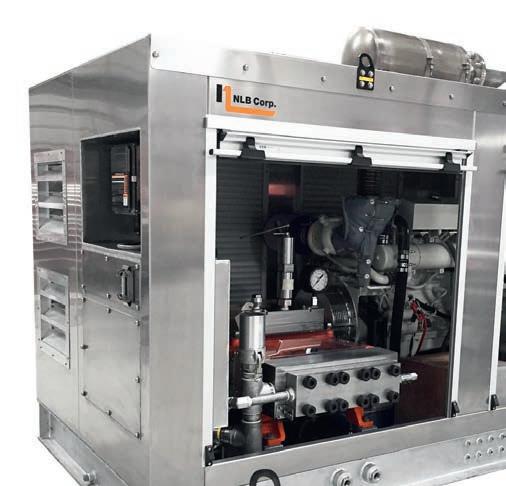




Bring confidence to your net cleaning job, with the most reliable pump on the market.
NLB’s high-pressure water jet pumps are proven reliable for offshore and onshore net cleaning. Engineered specifically for the aquaculture market, they withstand the harsh conditions of open seas, foul weather, and salt corrosion, all while delivering the same performance and durability NLB has been recognized for since 1971. Our units also offer a compatible interface with the industry’s leading head cleaning systems.
NLB will go the extra mile to make the switch easy for you. Contact us today to discuss your options!
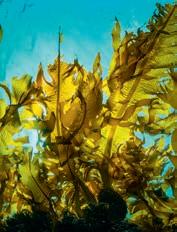












HE UK is, at the time of writing, in the throes of a general election campaign, the timing of which seems to have taken everybody by surprise (not least the party that called it).
Even ahead of that announcement, however, elected politicians have been taking an interest in our sector. At Aquaculture UK in Aviemore, the country’s biggest event for the sector, the show was opened by Scotland’s Employment and Investment Minister, Tom Arthur, and we also saw a visit from Scottish Labour Leader Anas Sarwar.
A week later, the Blue Food Innovation Summit in London was addressed by Lord Benyon, Minister of State for Climate, Environment and Energy in the UK Government. You can read full reports on both these events in this issue.
All three elected representatives made it clear they see aquaculture as critically important, both for the economy and for food security, but their support is not a blank cheque. Tom Arthur made it clear that the development of aquaculture in Scotland must be sustainable and also take account of local communities, while Lord Benyon acknowledged the criticisms of salmon farming’s record and stressed: “More needs to be done.”
Meanwhile the Scottish Parliament’s follow-up inquiry into salmon farming has just started, and it is clear that the industry will need to have some good answers ready. As speakers at both Aquaculture UK and the Blue Food Innovation Summit stressed, the fish farming industry not only needs to continue to improve its sustainability – it will need to get better at telling its story.
Also in this issue, Julia Hollister explains why there is increasing interest, in the United States, in an integrated approach that brings together seaweed with other forms of aquaculture, whether shellfish or finfish.
Nicki Holmyard reports from the Shellfish Association of Great Britain’s annual conference; Eugene Gerden gives an update on China’s aquaculture aspirations; and Vince McDonagh describes how the debate in Iceland over new fish farming regulations is going.
Dr Martin Jaffa critiques a new and not entirely even-handed podcast on the future of wild salmon, and Nick Joy argues that public servants are all too easily swayed by activists.
I hope there is something for everyone this month!
Best wishes
Robert Outram
Meet the team
Editorial advisory board: Steve Bracken, Hervé Migaud, Jim Treasurer, Chris Mitchell and Jason Cleaversmith
Editor: Robert Outram
Designer: Andrew Balahura
Commercial Manager: Janice Johnston jjohnston@fishfarmermagazine.com
Office Administrator: Fiona Robertson frobertson@fishfarmermagazine.com
Publisher: Alister Benne�
@fishfarmermagazine
www.fishfarmermagazine.com
Fish Farmer Volume 47, number 06
Contact us
Tel: +44(0)131 551 1000
Fax: +44(0)131 551 7901
Email: editor@fishfarmermagazine.com
Head office: Special Publica�ons, Fe�es Park, 496 Ferry Road, Edinburgh EH5 2DL
Subscrip�ons address: Fish Farmer magazine subscrip�ons, Warners Group Publica�ons plc, The Mal�ngs, West Street, Bourne, Lincolnshire PE10 9PH
Tel: +44(0)177 839 2014
UK subscrip�ons: £75 a year
ROW subscrip�ons: £95 a year including postage – all air mail
28-29
30-36
Tavish
Nicki
40-41
42-44

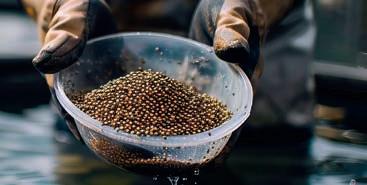
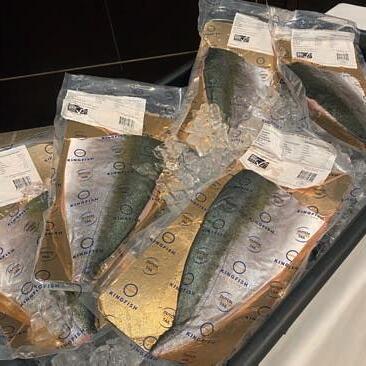
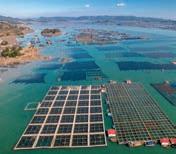
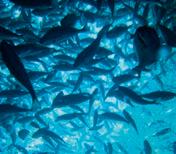


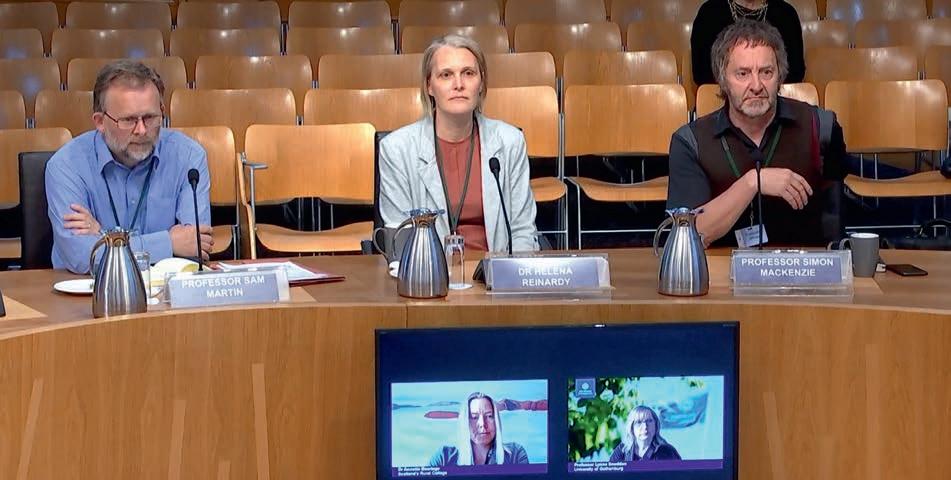
THE follow-up inquiry into salmon farming in Scotland got underway earlier this month with what amounted to the case for the prosecution, as well as evidence from academics and non-governmental organisations.
The Scottish Parliament’s Rural Affairs and Islands (RAI) Committee held its first evidence-taking session, with input from nongovernmental organisations and academics. The RAI Committee is following up on progress since the last Holyrood inquiry into the industry, in 2018. It heard from two campaigning organisations which – to varying degrees – oppose salmon farming. Responding to the question of whether an industry supporting more than 1,500 jobs and worth £760m to the economy should be welcomed, Rachel Mulrenan, Scotland Director of conservation group WildFish, said: “We obviously recognise the need for high quality, future-proof jobs on the west coast of the Highlands and Islands, and that’s beyond dispute, but we do not think at WildFish that salmon farming has a place in this future.”
is against salmon farming.
John Aitchison of the Coastal Communities Network said: “All jobs are important [but] jobs don’t depend on how the salmon farming is done. If salmon farming was done better, jobs would still be there.”




He added that automation and consolidation into larger farm sites means that increased volume of fish produced does not equate to more jobs and noted that the figure for the benefits of salmon farming do not include environmental and other costs.


Sarah Evans, Aquaculture Policy Officer with the Marine Conservation Society said MCS “does not take a position” on the economic question, but she said the MCS supports the idea that the industry needs a “social licence” in the communities in which it operates.
She said: “There can be a place for salmon in Scotland’s future, but there needs to be changes before it can grow.”
is getting better, but he added that the industry needs to do more to provide meaningful mortality data.
The committee also heard from academics in the field: Dr Annette Boerlage, Research Fellow in Aquatic Epidemiology, School of Veterinary Medicine, Scotland’s Rural College; Professor Simon MacKenzie, Head of the Institute of Aquaculture, University of Stirling; Professor Sam Martin, Director of Research, School of Biological Sciences, University of Aberdeen; Dr Helena Reinardy, Lecturer and Teaching Fellow, Scottish Association for Marine Science; and Professor Lynne Sneddon, Chair in Zoophysiology, Department of Biological and Environmental Sciences, University of Gothenburg.
She said salmon farming accounting for only a very small proportion of new jobs created in the region over the last three decades.
Mulrenan added that WildFish is not opposed to all forms of aquaculture but
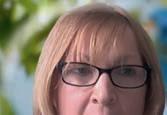
Sean Black, Senior Scientific Officer for Aquaculture, Royal Society for the Prevention of Cruelty to Animals, said from the RSPCA point of view, knowledge about fish biology is improving and fish welfare
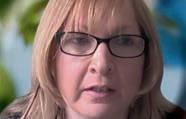
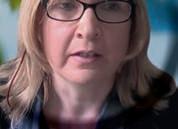
Professor Sneddon, who has carried out extensive research into the capacity of fish to feel pain, said current lice treatments, particularly the thermolicer process, cause the fish pain and distress. She said they also make the fish more vulnerable to other biological challenges. Aberdeen’s Sam Martin said that treatments could be problematic for fish that were already subject to other health issues, but he did not concede that the treatments themselves were demonstrably harmful.
The next session, planned for 12 June as this issue goes to press, will hear evidence regarding farmed fish health and from the Scottish Environment Protection Agency.
INDEPENDENT salmon farmer Loch Duart will continue its partnership with a local conservation organisation for another three years, it has been announced.
Loch Duart, based in the north-west of Scotland, has been working with the West Sutherland Fisheries Trust (WSFT), which has acted as an independent monitor and auditor of Loch Duart’s fish health data.
WSFT is an independent charity, established in 1996 and based in northwest Scotland.The trust monitors wild fish populations and advises on the management of rivers and lochs in the area.WSFT biologists visit four different Loch Duart farm sites each month to independently audit weekly fish health checks, including sea lice counts, and environmental and biological conditions. These audits provide Loch Duart with an unparalleled level of transparency in fish health data reporting, the company said, while also encouraging positive dialogue between the salmon farm and the fisheries trust.

Beth Osborne, Loch Duart’s Fish Health Manager, commented: “This is a unique partnership and one that both Loch Duart and the West Sutherland Fisheries Trust are proud of.We encourage others in the sector to look at what we’ve been doing and consider similar partnerships”.
She added: “It’s important that Loch Duart works with the trust because it gives us transparency of our data as a whole, both from the wild stocks as well as the fish farm. It helps the local environment, the local people and all of the local stakeholders. If everything’s healthy in the area and we’ve shared as much information as possible, then everybody benefits.”
Loch Duart’s working relationship with WSFT goes back to 1999, the year the salmon farm was founded.The verification partnership, which began in 2021, grants WSFT unprecedented access to Loch Duart's sites.
The company said: “This ensures continued transparency in fish health data reporting and upholds the company's commitment to doing things the ‘Loch Duart way’.”
Dr Shona Marshall, Senior Fisheries Biologist for the trust, said: "Our auditing of sea lice counts has been ongoing for three years and has proved to be a success.We are pleased to extend this partnership with Loch Duart Salmon. Working closely with Loch Duart has given a good understanding of the farm practices, their issues, and solutions.The care shown by the staff towards their fish and their willingness to discuss issues for both farmed and wild fish in an open manner is welcomed. I’m not aware of any other trust that has the access that I have here " Loch Duart supports WSFT with net sweeps and training in sea lice and gill health identification for wild fish.The two organisations also work together to form an environmental management plan, supporting the local area.
SCOTTISH Sea Farms has teamed up with seaweed growing venture Atlantic Garden, in a scheme that combines salmon and kelp farming on Loch Spelve, in the Sound of Mull.
The aim of the year-long pilot is to enrich and replenish the marine environment, feeding into the company’s work to minimise any impact from its farming activities.
The farm, which had been fallowed, was chosen as a suitable testing ground in the collaboration between Scottish Sea Farms and businessman and writer Guy Grieve, who ran the Ethical Shellfish Company from Mull and now, through his company Atlantic Garden, plans to produce commercial quantities of sugar kelp, to be used in garden compost.
The seaweed lines, installed last October, produced encouraging growth over the winter, and this month four 90m pens will be stocked with salmon.
Scottish Sea Farms Head of Sustainability and Development Anne Anderson said: “Seaweed is so beneficial in so many ways for the marine environment. As a plant, it absorbs carbon dioxide, while releasing oxygen. It’s a bit like planting trees to offset your carbon footprint.
“And some of the organic nutrients, nitrogen and phosphorous, from salmon farming are absorbed to help nourish the kelp. It will be interesting to see if we get more seaweed growth once we put the
Scottish Sea Farms sought permission from Crown Estate Scotland for the trial, and talks are now underway to amend the farming lease to cultivate seaweed longer term.
In Loch Spelve, Area Support Manager for Mull Andrew MacLeannan worked with Grieve and Mull-based Inverlussa Marine Services to install four 750m of seaweed lines (a total of 3km), seeded by Dutch supplier Hortimare, and tied the lines to the raised salmon pen grid.
“We plan to stock the farm with 7kg fish, from Fishnish in the Sound of Mull, so this will only be a four or five-month cycle, not the full 18 months,” he said.
“Loch Spelve is sheltered so ideal for seaweed, which doesn’t like strong currents, but the environmental conditions have been challenging for salmon production in the past, particularly for gill health."
Grieve wanted to start producing seaweed at scale in Scotland to complement the seaweed gathered from harbours.
“One of the key points about farmed seaweed is you get a very clean product whereas when you gather it you have to remove plastic,” he said.
“I had fished out of Loch Spelve for 12 years and it struck me as immediately obvious that the best partners for this should be someone like Scottish Sea Farms, for the simple reason that for decades they have been working at sea, through thick and thin,
and through every kind of weather."
Guy Grieve plans to keep the crop in the water until the summer to harvest as much biomass as possible, up to 30 tonnes, all being well.
“We should get 8-10 kilos per metre of seeded line but this is a pilot so we don’t know what to expect yet. I look forward to what we learn from this trial and what our next steps will be.”
Atlantic Garden is donating 20p from every bag of seaweed compost it sells to the Scottish Coastal Clean-up.
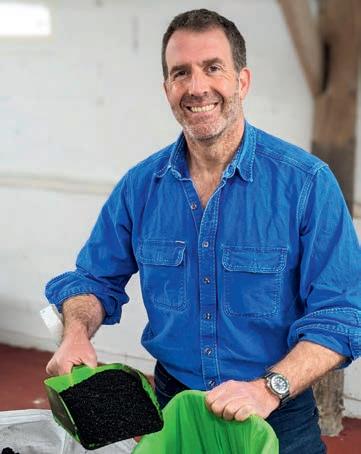
CROWN Estate Scotland has appointed Hamish Macdonell as the organisation’s Head of Corporate Affairs. He was previously Director of Strategic Engagement with trade body Salmon Scotland, and he is a former Scottish Political Editor

with The Times.
Hamish Macdonell said: “I am delighted to be joining Crown Estate Scotland as the organisation’s new Head of Corporate Affairs. As a former Director of Salmon Scotland, I understand the role salmon farming plays and the relationship that exists between aquaculture companies and Crown Estate Scotland.
“I look forward to working with a terrific team at Crown Estate Scotland for the benefit of rural and coastal communities all over the country.”
HAULIER Ferguson Transport & Shipping has taken delivery of a batch of new trucks and trailers for live fish transport, as part of its long-standing relationship with salmon producer Mowi Scotland. Ferguson will operate the trucks in Mowi’s livery. Two top of the range Euro 6 low emission Volvo Trucks
in Mowi colours have already joined the fleet, as well as 10 new Crossland fish tanker trailers. A further four tractor units will be delivered in the coming months to transport fresh Mowi salmon and the full fleet is expected to be delivered by the manufacturers over the next 12 months.

A NORWEGIAN salmon farmer who played a key role in helping to build the industry in Scotland has died, aged 60. During the 1990s
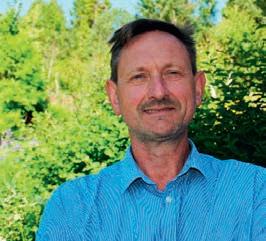
Inge Midtbø was Chief Executive at Lighthouse of Scotland Ltd, which farmed in the Hebrides and west coast of Scotland. The business was later to become The Scottish Salmon Company, now Bakkafrost Scotland. Midtbø returned to Norway in 1997, helping to develop Nordic Halibut. He was more recent Chairman of seafood processing business
P.Stave AS.

THE Cooke Seafood group is this month celebrating ten years of aquaculture in the UK with a change of name. The company said it is very proud that the business is now a decade old and of what has been achieved.
Cooke Aquaculture Scotland was established in 2014 as part of the global company’s strategy to achieve success through acquisitions and organic growth to meet an increasing market demand for healthy, fresh seafood. The company will from now on adopt the shorter name of "Cooke Scotland".
Colin Blair, Managing Director of Cooke Scotland, said: “Ten years this month, the Cooke family acquired the successful seawater and freshwater assets in Orkney, Shetland and UK mainland before building on its Scottish operations.
“I take great pride in what we have accomplished as one of the leading producers of world-renowned Scottish salmon and the largest producer of organic Scottish salmon.”
In the past decade, Cooke Scotland has tripled its organic production and increased general production and supply to its loyal customers. The company has harvested and shipped over 52 million fresh farmed salmon to more than 16 different countries worldwide and continues to grow responsibly and sustainably by maintaining consistently high standards.
The company said: “As one of the largest employers in the Scottish Northern Isles, and with over 380 staff who dedicate the time, care and resources to rearing the finest Scottish salmon, the company works hard to generate shared prosperity by playing an intrinsic part of the communities in which its employees live and work.
“Since 2018, Cooke Scotland has donated over £700,000 through the Cooke Community Benefit Fund to a variety of local-led events, activities, groups and community projects throughout Scotland and the Northern Isles, and in the north of England.
“Cooke’s local investment has had particularly positive reallife impacts in the Northern Isles including supporting local businesses and jobs, maintaining local populations, sustaining the uptake of local schools, ferries and shops; and created ongoing operational spending with local businesses.”
Cooke said a key milestone was the establishment of Northeast Nutrition Scotland in Invergordon to locally produce feed in-house for Cooke’s UK operations.
“Cooke Scotland has also bolstered its workforce recruitment and is having great success with staff training and development – including effective results in the areas of husbandry and fish welfare,” it added.
MARINE technology business OTAQ is planning to raise between £1.5m and £2m through an issue of convertible loan notes.
The announcement came alongside the company’s latest trading update, which reports an “encouraging” first quarter for 2024, with revenues up 19% year on year.
OTAQ expects that the final figure for trading in the year to 31 December 2023 will be slightly ahead of previous estimates, with revenues of not less than £4.4m (2022: £4.0m).
The company anticipates that its EBITDA loss will be down to £311,000 (2022: £331k). The latest estimate for the loss is some £66k higher than previous guidance, however, due to “certain non-recurring items”.
OTAQ is proposing to conduct a fundraising by way of a conditional placing of convertible loan notes to raise net proceeds of up to £2m, with a minimum raise of £1.5m.
The convertible loan notes will be redeemable after three years with a cash coupon of 10 per cent per annum. The notes will be convertible into OTAQ ordinary shares of one penny each at a price of 3.0 pence per share.
The placing will be subject to approval by shareholders at the next annual general meeting.
Phil Newby, Chief Executive Officer of OTAQ, said: “The board acknowledges with satisfaction the company's progress, especially the favourable market conditions in the offshore sector, where OTAQ is strategically positioned to pursue emerging global growth prospects for its OceanSense, Eagle IP, and subsea electrical connector and penetrator solutions.
“Given the anticipated improvement in reported revenue for 2023 and the favourable start to 2024, the board remains confident in its current growth strategy. The recent commercial launch of LPAS [Live Plankton Analysis System] marks a significant milestone for the company, one that we are poised to develop throughout the remainder of 2024 and beyond.”
OTAQ’s LPAS, which is designed to detect harmful algal blooms, was launched at the Aquaculture UK trade show in Aviemore. The system has completed trials successfully after four years in development.
The company also said its sonar shrimp system, developed for Minnowtech LLC, is now gaining traction in its target markets. OTAQ has also identified further new customer interest in its Sealfence acoustic deterrent device (ADD) solution from salmon farmers in several major salmon production regions, having sold 19 Sealfence units into these core target markets in the first quarter – although regulators in Scotland have still not come to a decision on ADDs.


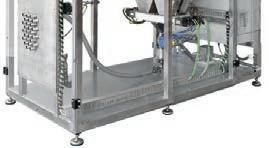

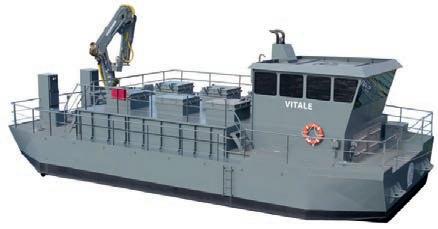



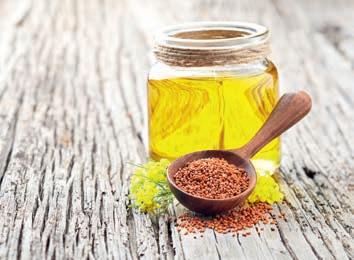
A £4.6m fund, aimed at bringing academia and industry together to tackle key challenges facing UK aquaculture, is being made available.
Researchers and their industrial partners working in sustainable aquaculture are set to benefit from a share of this new Biotechnology and Biological Sciences Research Council (BBSRC) investment.
The Sustainable Aquaculture Partnerships for Innovation fund will support 10 projects designed to address specific issues facing British aquaculture, including disease prevention and animal welfare.
All funded projects include at least one partner from industry who will contribute at least 10% cash or in-kind to the full economic cost of the project.
Among the funded projects is a 24-month consortium, which will help to address the health and welfare impact of plankton on aquaculture by using:
• novel imaging approaches
• artificial intelligence
• mathematical models
• real-time web-based reporting
The project has applicability to a diverse range of areas and international applications and could benefit the shellfish aquaculture industry.
Elsewhere, researchers will explore how regulating exposure to light can help tackle some of the challenges posed by infectious diseases on salmon farms.
Previous research underpinning the project has shown that juvenile trout exposed to continuous light were less resistant to skin parasites.
Another project will bring together a large consortium of seaweed producers from around the UK, Sweden and Norway to research ways to boost red seaweed cultivation.
This will include the use of:
• novel culturing strategies
• hatchery technology
• contamination control, microbiome engineering
• predatory microorganisms for disease control
Dr Lee Beniston, Associate Director of Industry Partnerships and Collaborative R&D at BBSRC, said: “Advances in aquaculture technology and innovative approaches have enormous potential to provide the UK, and the world, with a more sustainable, diverse and healthy
source of nutrition.
“This will support ambitions in areas such as food security through to the health of the nation.”
The project partners include key players in the sector such as Scottish Sea Farms, Bakkafrost, Mowi and Salmon Scotland.
Other organisations, such as the University of Stirling’s Institute of Aquaculture, where scientists will work with industry partners on three of the 10 projects funded by BBSRC investment, are involved.
Professor Simon MacKenzie, Head of the Institute of Aquaculture at the University of Stirling, will lead a project aimed at improving gill health in Atlantic salmon, a partnership with PatoGen and Bakkafrost.
Fellow Dr Adam Brooker will lead a team working with Bakkafrost and Garrett Brothers to improve fish welfare in salmon aquaculture using on-demand, electricpowered aeration.
Professor Dr Monica Betancort will head up a project to research the use of camelina omega-3 oil for optimal heart and gill health, in partnership with Biomar.
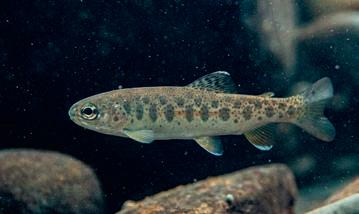
AQUACULTURE UK, the country’s biggest trade show for the industry, packed a full programme into two days at Aviemore over 14 and 15 May.
The show saw visitors and exhibitors from across the UK and much further afield, with national pavilions for the first time representing Canada, Chile and Ireland. The occasion also gave leading politicians an opportunity to voice their support for the industry. Opening the event, the SNP’s Employment and Investment Minister, Tom Arthur, praised the industry’s contribution to Scotland’s economy, concluding: “We see a bright future for aquaculture.”
Scottish Labour leader Anas Sarwar also attended
the show, meeting producers and suppliers, and addressing the AGM of industry body Salmon Scotland, which was being held alongside the show and conference. He
described the sector as a key part of “Brand Scotland”.
The conference had a full programme with speaker panels covering a range of topics from genetics to the

parallel challenges faced by fish farmers in Scotland and Canada.
This year’s trade show also saw a number of product launches from companies large and small, from Gael Force’s new reinforced pen to a new remotely operated vehicle (ROV) dedicated to mort collection.
Aquaculture UK was also the venue for the Aquaculture Awards, with among others, a special achievement award for Gilpin Bradley, the former Managing Director with Wester Ross Fisheries.
Read our full report on Aquaculture UK, starting on page 30 of this issue.
See Fish Farmer’s video of the show highlights online at bit.ly/AquaUK24vid.
RESEARCH organisation the Sustainable Aquaculture Innovation Centre (SAIC) has secured new funding to continue its support of fish health research and development.
The agreed package means SAIC will need to focus its efforts more narrowly –and this has left the voluntary organisation Women in Scottish Aquaculture (WiSA), which SAIC has supported and helped to set up, looking for a new host.
Last year the Scottish Funding Council (SFC), which funds a huge range of educational and research institutions across Scotland, previously SAIC’s chief source of finance, announced that it was ceasing its support for the aquaculture body, much to the disappointment of the industry.
The new £1.5m package, made up of £500,000 from the Scottish Government’s Marine Fund Scotland and £1m of transitional funding from the Scottish Funding Council (SFC), will allow SAIC to build on its work over the past decade and sharpen the innovation centre’s focus on driving positive health and welfare outcomes for farmed fish.
For WiSA, however, the search is now on for another supporter.WiSA carries out a range of activities, including mentoring programmes, the WiSA Awards, events and training, and online knowledge-sharing.
Up until now, SAIC has administered WiSA, using in-house expertise and staff time, with financial support from industry and government.
In a flier issued at the Aquaculture UK conference,WiSA said: “WiSA is looking for a new host organisation to fund or fundraise in order to administer and deliver our key initiatives alongside our advisory group. If you share our vision and passion, then please come and speak with us about how you can help make sure WiSA continues to exist.”
Via a video address at the conference, Mairi Gougeon, Cabinet Secretary for Rural Affairs, Land Reform and Islands, underlined her appreciation for WiSA’s work and said the Scottish Government is committed to working with it in future, although that pledge came without any guarantee of funding.
SAIC has now launched a new funding call for businesses and higher education institutions for projects exclusively focussed on finfish health and welfare.The deadline for applications is 19 June 2024. A minimum of £800,000 in funding is available to applicants, with an emphasis on gill health, the mitigation of challenges potentially arising from climate change, such as harmful algal blooms and micro-

jellyfish, and emerging issues affecting fish health. SAIC is particularly keen to receive proposals focussed on potential preventative techniques and technologies for these areas.
David Gregory, Chair of SAIC, said: “The funding provided by the Scottish Government and SFC will allow SAIC’s vital work to continue.The model of combining funding from the sector and government, which has underpinned our work over the past decade, is now very well established and has delivered a broad range of positive outcomes in aquaculture.
“SAIC’s more concentrated remit is aligned to the sector’s priorities, and we look forward to fostering greater collaboration on R&D projects to tackle the most pressing health and welfare challenges faced by the fish farming community.”
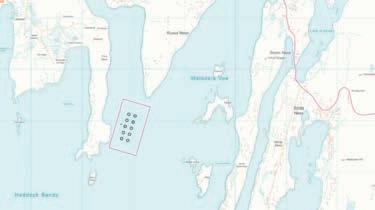


SHETLAND Islands Council has given its approval to Scottish Sea Farms’ proposed offshore salmon farm at Billy Baa.
The move is part of a strategy of modernising and consolidating the company’s estate in Shetland into fewer but larger farms.
Four existing consents to farm in the more sheltered, shallower waters of Sandsound Voe – Brei Geo Inshore (1,209 tonnes), Brei Geo Offshore (2,635 tonnes), Sandsound Voe (100 tonnes) and Sandsound Bixter (1,000 tonnes) – will be surrendered.
In their place will be one new farm, Billy Baa (4,091 tonnes), sited slightly further offshore where, the company says, hydrodynamic modelling found there to be even better growing conditions, but without any increase to overall environmental load. The proposed farm comprises nine 160
metre salmon pens and one 120 metre pen, secured by a 125 metre mooring grid and with a surface area of 19,480m2.
Commenting on the news, Scottish Sea Farms’ Head of Sustainability and Development Anne Anderson said: “By combining four smaller consents into one location, equipped with fewer but larger pens, we’re seeking to maximise water exchange and oxygen levels – two key factors supporting fish growth – in and around the farm.
“It will also be a more efficient approach to farming this stretch of Scalloway’s waters, enabling the team to concentrate their time, skill and resources in one location, further boosting fish health, welfare and survival.”
anything; the planning and consenting process is there for a reason.
“Should we be successful, however, we would hope to be in a position to be stocking Billy Baa in 2026.”
As part of its rolling programme of farm modernisations and consolidations, Scottish Sea Farms has a second proposed development, Fish Holm in Yell Sound, under consideration by Shetland Islands Council.

The next step for the company is to secure the SEPA (Scottish Environment Protection Agency) CAR licence which, if awarded, will set permitted levels on fish volumes and veterinary medicines.

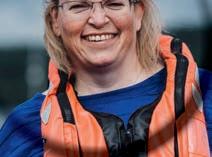
“Our policy has always been to secure the relevant approvals and licences first, before ordering the farm infrastructure or assigning fish,” said Anderson. “We don’t assume
This is one of two planning notifications (the other by fellow salmon grower Mowi in the Highlands and Islands region) that are helping to trial the new, streamlined licensing and consenting process for salmon farms introduced following the recommendations of the Griggs Report.
Under the new process, local authority planners and SEPA work together to review submissions in consultation with key stakeholders, rather than each body consider the applications separately as currently happens.

THE Icelandic salmon farmer Ice Fish Farm has changed its name – and its shares can now be traded on Iceland’s market for aspiring companies.
The development marks a significant step-up for the business, which is backed by the Norwegian salmon company Måsøval.
The company, which has a market value of ISK 44bn (£250m), will now be officially known on the Icelandic stock market as “Kaldvík AS”. The company’s affiliated shares will trade on the Nasdaq First North Growth Market in Reykjavik, appearing as KLDVK. It is already listed on Oslo’s Euronext Growth Market.
The Ice Fish Farm move follows in
the footsteps of Arnarlax, another Icelandic fish farmer, which was listed on the Icelandic First North Market eight months ago. This market is often seen as a stepping stone for companies aspiring to list on the main stock exchange.
At the Capital Markets Day ceremony, Kaldvík chairman Asle Rønning spoke of the growth of the business in recent years from a small operation. He said when the business launched in 2016, it had just 30 to 40 employees. Today it now has a staff close to 200 “in our fantastic team”, he said.
Ice Fish Farm, which has a near 44,000 tonnes maximum allowable
biomass, underwent refinancing with a major equity increase last year.
The chairman said the company was proud to be involved in salmon farming even though some people were saying those taking part in the industry should be ashamed.
While the industry needed to continue to improve on welfare, Rønning said he was proud of the industry, reminding his audience that salmon aquaculture produced far less CO2 gases than pig or chicken farming, and it was also generating sustainable jobs in Iceland’s rural areas.
Guðmundur Gíslason, CEO of Kaldvík, said the company’s registration in Iceland was a logical and natural development, given all that was happening in the country.
He had earlier explained the thinking behind the listing move: “As the operations of Ice Fish Farm take place exclusively in Iceland, a dual listing on First North Iceland is a natural and logical next step for the company. Since listing on Euronext Growth Oslo in 2020, we have significantly grown the business and become the leading aquaculture entity in the east fjords of Iceland. Combined with the fact that we have experienced an increased interest in Ice Fish Farm by Icelandic investors, and a significant part of the company ‘s shares are currently held by Icelandic investors, we believe now is the right time to pursue a dual listing.”
NORWAY exported seafood worth NOK 14bn (just over £1bn) last month, largely thanks to increased volumes of salmon and trout.
This new May record, which also includes volume growth, represents an increase of 8% by value on the same month last year.
Christian Chramer, the Norwegian Seafood Council’s CEO, said that in the first four months of this year, the Norwegian krone was weaker than the corresponding months last year, which raised export prices measured in Norwegian krone. That has now changed.
“In May, the Norwegian krone strengthened, and thus there was no positive currency effect last month,” he added.
“Despite that, the value of Norwegian
seafood exports has never been higher in a month of May before.
“Although there are challenging economic times for many consumers, Norwegian seafood is still a highly sought-after food item.”
Exports to three EU countries –Spain (up 19%), Portugal (up 22%) and the Netherlands (up 15%) – saw the greatest growth.
So far this year, Norway has exported seafood worth NOK 68.5bn (£5bn), 2% higher than the corresponding period in 2023.
Salmon remains by far Norway’s most important species exceeding NOK 10bn (£740m) in May.
Chramer said there was growth in salmon for the first time this year and it was also an historic month for trout with the value the highest it has ever
been in a single month.
Farmed trout exports totalled 5,561 tonnes and were worth NOK 587m (£43m) representing a value increase of 65% on a year ago. The volume growth, year on year, was 83%.
Salmon exports totalled 82,662 tonnes (up 2%) and the NOK 10bn value represented growth of 8% on May last year.


THE last few weeks have seen a worrying number of cases of the infectious salmon anaemia (ISA) virus reported in Norway – and now also in the Faroes.
In late May, Måsøval said ISA was suspected at one of its salmon farming sites in Norway.
The news came just days after the company announced buoyant 2024 first quarter results.
Måsøval disclosed the unwelcome development in an Oslo Stock Exchange announcement, saying: “Strict measures have been implemented to contain the virus and prevent further spread. Måsøval will harvest the site to reduce biological risk. Fish on site numbers are 396,000 with an average weight of 5.6 kg WFE [whole fish equivalent].
“The site was originally planned to be fully harvested in week 26, thus the change in harvest plan will have limited effect on volumes and cost and is expected to have little effect on price achievement.”
The news was the latest in an increasing number of suspected and confirmed ISA cases in Norway.The virus is not dangerous to humans but can devastate fish stocks.
ISA was also confirmed in the far north of Norway. Nordlaks Havbruk AS received positive test results for the disease in its farm at Sandnes Øst in Hadsel municipality. Nordlaks Havbruk director Bjarne Johansen said: “This is a situation we take very seriously. Our highest priority is to protect the health of our fish and minimise the risk of spread.
“The fish at the Sandnes Øst location will be slaughtered as quickly as possible and we are working closely with the Norwegian Food Safety Authority on further work.”
The Norwegian Food Safety Authority was notified of suspicions on 16 May when the test results arrived. Following routine procedures, a restriction zone was created to prevent, limit and combat the spread of the disease.
The disease was also detected at a Sjøtroll Havbruk site in the Vestland region and a suspected case was reported at a SalMar location at the beginning of May.
ISA reaches the Faroes
Bakkafrost last month confirmed an ISA outbreak in the Faroe Islands, the first instance of the disease in that jurisdiction for a long time.
The virus was found at two Bakkafrost pens at the company’s farming site A-19 Vágur.The full site has a million fish in total, with an average weight of 2.6 kg.
Bakkafrost said: “Strict measures have been implemented to contain the virus and prevent further spread.
“The two affected pens will be harvested out immediately and the full site will be harvested out within two months, in line with Faroese regulation.
“Consequently, estimates show that harvest volumes for 2024 will be reduced with 2,000-3,000 tonnes gutted weight by the accelerated harvest of the entire farming site A-19 Vágur.”
Salmon says its Arctic project is on track
LAND-based fish farmer Andfjord Salmon has said its development in the north of Norway is going well.
Releasing its first quarter report, the company, which recently completed a capital raising of NOK 350m (£25m), reports that its build out programme at Kvalnes on the island of Andøya in the Arctic archipelago of Vesterålen is progressing as planned.
The pool pit excavation was completed ahead of schedule, and the harbour area and waterways workstreams are on track, the company said. The facility will operate as a flow-through system using seawater.
Post-smolt production is underway with a high survival rate at 97.5%.
Andfjord Salmon says a report on the site by food research institution Nofima has concluded that fish welfare and health in the first production cycle have been good.
The company says its policy of co-operation with other industry
players is proving positive for economic development in the region. Agreement has been reached with Eidsfjord Sjøfarm/ Holmøy Havbruk (part of Holmøy Group) whereby Andfjord Salmon will farm post-smolt for a select number of nearby ocean-based farming locations as part of upcoming production cycles.
The initial production plan has been approved by relevant authorities, while there are ongoing discussions with additional local conventional fish farmers regarding partnering.
The company is planning for a harvest of around 40,000 tonnes between next year and 2030.

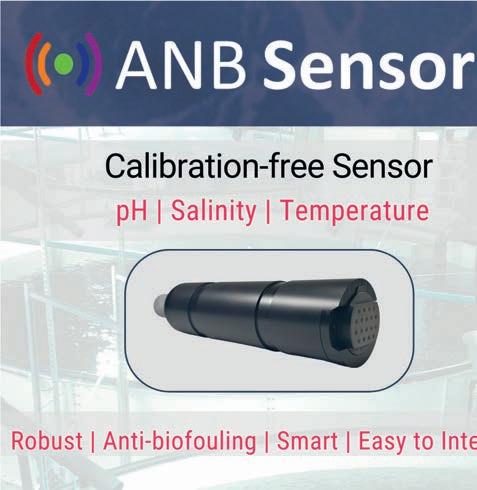

Benchmark hires sales chief for Iceland
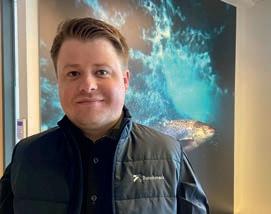
AQUACULTURE biotech
business Benchmark has appointed Sverre Vormedal as the company’s Sales and
Technical Manager for Iceland and the Faroe Islands. Prior to joining Benchmark, he served as Biological Controller at Arnarlax, the Icelandic farming company.
His previous experience includes work in service boats, fish farms, sales logistics, and quality management throughout the industry. Vormedal has lived in Reykjavik, Iceland, since May 2021 and will work out of Benchmark’s office in Hafnarfjördur, Iceland.
Thousands of Icelanders sign petition against net-pen farming
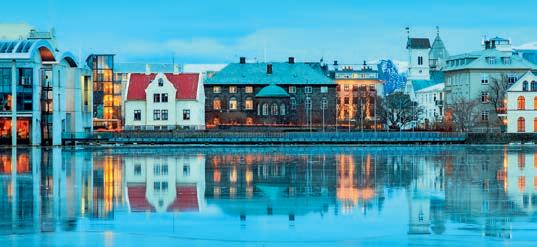
MORE than 46,000 people have signed a petition calling on the Icelandic government to outlaw open net-pen salmon farming in the country’s fjords. The poll has the backing of Icelandic sport fishing groups. The campaign took on new momentum last autumn following a serious escape at an Arctic Fish facility in the Westfjords. It has since become even more of a political hot potato now that Iceland’s new aquaculture bill, setting out a long-term strategy for fish farming, is currently being debated by parliament.
The petition was started several months ago and includes signatures from foreigners and Icelandic nationals. It was delivered to the Ministry of Food which had been handling the ongoing aquaculture bill, but that responsibility has now been taken over by the Icelandic Economic and Social Committee (see Iceland feature, page 58).
SALMON farming veteran
Paul Birger Torgnes has been honoured by the Federation of European Aquaculture Producers (FEAP) in recognition of a career

A LARGE bonus is being offered for the recapture of farmed salmon that escaped from a Lerøy Seafood facility in Norway.
The company is offering anglers NOK 700 or around £52 per salmon – one of the highest rewards so far for such an event.
More than 8,000 fish escaped from the Lerøy farm in the Hitra municipality over a week ago.The original escape figure was more than 14,000 but that estimate was later reduced.
The incident was made worse by the revelation that many of the fish were infected by bacterial kidney disease (BKD).
The news journal Børsen reports that former professional footballer Vegard Heggem has been negotiating with Lerøy on behalf of anglers.
Børsen says he and the river managers will receive the NOK 700 bounty for anglers who catch each escaped fish caught in rivers around the area.
They will have to be confirmed as farmed salmon following submission. Heggem, a former Liverpool FC and
Norwegian international right back, now retired, said the figure was only fair and reasonable.
It also said the rivers affected are some of the best wild salmon fishing rivers in the country.
Heggem told Børsen: “We have experienced escapes in the past, but never with infection from this rare disease [BKD).
“The phone calls are pouring in from people and fishermen who are genuinely concerned.The timing is absolutely disastrous, now just before the start of fishing on 1 June,” said Heggem to Børsen.
Lerøy has apologised for the incident, saying it is working purposefully to ensure as many fish as possible are returned and to ensure such an incident will never happen again.

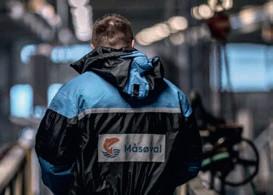
weight in the same quarter last year.
The EBIT or operational profit was NOK 120m (£8.8m) compared to just NOK 36m (£2.6m) 12 months ago.
that goes back to the early days of the industry in the 1980s. Torgnes was announced as the recipient of the FEAP Award for 2024 at the organisation’s annual general meeting in Istanbul.
Paul Birg-er Torgnes has been involved in salmon farming in Norway as well as in Chile, UK and other countries over the last few decades. He is still active in his family-owned company, producing salmon in Norway, and has also been involved in farming other species, such as sea bass and sea bream in Turkey.
THE large central Norwegian salmon farmer Måsøval has reported a strong first quarter performance, despite encountering some of the problems that have hit a number of producers.
The company battled against jellyfish, winter storms and cold sea temperatures during the period, but its teams battled these well, the company said.
Måsøval recorded revenues of NOK 402m (almost £30m) in the first quarter, harvesting 3,606 tonnes gross weight.
These figures compare to NOK 237m (£17m) and a harvest of 1,994 tonnes gross
CEO Helge Kvalvik said: “During the quarter, the group not only harvested more salmon than guided [estimated], but also exited the quarter with a high biomass with harvest-ready fish.
“Cost position improved significantly in the quarter, positioning us for a strong Q2.
“Results are, however, somewhat hampered by low price achievement due to downgrading.”
He added: “We have intensified our work on fish health to improve the quality within the entire value chain.”
Måsøval said losses in the sales and processing department due to nonrecurring events overshadow a strong operational quarter.
NORWAY’S aquaculture employers have reached a pay agreement with the country’s fish feed and fishmeal workers. A settlement with fish farm staff, however, is going to mediation.
The feed sector settlement includes increases in the minimum wage, and overtime and shift pay rates for staff.
The employer organisation Seafood Norway said: “We included new provisions in the collective agreement regarding, among other things, local negotiations, right to breastfeeding leave and text on dyslexia-friendly workplaces.”
“The protocol also contains text regarding salaries for meetings in collaboration committees for the industry.”
While there is relief that a settlement has been reached with this important group of workers, the employers remain at a stand-off with fish farm workers and there is talk in Norway –although no more than that at this stage – of possible strike action.
Seafood Norway said: “There

was a breakdown in the negotiations between Seafood Norway and the Norwegian Confederation of Fisheries (trade unions) regarding the Aquaculture Agreement following negotiations on 22-24 May.”
The settlement now goes to mediation and at the time of writing, this was due to take place on 13 and 14 June.
However, Seafood Norway is preparing the ground for possible action with advice to members which says: “We remind you that if employees cannot be employed as a result of a strike in their own company, a conditional lay-off notice must be given with 14 days’ notice.
“This is recommended to be done in the event of a breach in negotiations and subsequent mediation.”
WHITE fish farming company
Nordic Halibut says it is well positioned to achieve its target in two years’ time of 4,500 tonnes (HOG), and on track to reach 10,350 tonnes by 2031.
Presenting this year’s first quarter results, Nordic Halibut said it harvested 150 tonnes (135 tonnes HOG) with an average weight of 4.9kg during the period and registering an average price of NOK 163 (almost £12) per kg.
The company also achieved a superior quality rate on 99.7%, but reduced revenues of NOK 22m (£1.6m).

In a highly important strategic move, the company said it aims to release one million fish into the sea annually until the new infrastructure is completed by 2027.
In line with expectations, the EBITDA came out at a loss of NOK 8.4m (£617,000) and the financial loss for the period was NOK 22.3m (£1.6m) in total.
Nordic Halibut said in its Q1 report that it had experienced a slight decline in achieved price during the period, but compared to the fiscal year 2023 (161 NOK per kg) there was an increase.
Lower harvest weights and reduced export share to the US market explained the decrease in price level between quarters.
The report adds: “This emphasises the importance of the company’s strategy to maximise larger-sized harvests to achieve better price realisation.The price development signals market trends for premium seafood products.”
LEADING cod farmer Norcod is gradually clawing its way into profit, the company’s latest figures suggest.
The Norwegian business saw its losses reduced by almost half during the first three months of 2024.
The operating loss before biomass adjustments was NOK 47.9m (£3.5m) against a loss of NOK 88m (£6.5m) over the same period a year ago.
Norcod slaughtered 2,765 tonnes (round weight) during the period at a production cost of NOK 39.75 (£2.90) per kg.
Norcod said net growth during the quarter was 1,586 tonnes, amid heavy investment in biomass and a satisfactory feed conversion rate, and stable and predictable mortality.
:
In fact, according to official statistics, Norcod’s share of total export volume of harvested cod from Norway during the quarter was 65%, and at the end of the period, it held 50% of the farmed cod biomass volume.
At the start of this year Norcod secured a new contract with a Chinese customer “at favourable market prices”, and now says it plans to strengthen its market position in China this year.
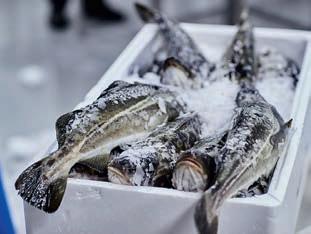
Norcod said its key tasks going forward are: “Firstly, a continued vigilant focus on cod biology and fine tuning of the feeding regime, the production processes, and the utilisation of production capacity.
“Secondly, stepping up efforts to develop the market and positioning our product in a premium niche category.”

The Hydrotech Drum Filter Value series focuses on reduced maintenance, increased component quality and simplified operation – all to give your plant maximum filtration performance at a minimum operational cost.

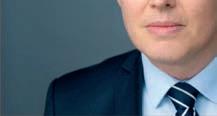


MOWI has decided not to appeal against the court decision which rejected its claim over Norway’s “salmon tax”.
In April the district court in Hordaland threw out the salmon giant’s lawsuit against the tax, also known as the “ground rent” or “resource rent” tax. Mowi CEO Ivan Vindheim has been the industry’s strongest critic against the tax.
The company has claimed that the legislation is unfair, discriminatory and contrary to the rules of the European Economic Area (EEA) of which Norway is a member.
The company has decided not to continue down this route. However, another approach may be on the cards.
According to the business news site e.24, Mowi has accepted that the decision of the Storting (the Norwegian Parliament) cannot be challenged on a general basis.
It added that the government’s Attorney General, Fredrik Sejersted, was waiting to see if the company will take a different legal approach.
“In our view, it is obvious that the ground rent tax is fully compatible both with the Constitution, EEA law and the ECHR,” Sejersted said.
The tax was voted in by parliament a year ago although the rate was cut from the government’s original proposal of 40% to a compromise of 25%.
Norway’s national broadcaster NRK said the state believes that Mowi must wait until it has a concrete tax decision to complain about, and that there is no basis for taking legal action against a decision from the Storting.
Mowi believes that the case in the district court was of a purely procedural nature to determine when a case about the legality of the penalty claim in the new ground rent model can be tried. The company has said it may yet proceed with a lawsuit.
Finance Minister Trygve Vedum, who introduced the salmon tax, said Mowi’s decision was good for the company and the industry.
The Conservative Party, which is currently riding high in the polls, and its right-wing ally the Progress Party have said they will scrap the tax if elected next year.
Mowi may yet have to wait for that eventuality before the issue is finally sorted out.
NORWEGIAN and Canadian salmon farmer Grieg Seafood has reported a near £7m drop in operating profits for 2023.
They were pushed down in large part by serious biological problems in Finnmark, which included the Spiro parasite and jellyfish attacks These, together with low sea temperatures, affected mortality, fish health, welfare and quality.
Grieg produced a 2023 harvest of 21,075 tonnes, up by around 5,700 tonnes on 2022.
The operational EBIT was NOK 292m (£21.4m) compared with NOK 385m (£28m) in Q1 last year. The operational EBIT per kilo was NOK 13.8 against NOK 25.1 in 2023.
The group expects a 2024 harvest of 81,000 tonnes.
It was not all bad news from Norway with Rogaland delivering its second best quarterly results.
And the company’s Canadian operations saw the successfully completed harvest of the first generation in Newfoundland, with a high share of superior quality fish.
Grieg CEO Andreas Kvame said: “The underlying biology is improving in all of our farming regions. Our Finnmark operations were affected by historical biological challenges,
including the Spiro parasite and string jellyfish. “Coupled with low seawater temperatures, the challenges impacted survival, fish health, welfare and quality. I am not satisfied with the fish welfare situation during the quarter.”
He said Grieg continued to implement a variety of improvement measures, including a new vaccine against winter ulcers, a UV filter against Spiro and sea lice treatment capacity with improved welfare.
“We are also making changes to our production planning and reducing biological risk as our post-smolt strategy is gradually rolled out in our regions. Because of our long production cycles, it takes time to see the results of our measures.”
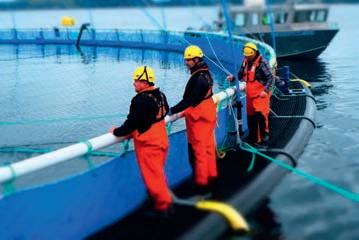
THE salmon giant Cermaq is expanding its Norwegian business with the purchase of the family-owned company Ballangen Sjøfarm.
Based in the north of the country, Ballangen Sjøfarm employs around 50 people and produces 10,000 tonnes of salmon a year.
Otto Bakke, one of the founders, said that after 13 years of co-operation with Cermaq, he was sure this was the best solution.
Cermaq, which is owned by the Japanese industrial giant Mitsubishi, already has a stake in the business.
Ballangen Sjøfarm currently has three owners; Ballangen Holding, Ballangen Utvikling and Cermaq. The latter two will be the owners going forward. Cermaq will be the majority owner with the exact share of equity to be clarified later.
The company was started in 2001 and Otto Bakke said it was important it should continue to be an important cornerstone and safe workplace for the community where it is based.
“We have been concerned that Ballangen Sjøfarm’s employees and operations should continue and continue to be developed,” said Otto Bakke.
“This is included as part of the agreement. Ballangen Sjøfarm will thus be able to face the future even more solidly.”
The company name and administration will be maintained in Ballangen and the purchase will not entail any changes for the company’s 50 employees.
“Having cooperation with Cermaq since 2011 has been a great advantage, which operations and results clearly show. Therefore, we are confident that the future looks bright for employees and the company’s further
development,” said the chairman of Ballangen Holding, Svein Bakke.
In the joint operation since 2011, Ballangen Sjøfarm has been responsible for the dayto-day operations at sea, while Cermaq has been responsible for smolt, slaughter, processing and sales in addition to operational support for lice treatments. Service operations, and accounting and financial services have also been part of this. The companies are therefore well acquainted with each other.
Cermaq Norway CEO Knut Ellekjær said: “We are both humbled and proud to be the preferred buyer of one of the country’s best-run farming companies with 50 skilled employees. As the owner of locations in small coastal communities in Nordland and Finnmark, we know how important Ballangen Sjøfarm is to the people who live there and the ripple effects this creates.
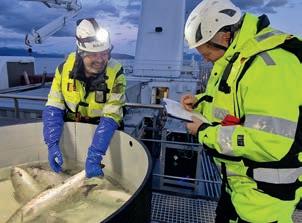
“We will strengthen this with great faith in increased activity for the company going forward,” Ellekjær added.
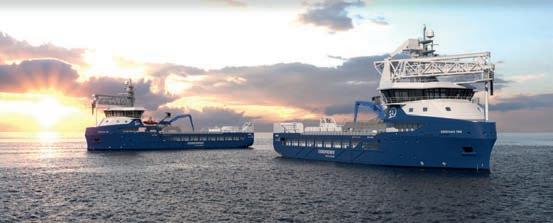
TWO ultra-modern vessels have been commissioned for the Norwegian feed transport company Fjordfrende, which is jointly owned by Skretting and Cargill.
The boats are due to be delivered in 2026 and will have a hybrid dieselelectric propulsion system with a large battery pack, as well as engines that will be able to run exclusively on biodiesel.
The cost for both ships is estimated at NOK 950m – or just over £70m.
The contract has gone to the Norwegian company Eidsvaag although it is understood the vessels will be built in Bilbao, Spain.
In 2019 Skretting and Cargill decided to co-operate on the transport of fish feed in Norway.
Instead of ships with two separate names sailing close to each other on the same routes, they agreed to collaborate on transport under the name Fjordfrende with their feed moved by the same vessels.
This, they said, would limit fishing traffic and reduce greenhouse transmission by at least a fifth.
The first new vessel is to be completed in the first half of 2026 and the other in the second half of that year.
Fjordfrende has now been operational for almost five years.

DESPITE a series of challenges this winter, the Lerøy Seafood Group has announced better than expected 2024 first quarter results.
Lerøy, which also owns one of Norway’s largest white fish trawler fleets, produced an operational EBIT or operational profit of NOK 842m (£62m).
This is down from NOK 989m (£73m) in Q1 last year, but the outcome is far better than what was being predicted.
CEO Henning Beltestad said: “We have had a good quarter in aquaculture with strong biological development.
“In light of very cold sea
temperatures, our fish grow well. It is also very pleasing to note a significant improvement in biology and earnings in Scottish Sea Farms (in which Leroy owns a half share with SalMar).”
Lerøy generated a Q1 operating income of NOK 7,110m (£522m), up from NOK 6,791m (£494m) a year ago.
Beltestad said the group’s downstream business (VAP S&D) generated an operational operating profit of NOK 176m (£13m) in the first quarter. This, he explained, had been driven by operational improvements, high capacity utilisation in Norway and increased product prices.
He added: “With our fully integrated value chain, we have an advantageous position with high processing capacity in Norway, which we have utilised well in the quarter.”
The CEO concluded: “We have good momentum.”










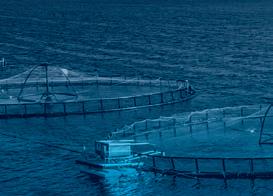
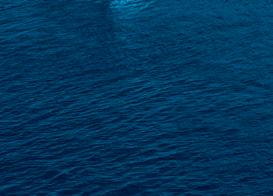






























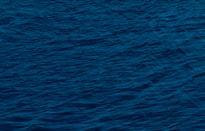

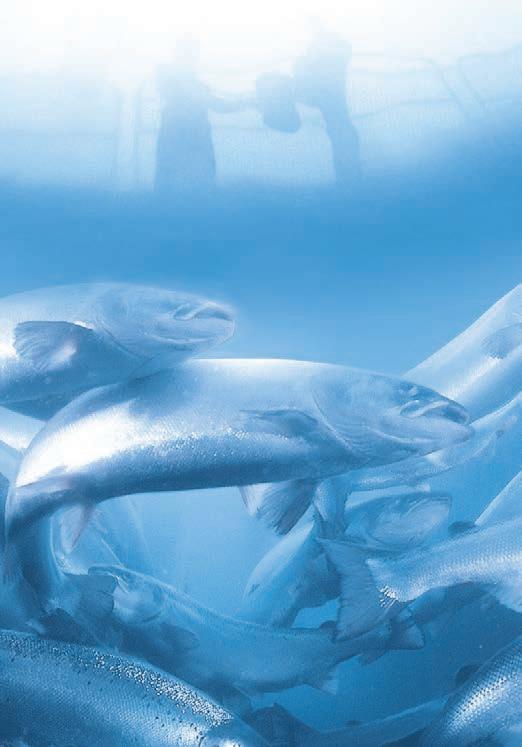



THE Japanese aquaculture company
Soul of Japan has secured a huge 33 billion yen loan (£165m) to develop and build a RAS salmon facility in the country.
Soul of Japan (SOJ) said the RAS (recirculating aquaculture system) facility, currently under construction, will be Asia’s largest land-based salmon farm. It will stretch over 135,000 square metres and have a capacity to
produce 10,000 tonnes of Atlantic salmon.
The Tsu plant will be bigger than the Mount Fuji project led by the Norwegian company Proximar Seafood, and reflects Japan’s growing ambition to become a leading producer of Atlantic salmon. Proximar is now close to achieving its first commercial harvest.
SOJ is working with Pure Salmon
Technology, which will be providing the advanced RAS system for the plant.
The loan is from Sumitomo Mitsui Banking Corporation (SMBC) and the transaction is being supported by 8F Asset Management, an asset manager of private equity funds that also owns the Pure Salmon Group.
The SOJ project will be built at Tsu City in central Japan, close to the large city of Nagoya.
Erol Emed, CEO of Soul of Japan, said: “This debt financing allows us to accelerate our growth and contribute to Japan’s food security while minimising our environmental footprint. We are committed to delivering high-quality, locally produced salmon to consumers.”
Karim Ghannam, Chief Investment Officer at 8F Asset Management, said: “We are excited to work with SMBC, the banking group and the management teams of SOJ and Pure Salmon to facilitate this transaction that recognises the importance of sustainable aquaculture and its positive impact on Japan’s economy and the environment.”
A GROWING global middle class and an ageing world population looking to eat healthy food are driving Atlantic salmon consumption, the industry giant Mowi says in its 2024 Salmon Farming Industry Handbook.
It also warns, however, that the industry is reaching the limits of growth unless there are significant improvements in production technology and fish health.
Mowi’s annual review of salmon farming is a yearly attempt to give a clear picture of the sector, how it operates, its challenges and the worldwide benefits it brings.
The handbook reveals that the supply of Atlantic salmon has increased by 527% since 1995 (annual growth of 7%). The annual growth in the period 2013-2023 was 3%.
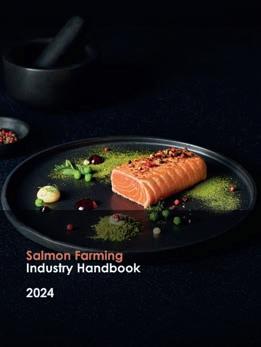
Mowi said it expects future growth from 2023 to 2028 to remain relatively stable, however, at 2%, as the industry has reached a production level where biological boundaries are being pushed.
The handbook says: “Future growth can no longer be driven only by the industry and regulators as measures are implemented to reduce its biological footprint.
“This requires progress in technology, development of improved pharmaceutical products, implementation of nonpharmaceutical techniques, improved industry regulations and intercompany cooperation.”
It says: “The industry is a good fit with the global macro
trends, as Atlantic salmon is a healthy, resource-efficient and climate-friendly product produced in the sea.
“The global population is growing, resulting in increased global demand for food. The world’s population is expected to grow to almost 10 billion by 2050.
“The health benefits of seafood are increasingly being promoted by global health authorities. The EAT-Lancet Commission recommends increased consumption of fish, dry beans and nuts as sustainable, healthy protein sources.”
Highlighting salmon’s now well-known omega-3 health benefits, the handbook says that wild fish stocks were now more or less fully exploited.
“The middle class is growing in large emerging markets, allowing more people to eat different, and more nutritious, protein rich foods, such as fish, meat and eggs.
“Consumption of high-quality proteins is expected to increase,” the publication says.
It points out that climate change is the greatest environmental challenge the world has ever faced.
“Soil erosion is a growing issue for food production, challenging the world to investigate new ways of feeding the population.
“Concerns about climate change are influencing dietary choices. Increased consumption of fish can reduce global GHG emissions and improve human health.”
NORDIC Aquafarms has launched a legal action against a local authority in Maine, USA, in an effort to keep its plans for a large landbased salmon farm on the US east coast alive.
The company is asking the Maine Superior Court to reverse a decision by the City of Belfast, Maine, which has had the effect of denying Nordic Aquafarms access to a vital area of intertidal mud flats on Penobscot Bay, required for the farm’s outflow pipes.
After a long dispute over ownership of the area, the city initially brought an “eminent domain” action enabling it to seize the land in question and enable the fish farm to go ahead.
Following a vocal campaign by environmental groups, the city reversed that decision, and Nordic Aquafarms is now challenging the change of policy.
The proposed RAS (recirculating aquaculture system) salmon farm is estimated to represent a capital investment of at least $500m (£383m). Nordic Aquafarms has faced numerous legal challenges over its proposals, but this is the first lawsuit the company has initiated.
“Having the Superior Court determine Nordic’s rights following the council vote is an important part of the development process, and Nordic is committed to seeing it through,” the company’s Spokesperson Jacki Cassida said.
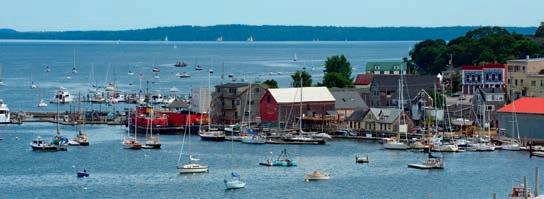
AQUACULTURE production in Queensland, Australia, saw an impressive 17% increase by value in 2022/23, thanks largely to shrimp farming.
The annual Ross Lobegeiger report, published by the Queensland Government, shows that aquaculture production in the north-eastern Australian state was worth AU $263.2m (£137m) in 2022/23, up from AU $224.7m (£117m) in 2021/22. Over 24 years the industry has grown at an average of 7.1% per annum.
Production by volume was 13,528 tonnes, up 3.9% on 2021/22. The numbers employed in aquaculture fell from 889 to 855.
The mainstays of the industry are prawn (shrimp) and barramundi, also known as Asian sea bass. Prawn production accounted for just over 80% by value, and barramundi around 14%. Other freshwater fish, including silver perch (Bidyanus bidyanus), jade perch (Scortum barcoo), and Murray cod (Maccullochella peelii peelii), represented less than 2%.
Regionally, the biggest share of production is concentrated around Mackay:
• Mackay AU $161m (£84m)
• Cairns AU $51m (£27m)
• Gold Coast AU $23m (£12m)
Prawn production grew 12.6% in 2022–23.
Mark Furner, Minister for Agricultural Industry Development and Fisheries and Minister for Rural Communities in Queensland, said: “The Queensland Government’s support for the aquaculture industry has helped to make it one of Queensland‘s fastest-growing primary industries.”





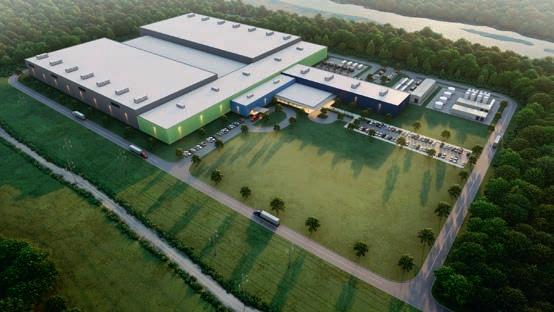
LAND-based start-up Katahdin Salmon has received a $5m (£3.9m) grant for remediation of its proposed recirculating aquaculture system (RAS) plant in Maine, in the north-eastern United States.
The company is also rebranding as “Great Northern Salmon”.
Marianne Naess, CEO of Great Northern Salmon, said: “Katahdin Salmon has been a good name for the initial development phases in Maine. Now that the company is entering into a new phase, it is the right time to transition to a name that reflects the developments of the company and the way forward but that still ties the company to the local community.”
The remediation grant, for the US Environmental Protection Agency (EPA), will be used to ensure the plant, based on the site of an old paper mill, is free of pollution from its former industrial use. The grant was awarded to the company’s development partner
Our Katahdin for the remediation of the project site in collaboration with Katahdin Salmon. This grant comes in addition to $1m (£787m) in funding from the Maine Department of Economic and Community Development for the same purpose.









Our Katahdin is a volunteerdriven not-for-profit organisation working to promote community and economic development in the Katahdin region.
The Millinocket facility will be located on the 1400-acre property that belonged to the Great Northern Paper Company which permanently closed in 2008. When the Millinocket Mill opened in 1900, it was the world´s largest paper mill. It was the first paper mill to
have an on-site hydro generation and distribution facility.
Nofitech selected for RAS design
The RAS system for the plant will be designed by Norwegian business Nofitech.
Dean Guest, Head of RAS Technology at Great Northern Salmon, said: “It became clear as soon as we started exploring future collaboration that we see things the same way and that Nofitech has a design that is compatible with our bioplan. Nofitech´s reputation for delivering on expectations for cost, performance, and schedule... was also an important factor.”
Contractors from across the country have shown interest in the remediation project, which will be managed by Sevee & Maher Engineering. The contractor is expected to be selected within the next few months with a remediation starting later this summer.
Sean DeWitt, President of Our Katahdin, said: “We are delighted to announce that we have been awarded a $5 million grant from the US Environmental Protection Agency (EPA). The grant will play a crucial role in remediating 26 acres of the former mill site’s wastewater lagoon. This EPA-funded project will clear the way for Great Northern Salmon’s (formerly Katahdin Salmon) aquaculture project which has secured major project permits and is scheduled to begin construction in 2025.”
Great Northern Salmon, formerly Katahdin, is a venture of Xcelerate Aqua, which was founded by Marianne Naess and Erik Heim, who left Nordic Aquafarms in 2022.
US-based aquaculture genetics specialist the Center for Aquaculture Technologies (CAT) is spinning out its Canadian subsidiary into a separate business.
CAT said the move was “part of a strategic alignment to optimise technical specialisation”.
Center for Aquaculture Technologies Canada (CATC) will operate as an independent company, although both will remain part of the portfolio of CAT’s parent, Cuna del Mar. The US and Canadian arms will continue to collaborate while operating under separate governance and management structures.
CAT, headquartered in San Diego, California, will maintain its focus on advancements in the aquaculture genetics sector. CAT houses state-of-the-art genotyping laboratories and a team of genomics and bioinformatics experts, capable of developing custom genetic tools for any aquatic species.
As well as its breeding expertise, the company also advises on genetic improvement programmes, ranging from mass selection and genetic diversity management to advanced
techniques like genomic selection.
Meanwhile, CATC, a contract research organisation with GMP (good manufacturing practice) release capabilities, will continue to operate its facilities in Souris and Victoria, Prince Edward Island, Canada. CATC will retain focus on health and nutrition research for aquatic animals, supported by diagnostic services and a commercial-scale feed extruder.
John Buchanan, CEO of CAT, commented: “The realignment empowers CAT to pursue innovation in genetic improvement with singleness of purpose and strategic focus. We are excited about the opportunities in bringing our genome editing technologies to commercial impact while honouring environmental stewardship. We have a world-class team in all genetics disciplines, are committed to client success, and are excited about the future.This will also allow CATC to pursue strategic initiatives in health and nutrition with agility and allow both teams to focus on innovation.”
The senior management and frontline teams for both organisations will remain in place, CAT said.
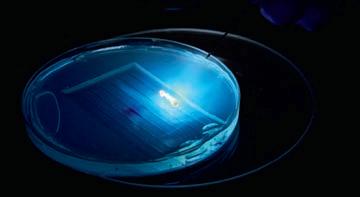
Newly appointed CEO of CATC, Myrna Gillis, added: “The realignment presents us with a unique opportunity to deepen our expertise in health, nutrition, diagnostics and specialty feed production while forging new pathways for research and development. We are excited about the prospects this brings and are committed to driving meaningful contributions to the growth of the aquaculture sector. We also express thanks to our founder John Buchanan for his vision and leadership, and for the initiative in charting the exciting new direction for both organisations. Look for additional updates from us soon.”
Gillis has been overseeing the focus on health and nutrition since November 2023.
A COURT in Chile has lifted the bankruptcy order made against struggling salmon company Nova Austral.
Previously, the chief judge of Porvenir in Pablo Aceituno had ordered the opening of a bankruptcy liquidation process, requesting the Superintendence of Insolvency and Re-entrepreneurship to nominate a liquidator. The resolution also set out the background of the three main creditors.
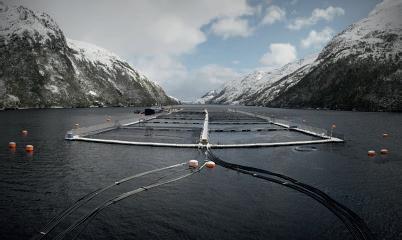
It appears that two creditors, feed producer Nutreco and another creditor, smolt supplier Salmonera Dalcahue Limitada, were unhappy with the terms of the reconstruction deal for Nova Austral reached in January.
It was another creditor, however - reportedly Cargill’s feed subsidiary EWOS - which applied for the bankruptcy order to be overturned.
Recent financial reports show that Nova Austral’s losses almost trebled last year despite much higher revenues. Its accounts for 2023 show pre-tax
losses of just over $US 144m (£128m) against $49.9m (£44m) in 2022.
Nova Austral, which employs more than 3,000 people, says in its annual report that this situation is a fundamental consequence of the substantial drop in the company’s production levels, due to the revocation of three aquaculture concessions carried out by the environmental authority (SMA) starting in 2022. These were reversed in the first instance by the environmental court during the month of January 2024. The company also cites the financial costs associated with the issuance of the bond in Norway.
Despite this Nova Austral remains reasonably positive about the future. It says in its 2023 annual report that its sales come from a highly diversified client portfolio, where clients are economically and geographically dispersed in countries with low sovereign risk rates (mainly the United States and in the European Union).
EXCITEMENT is growing at Proximar Seafood which is closing in on the first harvest of Atlantic salmon at its new site near Mount Fuji, Japan. Reporting its 2024 first quarter results, the company is expecting to achieve this significant goal in September.
It also will make history by becoming the first producer of Atlantic salmon in Japan.
CEO Joachim Nielsen said everything is on track supported by favourable biological






conditions, stable water quality and good fish health.
The operational activities are increasing in the post-smolt grow-out (PSG) building as planned.
The second module of the PSG will be put into operation during Q2, with the remaining two to follow in H2 this year.
The targeted long-term harvest level for Proximar is 5,300 tonnes (HOG) per year in Phase 1, with a gradual ramp-up from the first harvest.
Estimated harvest volumes for 2024 and 2025 combined are expected to be around 4,700 tonnes (HOG).
Proximar said the 2024 target harvest volume will be communicated closer to first harvest announcement.
Standing biomass at the end of the quarter was
111.9 metric tonnes, up from 39.8 metric tonnes at the end of Q4 2023. By mid-May the biomass was 188 tonnes.
CEO Nielsen added: “We are pleased to see the standing biomass increase at pace, whilst the growth of the fish remains according to expectations.”
Proximar said the first quarter highlights included:
• Fish stock growth, with total biomass at 111.9 metric tonnes by the end of Q1 2024
• Increased operational activity in the postsmolt grow-out building, now with multiple batches in production
• Raising NOK 165m (around £12m) in a private placement and repair offering
• Extending the repayment date for the JA Mitsui Leasing (JAML) loan until December 2025.























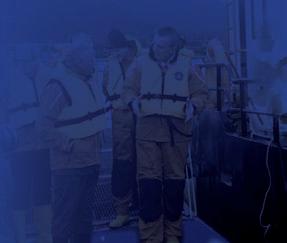






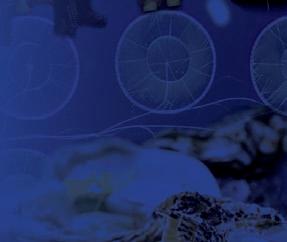
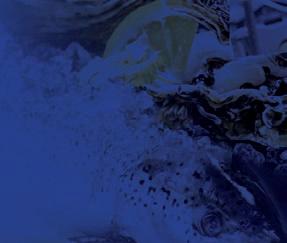


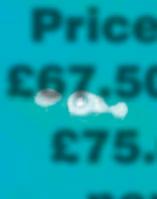


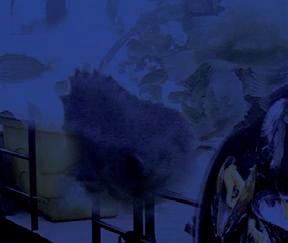











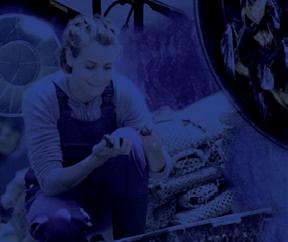







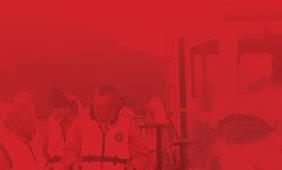


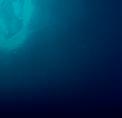






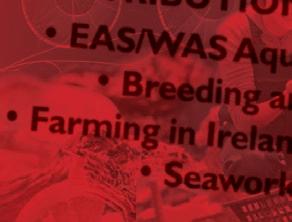

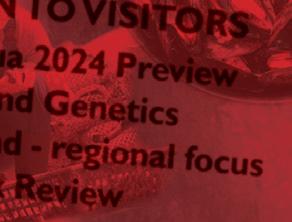





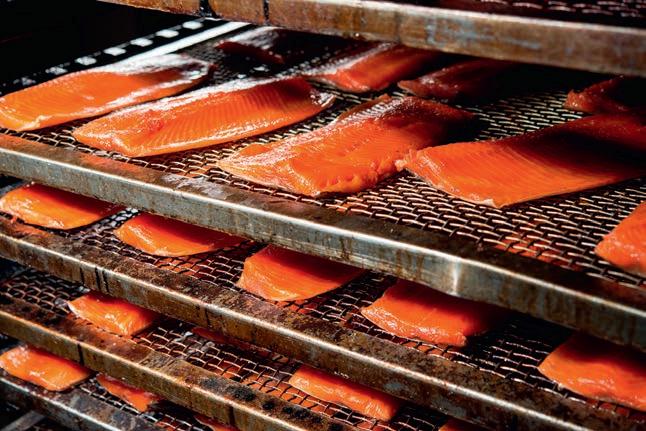
THE European Parliament has decided to press ahead with a potentially controversial change to the regulations around smoked salmon processing.
Objections had been raised by the processing sector but they were rejected by the Strasbourg-based parliament.
The new regulations centre on part of the production system known as the “stiffening process”.
The changes were first proposed by
the European Commission and adopted by the parliament last week despite mounting concerns.
The European Parliament believes that the planned changes will greatly improve food safety and cut waste.
Stiffening involves reducing the ambient temperature of fresh salmon to between minus four and minus 14 degrees centigrade after it has been filleted and smoked to help protect against Listeria-type bacteria. And
NOMAD Foods Limited has announced the appointment of Ruben Baldew as Chief Financial Officer, effective June 17, 2024. Baldew will succeed Samy Zekhout, who is leaving his position to explore new opportunities outside of Nomad Foods.
Zekhout’s contribution was praised by Stéfan Descheemaeker, Nomad Foods’ Chief Executive Officer, who said the CFO will remain with the company until July 31, 2024, to assist in the orderly transition of his duties.
Baldew joins Nomad Foods with over 20 years of global consumer products experience, most recently as CFO of Accell Group from November 2018 until October 2023.
Prior to Accell Group, Mr Baldew spent over 15 years at Unilever in various finance roles with broad, international experience in the Netherlands, Belgium, Switzerland and Thailand.
there have been a number of salmon Listeria outbreaks in Europe over the past year.
But the industry fears it will cost many jobs especially in large salmon processing countries such as Poland and Denmark.
The Polish Association of Fish Processors (PSPR) has already expressed serious concerns, especially around the time involved in stiffening.
It is concerned that despite serious concerns by the industry, the parliament has now gone ahead without taking them into account.
With an output of more than 200,000 tonnes and a value of over £1 billion, Poland is by far Europe’s largest smoked salmon processor.
A spokeswoman for the association said the change will add complications and reduce the time involved in stiffening to 96 hours.
Until now there has been no time limit for keeping salmon at the stiffening temperature before slicing.
“The change will add complications ”
Nomad is the company behind several iconic seafood brands including Findus, Birds Eye and Iglo, the largest frozen fish brand in Austria.
Earlier in May Nomad reported Q1 results with revenue up 1.1% to €784m (£667m), but adjusted EBITDA down 16.4% to €122m (£104m).
CEO Descheemaeker said the business had seen a “solid start to the year” with tangible progress on key growth objectives.
Nomad maintains its full year guidance, expecting to deliver revenue growth of 3%4%, adjusted EBITDA growth of 4%-6%, and adjusted EPS of €1.75-€1.80.
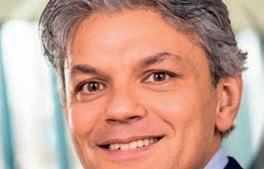
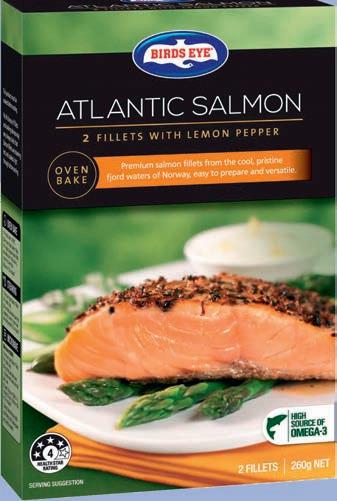
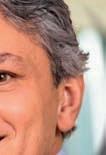

SEAFOOD is continuing to provide a significant contribution to the performance of the Hilton Food Group.
The group’s principal UK seafood operations, which include farmed and wild caught fish, are based in Grimsby where its production centre supplies the UK retail and food service trade.
In a first quarter update, Hilton said trading was in line with the board’s expectations with volume and sales ahead of the same period last year.
In UK & Ireland, both volume and revenue are ahead of last year, benefiting from a strong Easter trading period as well as slowing inflation and good growth in Ireland, while the momentum of the UK (Grimsby) Seafood turnaround continues.
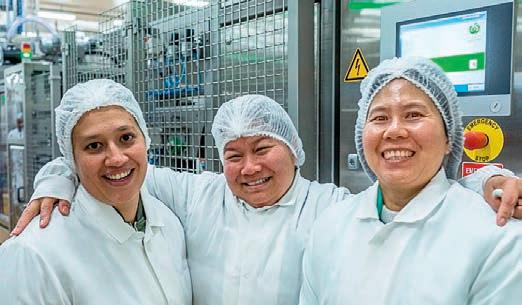
In Europe, the core meat and easier meals business continues to perform well, with volume and revenue ahead of last year.
The update added: “In APAC, as expected there has been more normalised volume growth from our three facilities in Australia and our food park in New Zealand, following strong growth in 2023, with revenue seeing some impact from changes in mix and deflation.
“We continue to build our long-term partnership with Walmart in Canada and remain on track for the 2027 launch of our multi-protein
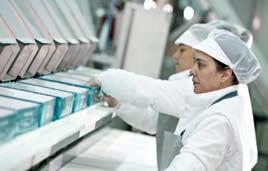
ICELAND Seafood Interna�onal (ISI) has reported a good start to 2024 a�er a difficult �me last year. It expects to see sales volumes increasing as salmon prices fall.
The company, which withdrew from UK produc�on a�er selling its Grimsby seafood site, said profits almost doubled during the first quarter despite lower sales. It is a major supplier of salmon to the retail trade.
The 2024 Q1 normalised profit totalled €1.9m (£1.6m) against €1m (£862,000) a year ago. Sales, however, were down by 8% at €113.8m (£98m). The company said the early Easter this year had an impact on revenues.
The company said that higher than expected salmon prices impacted sales volume during the quarter.
“These increases in salmon prices caused similar challenges as in the same period last year, as it takes �me to push cost increases through to customers.”
The company added: “Based on the Q1 results and current trading, the normalised PBT [profit before tax) Outlook range for 2024 is maintained at €5.0m to €7.0m.
“The outlook for our main species is that cod prices will remain high un�l fall, while salmon prices will come down in Q2 and remain stable throughout the year... we expect all divisions to perform according to budget and do not foresee huge changes in the seafood sector in the coming months.”
CEO Ægir Páll Friðbertsson said: “The first quarter of 2024 is more in line with what we have previously seen as normal condi�ons in the white fish markets... however, salmon prices were higher in the first quarter than forecasts had assumed, and therefore, there was a loss in salmon ac�vity as there was in Q1 the two previous years.
“If the forecasts for salmon prices are met, prices should decrease in the third quarter.”
He added: “A�er a difficult 2023 due to the burden of our UK (Grimsby) opera�on and challenging external environment, this is a welcome sign in markets for white fish, a step in the right direc�on.”
facility, starting with beef, lamb, pork, seafood, some added-value products and robotised store order picking services.”
The company’s Sustainable Protein Plan underpins the Hilton Foods strategy, with ambitious targets across each of its core pillars of People, Planet and Product.
With “Planet” and “Product”, it had validated revised, more ambitious science-based targets across Scope 1, 2 and 3 emissions aligned to a 1.5 oC pathway and reaching net zero by 2048.
Looking ahead, Hilton said its trading performance since the start of 2024 has been in line with the board’s expectations. The business remains well positioned for the year ahead despite the continued challenging market environment and economic conditions.
“Our short and medium-term growth prospects are underpinned by the strength of our multi-category offer and continued progress in our UK Seafood business.
“We are well placed to deliver long-term value to all stakeholders through our customer partnerships and with our strong financial position, we continue to explore further growth opportunities and wider geographic expansion.”
A LEADING UK marine charity has called for an investigation into the way that scampi is being described and marketed.
Open Seas has lodged a complaint with the Competition and Markets Authority over the way supermarkets describe this popular UK seafood product, whether it is caught or cultivated.
Many supermarkets describe scampi as being responsibly sourced, but Open Seas says this is quite misleading – an accusation strongly denied by retailers.
The charity has been campaigning against scampi sourcing for some time, arguing that the majority of UK consumers – around 80% - don’t know that scampi is made from langoustine. These shellfish are being caught by highly damaging fish techniques, the organisation says, in particular bottomtrawling, which comes with a large proportion of by-catch for every kilo of langoustine trawled.
Open Seas also says that instances of exploited migrant labour have been found in the UK fishing fleet.
Nick Underdown, head of campaigns with Open Seas, said: “Catching large volumes of young fish against scientific advice is not responsible. Trawling over fragile marine habitats is not responsible. An increased risk of forced labour and human trafficking within the scampi supply chain is not responsible.
“Businesses failing to address these problems is not responsible. The way scampi is produced has all the hallmarks of an irresponsible fishery.
“We’ve raised these concerns with supermarkets, but they continue to sell scampi as ‘responsibly sourced’.”
The British Retail Consortium said that retailers were committed to sourcing scampi responsibly, working closely with stakeholders and suppliers to ensure products meet customer expectations on sustainability.






Several UK supermarkets and scampi producers such as Young’s and Whitby Seafoods told the BBC that they are active in a number of organisations working in the field of environmental protection and sustainability, including the Marine Stewardship Council.









A new podcast on the future of wild salmon features numerous guests, but only one narrow viewpoint, argues Dr Martin Jaffa
AQUACULTURE UK at Aviemore was a celebration of the aquaculture sector and especially the Scottish salmon farming industry. However, not everyone is keen to applaud salmon farming, especially those from the wild salmon sector.
The Last Salmon is a podcast hosted by “renowned actor Jim Murray and award-winning producer Daire Whelan” which is claimed to offer hope and solutions to the tragic story that is unfolding for this iconic species.
Sadly, the majority of the 11 episodes are nothing but an attack on the salmon farming sector. Each episode features a special guest or guests who are encouraged to talk about the perils of salmon farming for wild salmon.
In the episode featuring Alexandra Morton, Jim and Daire begin by saying that “the whole point of this podcast is to get people talking, to get people discussing Atlantic salmon and if we are going to ‘prod a few bears’ with the odd guest with contentious opinion then so be it”.
Yet, the podcast is only interested in one side of the story; that from the angler’s perspective and thus any hope for the future of this species will be extremely limited. Despite offers to provide

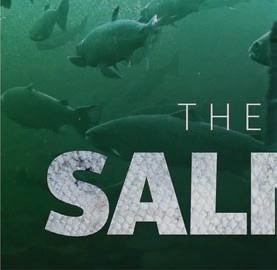
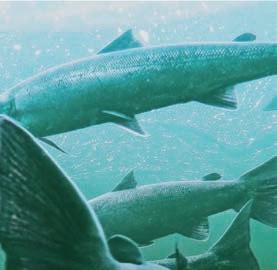

another view, Jim Murray doesn’t think that, for his intended audience, having someone appear from the salmon farming sector would be a great fit. This is because his views on salmon farming come from an extremely restricted knowledge base. It is only necessary to look at the qualifications of some of his guests, especially those with an opinion on salmon farming, to understand the narrative.
Guests include: Yvon Chouinard, founder of Patagonia and angler; Jesper Pääkk nen, actor and angler; Alexandra Morton, salmon scientist and activist; Matt Harris, angler, activist, photographer; Mikael Fr din, angler, guide and activist; Elvar Fri riksson, North Atlantic Salmon Fund and angler; Dominic West, actor and angler (although he has yet to appear); Paul Whitehouse, actor and activist; and Simen Saetre, co-author of the Patagoniapublished book The New Fish
The reason that the angling sector has such a negative view of salmon farming is, of course, down to the fact that they only hear their own view. It is a view that developed in the early 1980s and has never changed although the understanding of what is happening to wild salmon has much improved since then.
What is more concerning is that Mr Murray is not just an actor and now podcaster, but also an ambassador for the Atlantic Salmon Trust and the Angling Trust. Clearly, these organisations are happy to involve people with extremely blinkered views. However, my experience with the Atlantic Salmon Trust is that even this supposed science-based organisation isn’t interested in discussing any science except their own science.
There is far too much to cover from over 11 hours of podcast, so I am just focusing on one episode. This features Mikael Frődin, someone I have come across in
 Above: Wild salmon Left: The Last Salmon podcast
Above: Wild salmon Left: The Last Salmon podcast
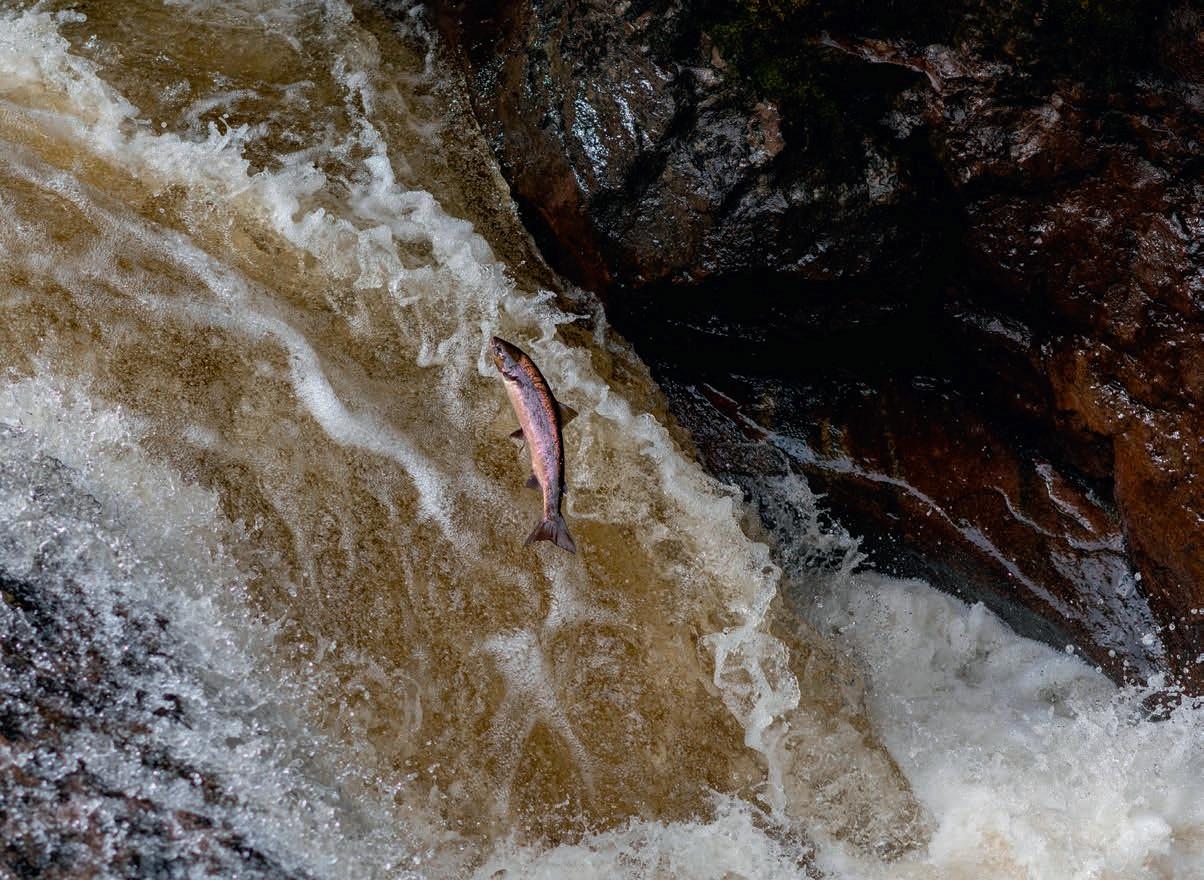
person. The podcast describes Mikael as a Swedish salmon maestro who used to fish 250 days each season in his younger days but as well as being an expert angler, he is an ardent conservationist who says he will never stop fighting for the wild salmon.
Mr Frődin attended the London premiere of the Patagonia film Artifishal in which he appeared. He sat on the panel along with Corin Smith and Andrew Graham Stewart and to my shame I never asked any questions. I had been stopped at the door with a request to desist from speaking out which I agreed to in exchange for a meeting with Patagonia. Sadly, Patagonia reneged on this agreement, although later their European manager agreed to speak to me on the phone, but he wasn’t interested in the slightest in hearing what I might have to say.
Mikael Frődin said on the podcast that it’s obvious that the biggest threat to wild salmon is from fish farming. He came into public awareness because he swam out to a salmon pen in Norway to take photos. He was sued by the farming company as he
His views on salmon farming come from an extremely restricted knowledge base
contravened the Norwegian Aquaculture Act preventing anyone moving within 20 metres of a pen. The case received a great deal of publicity as did Mr Frődin. It doesn’t seem to matter that he has done little else against salmon farming since as he continues to ride on that wave of publicity.
In the podcast, he says that if every salmon farm was taken out of the water, then within two decades, the salmon population will fully recover, but if the salmon industry is allowed to continue then within two decades, then all wild salmon will be gone. He says that the answer is to get all salmon farms into closed containment.
Mr Frődin reaches his conclusion from his experience in Norway where salmon farming can be found across almost all the coastline. In Scotland, the east coast rivers are free of salmon farming although some critics say that the decline on east coast rivers seen since 2011 is due to the fact that salmon smolts migrate north past salmon farms in Orkney and Shetland. Yet, prior to 2011, the east coast rivers were having their most fruitful years, and no-one suggested then that Orkney and Shetland farms were causing problems. These east coast rivers are now seriously under threat and blaming salmon farming will not stop the declines.
Removing salmon farms will not make any difference to wild salmon stocks, not just in the east but also in the west. This is because salmon farms are not the problem. The latest catch statistics published mid-May certainly don’t give any hope for a recovery of the Loch Maree sea trout fishery even though the farm in Loch Ewe closed three years ago.
Sadly it has proved impossible to correct any of the misconceptions spread by this podcast. Jim Murray sees any attempt to challenge his narrative about salmon farming as the work of an industry with a highly paid publicity machine that is ready to bend the truth to suit its own cause.
Podcasts are an extremely useful platform to provide open discussion of the issues but when that discussion simply becomes an echo chamber of unproven views, then all they are doing is hastening the prophecy of the last salmon.
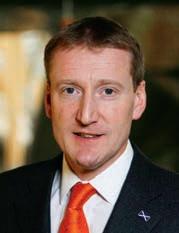

The UK general election may involve political upheaval, but it is also an opportunity for the salmon sector, explains Tavish Scott
IWAS in Westminster when the Prime Minister announced he was going to the country.
A meeting with Labour’s Shadow Defra (Department of Environment, Food and Rural Affairs) team to discuss the importance of our sector suddenly became even more pertinent, as the rumours of Rishi Sunak’s decision swept through political circles.
At the time of writing, Labour has a commanding lead in the opinion polls – as it has done for some considerable time – and the party is widely expected to form the next UK government. If that is what the voters choose, there will not only be a new incumbent of Number 10 Downing Street, but an entire new Cabinet and ministerial team – plus potential changes to what is called the “machinery of government” (“MOG”) by Keir Starmer’s chief of staff, Sue Gray.
There will be a lot of work for the Salmon Scotland team to ensure that we continue our early engagement on behalf of our sector.
But regardless of which party emerges victorious in the contest, Scotland will also be sending several new MPs to Westminster, and saying goodbye to others.




The SNP’s Ian Blackford, who represented the now abolished seat of Ross, Skye and Lochaber, has long been a champion for Scottish salmon – but he is now stepping down after a long political career.
I wish him well in retirement, and I’m sure he will still be a significant voice in politics.
In Na h-Eileanan an Iar, Angus MacNeil faces an uphill struggle now that he is an independent candidate, so the bookies are tipping Labour’s Torcuil Crichton to win that seat.
Torcuil understands the vital importance of our sector – and I went with him when we took Shadow Scottish Secretary Ian Murray to see a Bakkafrost Scotland farm there last year.
If the pollsters are right, Ian will be the new Scottish Secretary – so I was encouraged to see that he praised the economic contribution of Scottish salmon when he spoke at the launch of Scottish Labour’s election pledges in Greenock, alongside Keir Starmer.
And there may well be political changes in areas where our supply chain operates as well.
For example, the new Hamilton and

Above: Whatever happens on 4 July, Westminster will see some changes Below left: The Bri�sh people go to the polls next month
We have urged parties to support the continued success of the Scottish salmon sector

Clyde Valley seat takes in DFDS Logistics in Larkhall – the current MP is standing down, and Labour and the SNP are locked in a battle there.
So when the dust settles after July 4, we will be busy bringing all the new MPs up to speed on our sector.
The work to inform political parties is, however, well underway. We have urged parties to support the continued success of the Scottish salmon sector, the UK’s largest food export, and explained that we want to work with government to deliver sustainable economic growth, generate jobs in remote communities and in the UK-wide supply chain, and provide the best animal welfare in the world.
Our detailed asks were provided to all main political parties in advance of their manifesto publications.
Our key asks of the next UK government – whatever form it takes – are:
1) We want to see a more enlightened approach to the movement of labour into the UK, which recognises the unique challenges our coastal and rural farming communities face, including a change to key worker definitions and a broader public signal that the UK is open to people coming here to work.
2) We want a serious, pragmatic approach to the UK’s relationship with the EU, with a clear focus on the nation’s export businesses which depend on a positive, professional relationship with France and the other countries of the EU.
3) We need the UK and EU to create a bespoke and mutually convenient Sanitary and Phytosanitary (SPS) agreement which returns efficiencies to supply chains on both sides of the Short Straits to help consumers and businesses in both territories.
4) We need smooth trade flow and access to new markets. Specifically, the lack of a new eCertification for export health certificates (EHCs), together with problems in the current outdated system, is costing salmon farmers millions of pounds
every year. Improving the certification programme should be an urgent priority for Defra.
5) And there must be support for Scottish salmon as a UK geographical indication (GI) and continued consumer protection against the passing off, or mislabelling, of products as seafood where no seafood is present.
The political party manifestos will not go into this level of detail, but it is important that policy teams understand what our sector needs.
Away from the general election drama, the Salmon Scotland team has also been engaging with the Scottish Parliament’s rural affairs and islands committee, which is continuing its ongoing work programme looking at our sector.
The work is part of an inquiry that first started in 2018, so it is right for an update to be provided given that Scottish salmon is the UK’s largest food export, generating more than £750m for the Scottish economy and sustaining around 12,500 jobs.
But it is important that MSPs get a full picture of the salmon sector, and don’t just listen to urban-based activists who want to close farms.
If your local MSP is on the committee, I’m sure they would welcome your insight.
We are looking forward to committee members visiting a salmon farm later this autumn – many of them for the first time –so they can see for themselves the reality of our sector.
And most importantly, they must listen to the hard-working farmers who take care of their fish and deliver the highest animal welfare standards anywhere in the world.
That’s the same message that we will be delivering to their new Westminster colleagues after the general election.
It’s a time of major change in Scottish politics – and we’re here to ensure that all our elected representatives are given the facts about our Scottish salmon success story.
Tavish Scott is Chief Executive of Salmon Scotland.






Despite the absence of politicians thanks to the election, the SAGB Conference covered the whole range of the UK’s shellfish sector, as Nicki Holmyard reports
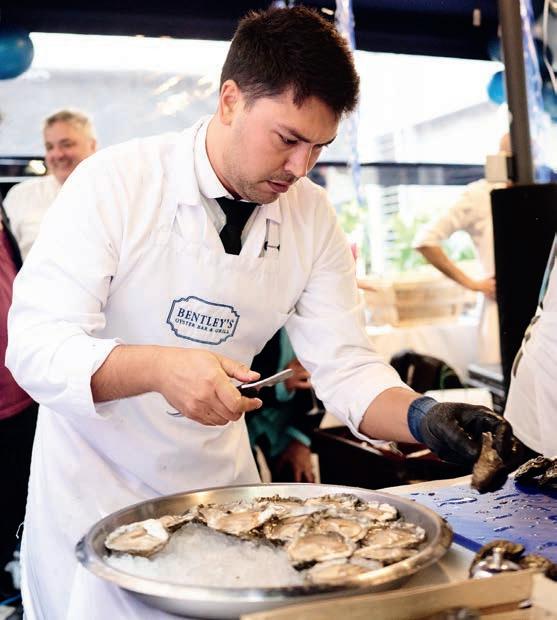
THERE’S always room for the best laid plans to go astray, and this is the situation that David Jarrad, CEO of the Shellfish Association of Great Britain (SAGB), found himself in at the end of May just three days before the 54th annual conference. The reason? The recent snap election announcement by the Prime Minister put government, civil servants and public bodies into “pre-election purdah”. This effectively meant that the keynote speaker, Fisheries Minister Mark Spencer MP, and the Shadow Minister for Defra (the Department for Environment, Food and Rural Affairs) were unable to deliver their speeches, the Defra Policy Lead in Marine and Fisheries Directorate, Thomas Valderrama, was unable to attend, and the MMO (Marine Management Organisation) had to temper its presentation. However, video presentations were supplied by Ministers from the devolved governments of Wales and Scotland.
The lack of government presence did not spoil what is always an
excellent and well-attended conference, held this year at the offices of The Crown Estate in London, with a lavish dinner at Fishmongers’ Hall.
Chris Leftwich, Chair of SAGB, opened the conference, saying that there has never been a greater need for a strong trade association for the whole shellfish sector, and with the demise of NUTFA, the New Under Ten Fishermen’s Association, which was dedicated to the <10 Fleet, SAGB was well placed to embrace new members.
He reflected on the global insecurities affecting trade, and issues that have affected both farmed and wild-caught shellfish over the past year. These include: Defra’s refusal to reverse a decision to class Pacific oysters (Magallana gigas) as an invasive, non-native species, with the knock-on effect that landlords such as the Duchy of Cornwall are not renewing licences, and oyster farmers are being forced out of business; profuse rainfall during the winter period affecting rivers and subsequently the coastal area, with 3.6 million hours of sewage spills affecting the classification of shellfish farms; widespread negativity about the water system affecting consumer confidence; and no progress made towards enforcing a “polluter pays” principle, under which fines could be used to improve the water system rather than sinking into government coffers.
SAGB has published two papers related to water quality in the past six months, one of which shows that restricting production will
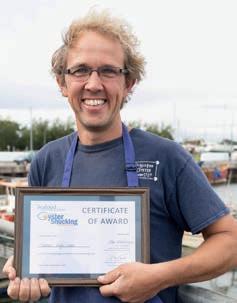
Dr Llucia Masorda-Cabre; Konstancja Woźniacka; Eleanor Adamson, The Fishmongers’ Company; Students inves�gate the “naked clams” project
Jersey now produces one in every three Pacific oysters sold in the UK
not prevent naturalised spread but suppress ecological and economic benefits to coastal communities, and the other looks at the socio-economic impacts of water quality on the UK’s shellfish aquaculture industry. Both make interesting reading.
Oyster updates
On a positive note, the London Oyster Opening Championships were resurrected last year thanks to oyster farmer Tristan HughJones of Rossmore Oysters and Loch Ryan Oysters, and chef Richard Corrigan and their success means that they will be run yet again in September this year.
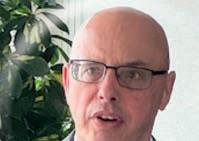
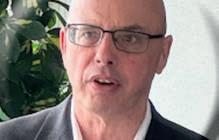
ability to remove carbon, nitrogen and phosphorus from the environment, and to maintain and improve water quality.
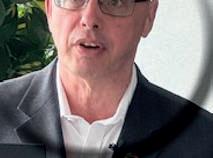


David Hugh-Jones, who started farming oysters in Ireland in the late 1960s, gave an enlightening talk about his life-long career during the Members Slot.
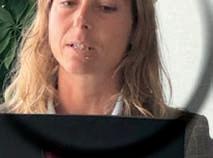

Matthew Albon-Crouch, Food and Drink Attaché at the British Embassy in Vietnam, looked at the opportunities for exporting fresh and frozen shellfish products to Vietnam, Indonesia and Singapore. He highlighted that the wider Defra AgriAttaché network offers world-wide coverage to help exporters develop new business.

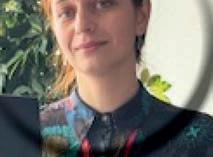
Stuart McLanaghan, Head of Responsible Sourcing for Seafish, spoke about the Seafood Carbon Emissions Profiling Tool, which has been developed to enable industry to understand the greenhouse gas emissions of their finished seafood products. The tool, which went live on 3 May 2024, will help seafood companies to estimate their carbon footprint, identify emissions hotspots, see how they compare with similar businesses, and be invaluable as a demonstration of green credentials. He encouraged everyone to sign up to this free service, which will become more useful as a benchmarking tool as more people use it.
Seafish Ecosystem Services Researcher Konstancja Wo niacka outlined the results of her work on the ecosystem services of bivalve shellfish. The benefits include their
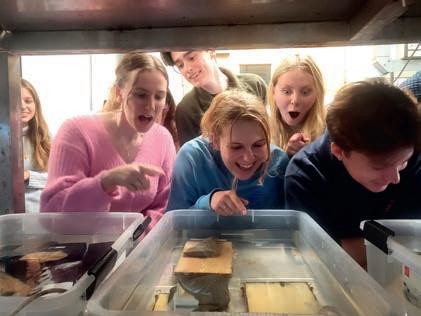
The overall value of marine ecosystem services and societal benefits in the UK is estimated at a staggering £211bn.
Francis Binney and Alexander Plaster, from the Government of Jersey, spoke of the importance of the shellfish aquaculture and fisheries to the island, which now produces one in every three Pacific oysters sold in the UK! Who knew? There is also a thriving lobster, crab and scallop fishery. They also highlighted that as an autonomous and selfgoverning Crown Dependency, which is officially part of the British Isles, Jersey exporters have been subject to the same major changes in export rules that were introduced during Brexit. These have adversely affected trading relationships with their close neighbour France, and a paper analysing the import and export issues is being prepared. The UK Sustainable Prawn Project was the subject of a presentation by Rod Wilson, University of Exeter. This project is examining whether land-based (recirculating aquaculture system) prawn farming, built with circular economy principles, using sustainable feed and powered by renewables, can be a viable alternative to importing more than £319m of king prawns (Penaeus vannamei) for UK retail sale alone. It is hoped that a demonstration farm in Scotland will be open soon for tours.
The “size of the prize”, a study commissioned by The Crown Estate and being undertaken by SAGB, was highlighted by Peter Lawrence, Director of Coastal Infrastructure and Minerals with the Crown Estate and Alex Adrian, Aquaculture Operations Manager with Crown Estate Scotland. The study seeks to provide a target for aquaculture growth that can be used to illustrate the vast potential of the farmed shellfish industry to contribute to the economy, food security and the environment; to draw up a roadmap of measures and interventions needed to achieve that; to outline how they should be implemented; and to show the effect of failing to implement them. The aim is for it to be “not just another SWOT analysis but to show what is within our grasp”.
Reefs” GOV.UK Fisheries Industry Science Partnerships (FISP) project is already showing great promise, according to Dr Llucia Masorda-Cabre. The project is using state-of-the-art equipment to document how sustainable aquaculture delivers both ecosystem and fisheries benefits, the latter through the spillover of commercially valuable species outside the de-facto marine protected area (MPA) provided by a large-scale shellfish farm, which itself provides nursery ground, food and shelter for both fish and shellfish species.
Dr David Willer, Cambridge University, is on a mission to turn “naked clams” –molluscs that devour underwater timber –from pest to profit. He explained that since he went public with his research, on national and social media, it has received more than 40 million views, 1.4 million likes, thousands of comments, and there have been over 40 videos on Facebook, Instagram, TikTok, and YouTube.
Celebrity chefs have been in touch with recipes they have designed using the clams, and 84% of people who have tried naked clams report liking them.
Much work lies ahead in order to scale up from lab to commercial operation, but Willer hopes to see a naked clam aquaculture sector operational in the UK within five years. He estimates that it could be worth US $64m (£50m) and that the global potential is far higher, at US $9bn (around £7bn).

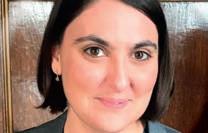
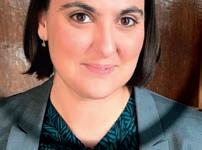
Eleanor Adamson, from The Fishmongers’ Company, told how her frustration that food teachers rarely include seafood in their classes, despite it being in the curriculum, led to her support for the Fish in School Hero programme. Launched in 2019, it has an estimated minimum reach of 90,000 children per year. Several shellfish producers have provided free products for cooking, for which 1,022 schools registered in 2023 and more than 2,500 teachers were trained to be confident in preparing and cooking fish with students. Feedback from teachers and students has been overwhelming, with many students (and teachers) trying and enjoying mussels, scallops, salmon and whitefish for the first time.
SAGB president Mike Mitchell closed the conference by announcing his retirement and was thanked by all for his service.
Find out more
The Plymouth University-led “Ropes to
Restrictions on UK aquaculture of Pacific oyster (Magallana gigas) will not prevent naturalised spread but suppress ecological and economic benefits to coastal communities: bit.ly/SAGB-magallana Socio-economic Impacts of Water Quality on the UK’s Shellfish Aquaculture Industry: bit.ly/SAGB-waterquality.

The
political weather might be stormy, but the Highland weather was kind for Aquaculture UK. Robert Outram reports
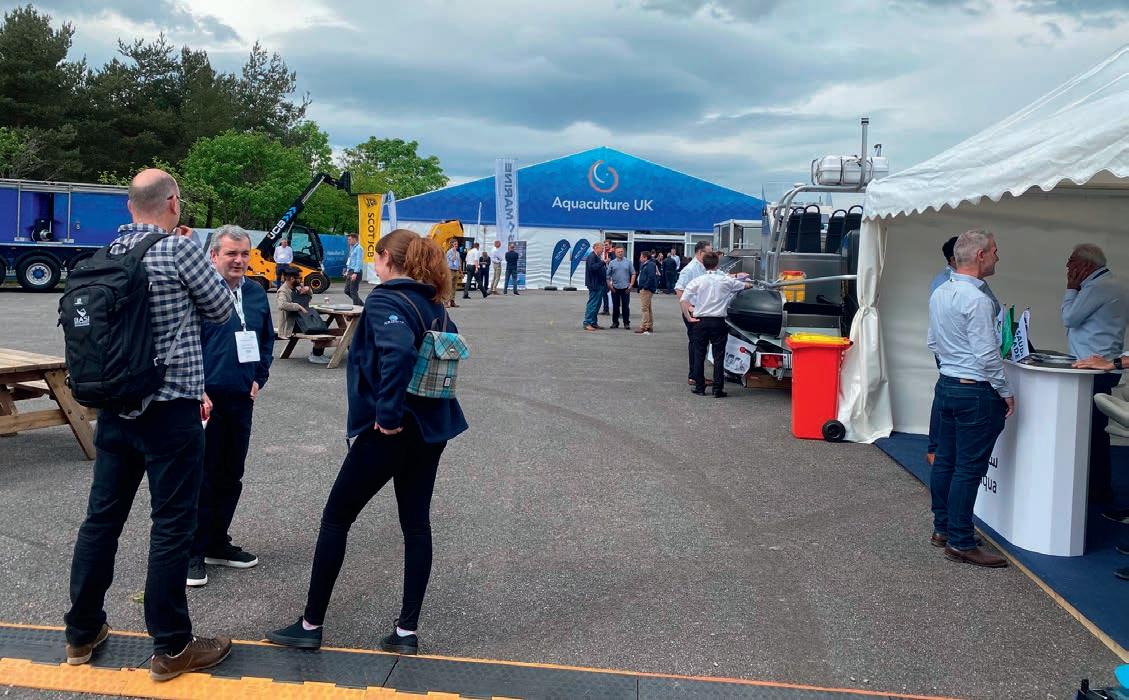
THE sun was (mostly) shining on the Scottish Highland resort of Aviemore last month, as the industry’s movers and shakers came together for a record-breaking Aquaculture UK over 14 and 15 May.
The number of visitors and exhibitors tested the capacity of the showground, at the Macdonald Aviemore Resort, and this year the programme – even if condensed from two and a half days to just two – was even more packed than ever, with a new Innovation Theatre running in parallel with presentations in the Keynote Theatre.
As well as aquaculture producers and suppliers, Aquaculture UK received its share of political visitors.
Mairi Gougeon, Cabinet Secretary for Rural Affairs, Land Reform and Islands in the Scottish Government, was due to formally open the show, but with a new First Minister holding his first cabinet meeting that morning, her place was taken by Employment and Investment Minister, Tom Arthur.
He said in his welcome speech: “Aquaculture is a major contributor to our economy – providing well-paid jobs and careers, including for young people and particularly in our rural and island communities – and can support us to deliver across the range of the Scottish Government’s key policy priorities.
“We are committed to delivering increased employment and investment in Scotland. Our policy is to support sustainable growth, in the right places, and it will remain so as we work together to promote the benefits that the sector delivers for Scotland while ensuring protection for our shared natural environment.”
He added: “We see a bright future for aquaculture… Scotland is open for business.”
Later that day came a visit from Scottish Labour leader Anas Sarwar, who addressed the AGM of trade body Salmon Scotland at the Macdonald Hotel. He also officially
We see a bright future for aquaculture
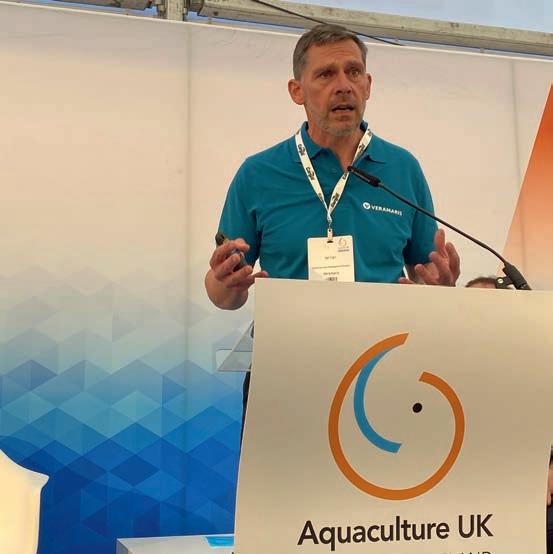






launched the Young Aquaculture Society, a new network set up with the support of Salmon Scotland for young people to develop connections and discover employment opportunities in the industry.
Speaking afterwards, Sarwar said: “The Scottish salmon sector creates thousands of jobs here in Scotland and generates hundreds of millions of pounds for the economy.
“The salmon in our waters are a key part of ‘Brand Scotland’, contributing to inward investment and exports.
“Food and drink should be viewed as an economic asset, and we need to build the right business environment in Scotland to help sectors like this thrive with responsible growth and high animal welfare standards.
“It’s vital that Scotland is seen as open for business, and a Labour government will prioritise economic growth so that we can deliver more high-skilled jobs, enable rural communities to flourish, and invest more in public services.”
SAIC’s future set out
As reported elsewhere in this issue, Aquaculture UK also saw the announcement that the Scottish Aquaculture Innovation Centre (SAIC) had finally secured a funding package.
Last year the Scottish Funding Council (SFC), which had been SAIC’s main source of finance, said it would be terminating its support this year and since then, talks have been underway to find an alternative package.
The good news is that a “transitional” package of £1.5m has been agreed, from Marine Fund Scotland and the SFC. The less good news is that this represents a major scaling down of SAIC’s resources and a narrower focus. The organisation will now focus its efforts specifically on finfish aquaculture, with a particular stress on fish health and welfare.
One immediate impact of the funding changes for SAIC is the imminent end of its role as host for Women in Scottish Aquaculture (WiSA), the initiative set up by SAIC and others in 2019 to encourage women into the industry and support their development.
This was another talking point at Aviemore, with a presentation from WiSA on the first day setting out some examples of the organisation’s impact and its influence on women in the industry, both in Scotland and overseas. WiSA representatives also used the opportunity to reach out to organisations that might be interested in helping to host WiSA or assist with fundraising.
Rural Affairs Minister Mairi Gougeon addressed the WiSA event and praised the organisation’s contribution. She also pledged: “The
Scottish Government is committed to working with you in future.”
Scottish Government is committed to working with you in future.” (See Sandy Neil’s report, page 40 for more on WiSA).
This year Aviemore was more international than ever, with Ireland, Canada and Chile collectively represented with national pavilions for the first time. In the latter case, Aviemore represented the second leg of a home-and-away fixture; at Chile’s Aqua Sur trade show and conference in March, the Scottish Government led a contingent of Scottish suppliers presenting and exhibiting at the event.
At Aviemore, the Chile Aqua & Food Tech Cluster was made up of a delegation of 11 companies, including the best start-up winner at the Aquaculture Awards, Chucao Tech, which uses nanobubble technology in fish farming (see page 34 for more on the awards).
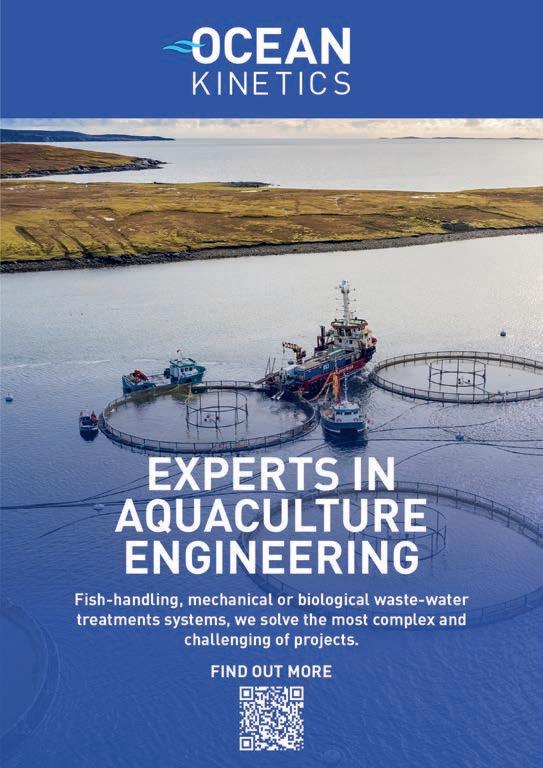


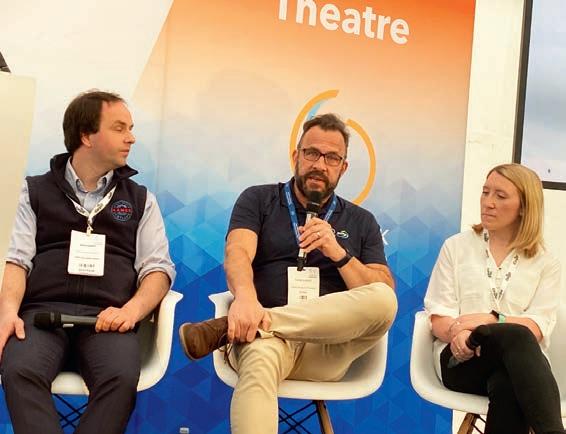


The reciprocal trade missions come under the Blue Bridge initiative, backed by the governments of Chile, Scotland and the UK.
“We have been made to feel very welcome,” said Pablo Depich of the British embassy in Santiago, who met Minister Tom Arthur at the stand. “We told him about the technical advances being made in Chilean aquaculture and he was very interested in collaboration between Scotland and Chile.”
The Chile Cluster also presented at one of the plenary sessions at the Keynote Theatre, with companies such as aquaculture lighting specialists Bioled, farm management software and hardware business Innovex and sustainable packaging manufacturer Bioelements on stage.
Miguel Portus, of Chilean smolt producer Lago Sofia, which has achieved a high level of certification for its fish welfare programme, said: “We see a lot of similarities between the Scottish market and the Chilean market. It’s a huge opportunity to be here.”
North America was represented in the panel on “Managing saltwater production amidst highly variable environmental conditions”, with Jonathan Lariviere of US-based Scoot Science chairing, and contributions from Brock Thomson, Innovation Director of Cermaq Canada, and Matt Clarke, Co-founder and CTO at Poseidon Ocean Systems Ltd, also based in Canada. The Scottish angle was provided by Kimberley McKinnell, Head of Health for Bakkafrost Scotland, and Innes Weir, Regional Manager at Scottish Sea Farms.
In a wide-ranging discussion, the panel compared and contrasted salmon farming challenges in Scotland and Canada. Innes Weir observed that some of the problems Canada first encountered a decade ago, and Tasmania probably as long as 25 years ago, were first encountered in Scotland just two years ago. It was agreed that new biological challenges had been testing, but the industry continues to learn, and technology can provide part
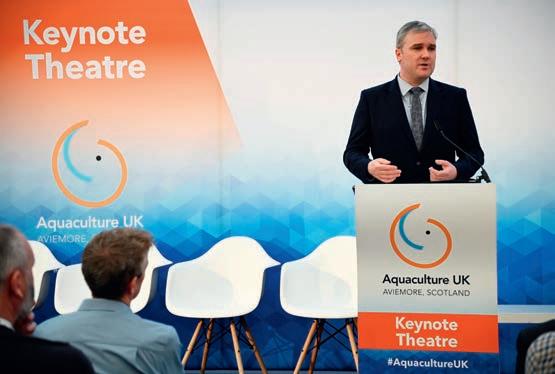
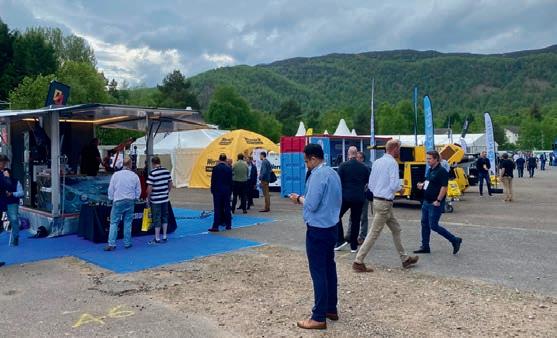



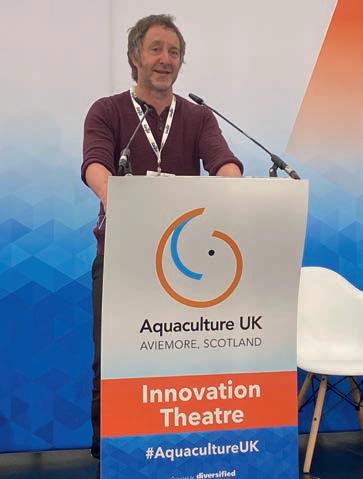
As Brock Thomson put it: “It is in everyone’s interest to prevent disasters on salmon farms, because it affects all of us.”
The big reveals
Aquaculture UK has long been the venue to roll out new or updated products to the marketplace. This year, Aviemore saw a number of launches, including a pioneering net cleaning system; a mort collection solution; and an early warning system for harmful algal blooms.
Brimmond, already well known as a supplier of cranes and other marine equipment, presented the NetJet, an innovative net cleaning pump designed and manufactured in Scotland.
The new system had spent the previous month deployed on a project with an aquaculture firm that operates multiple sites on the West Coast of Scotland.
Brimmond Managing Director Tom


and
ASC; outdoors at Aquaculture UK; a canine member of the Dryden Aqua team; Professor Simon Mackenzie; Tom Arthur Opposite clockwise from top left: Aquaculture graduate student Jay Haywood puts his robot handling skills to the test at the UCO stand; MoROV Reaper – with Ma�hew MacPherson and Dom Smith; Brimmond’s NetJet; Gael Force’s SeaQure Ultra pen

It is in everyone’s interest to prevent disasters on salmon farms
Murdoch said: “Developing such a high-end piece of technology from initial concept through to an aquaculture net cleaning campaign on a West Coast fish farm, has truly been a team effort. So, it’s fair to say that everyone at Brimmond is absolutely thrilled to see how well the NetJet performed during its first outing on a live industry project.”
The NetJet is designed to operate along with a range of different ROVs and includes a full technical support and service package.
Meanwhile, another Scottish-based company, MoROV Subsea Solutions, was proudly presenting the “Reaper”, an appropriately named ROV designed for identifying and collecting dead fish from pens, even in challenging marine environments.
The Reaper has been designed to operate silently, with a rim-driven propeller rather than a jet. With eight directional thrusters, the device enables a high level of operator control and, as the company points out, with all replacement parts stocked in its Inverness office, they can be supplied to any customers in Scotland within 48 hours.
Marine technology business OTAQ likes to stay at the cutting edge and its latest offering, rolled out at Aviemore, is no exception. The LPAS (Live Plankton Analysis System) uses a combination of high-tech visual technology and artificial intelligence (AI) to identify the phytoplankton associated with harmful algal blooms. Faster, more accurate analysis means farmers can take action far more swiftly.

Now, the company is planning to extend the system’s coverage to identify potentially hazardous zooplankton.
Gael Force took the opportunity to display the latest iteration in the company’s SeaQure range of pens: the SeaQure Ultra, a steel-bracketed pen
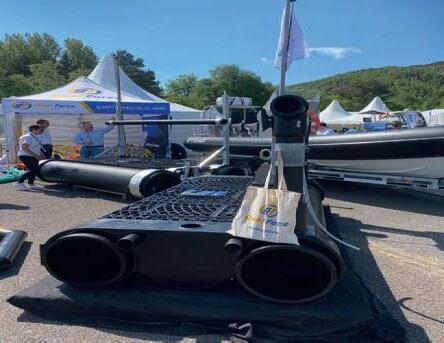
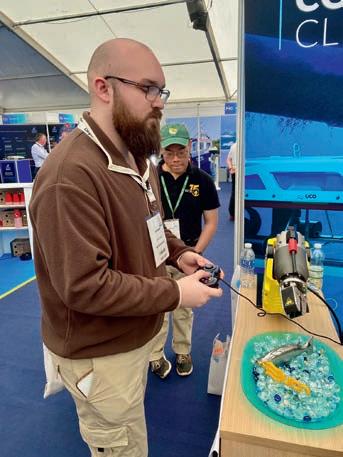
designed for the toughest and most dynamic environments.
Group Sales Director Jamie Young said: “We have been supplying pens to the aquaculture sector for over 25 years and to showcase this new 560mm steel bracket pen at the UK’s largest aquaculture show allows us to demonstrate our commitment to our customers to deliver solutions for some of the most challenging sites.”
Gael Force’s latest SeaFeed Spreader model was also launched in May. This feed spreader offers an improved float design that gives greater stability in the water. The company says the new design, alongside an improved bearing, provides for a longer life expectancy.
Feed accounts for about half of a fish farmer’s costs and a large percentage of their environmental impact, so the panel discussion on alternative feed ingredients was a key element in the conference programme at Aviemore.
A panel chaired by Ian Carr, Global Business Development Director with marine algal oil producer Veramaris, considered the question: given the pressure on marine ingredients, why is the take-up still so limited?
One answer is that farmers need to be convinced that algal oil, microbial protein or insect protein, for example, will be good for their fish, and also that the price will be competitive with marine ingredients or soya. As these alternative sources become established and reach a commercial scale, however, they are likely to become more affordable.
The conference programme also included discussions on the digitisation of fish farming, the shifting landscape as regards genetics and gene editing, and how to make energy consumption more efficient in land-based farming and hatcheries.




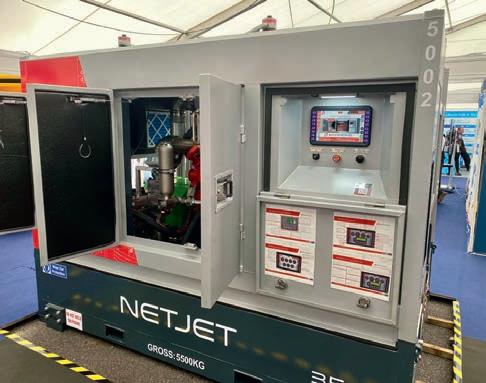

Aviemore also saw a news of an exciting development for aquaculture in Scotland: the construction of the National Aquaculture Technology and Innovation Hub (NATIH) at the University of Stirling.
Professor Simon Mackenzie, Academic Lead for Stirling’s Institute of Aquaculture, led a team presentation including colleagues from the Institute and Denmark-based North Aquaculture, the contractor tasked with designing the Hub’s complex RAS system.
With NATIH due to open next year, this will be one to watch.
See you in 2026?
Cheri Arvonio, Event Director of organiser Diversified Communications, said this year’s event built on the success of previous shows.
She added: “The stars were aligned for a truly memorable two days in the Scottish Highlands, and we’ve been overwhelmed by the positive feedback we’ve had so far from exhibitors and visitors.
“Aquaculture UK goes from strength to strength, and we are already looking forward to what the future brings as we plan for the next exhibition in 2026.”
Watch Fish Farmer’s video highlights from Aquaculture UK 2024 online at bit. ly/AquaUK24vid

Rising stars, industry veterans and team efforts were all honoured at the UK aquaculture industry’s premier awards event
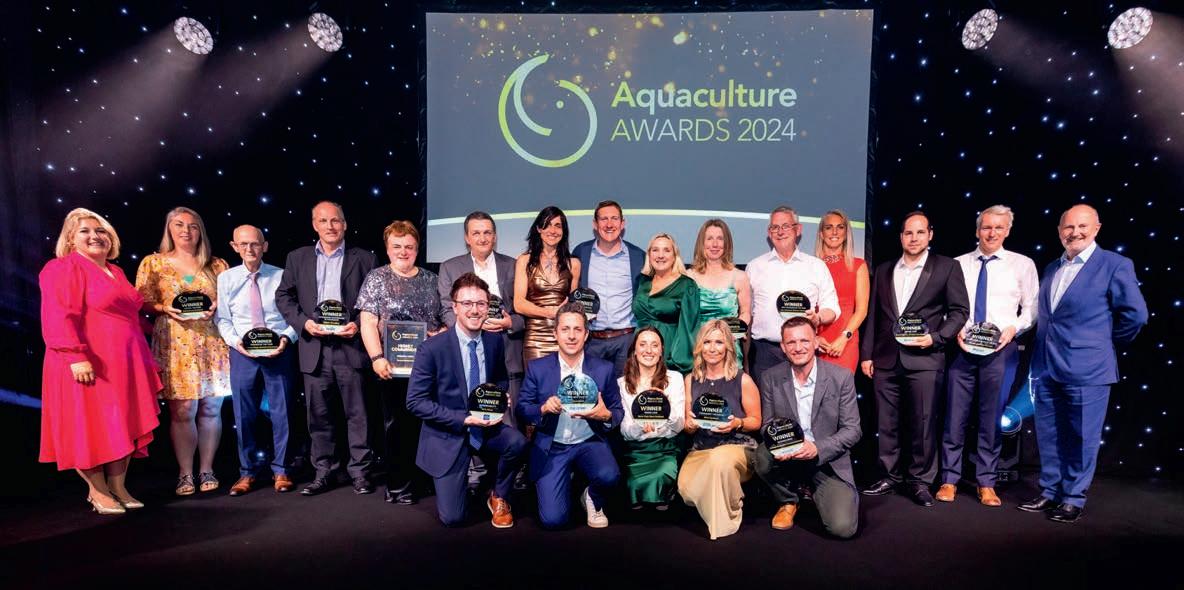
THE Aquaculture Awards, held on the last night of the Aquaculture UK show, recognised excellence in aquaculture, in Scotland and further afield. They included an Outstanding Contribution award recognising the career-long achievements of Gilpin Bradley, the former Wester Ross Fisheries Managing Director. The award was sponsored by Cargill.
Gilpin Bradley retired in September 2023 after 33 years at the helm of the salmon company, which had been acquired by Mowi in 2022. He was formerly Chairman of the Scottish Salmon Producers’ Organisation (now Salmon Scotland). The award for Outstanding Contribution was made following a vote by aquaculture industry professionals.
freshwater stage into a safe ingredient for pet food and fish oil.
Ace Aquatec also won the Innovation award, sponsored by Poseidon, impressing the judges with its A-Biomass camera that tracks fish and identifies health and welfare problems using advanced AI and machine learning.
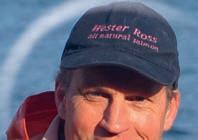
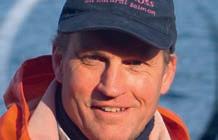
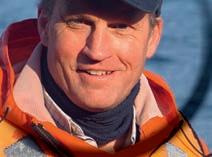
The awards organisers said: “A stalwart of salmon farming, Gilpin is seen as one of aquaculture’s greatest advocates and a ‘go-to voice of reason’ whose contribution to Scottish salmon’s premium reputation has been considerable.”
Also at the event:
The Rising Star award, sponsored by Scale AQ, went jointly to IT Engineer David Lipscey (Scottish Sea Farms) praised for his “technical skills and can-do attitude” and Silvia Viale (Regional Health Manager, Mowi), singled out for her “hard work, passion and resilience”.
The Collaboration award, sponsored by Agri-Tech Centre, went to Ace Aquatec and Tiny Fish for their joint mission to reduce waste and enhance the circular economy by converting unviable fish from the
The Sustainability award, sponsored by BioMar, went to net makers W&J Knox, which has pioneered predator netting that is designed to be easier to recycle, diverting nets and rope from landfill and helping customers achieve the most environmentally sound disposal method for their end-of-life gear.
Mowi won the Community Initiative award,
Gilpin is seen as one of aquaculture’s greatest advocates
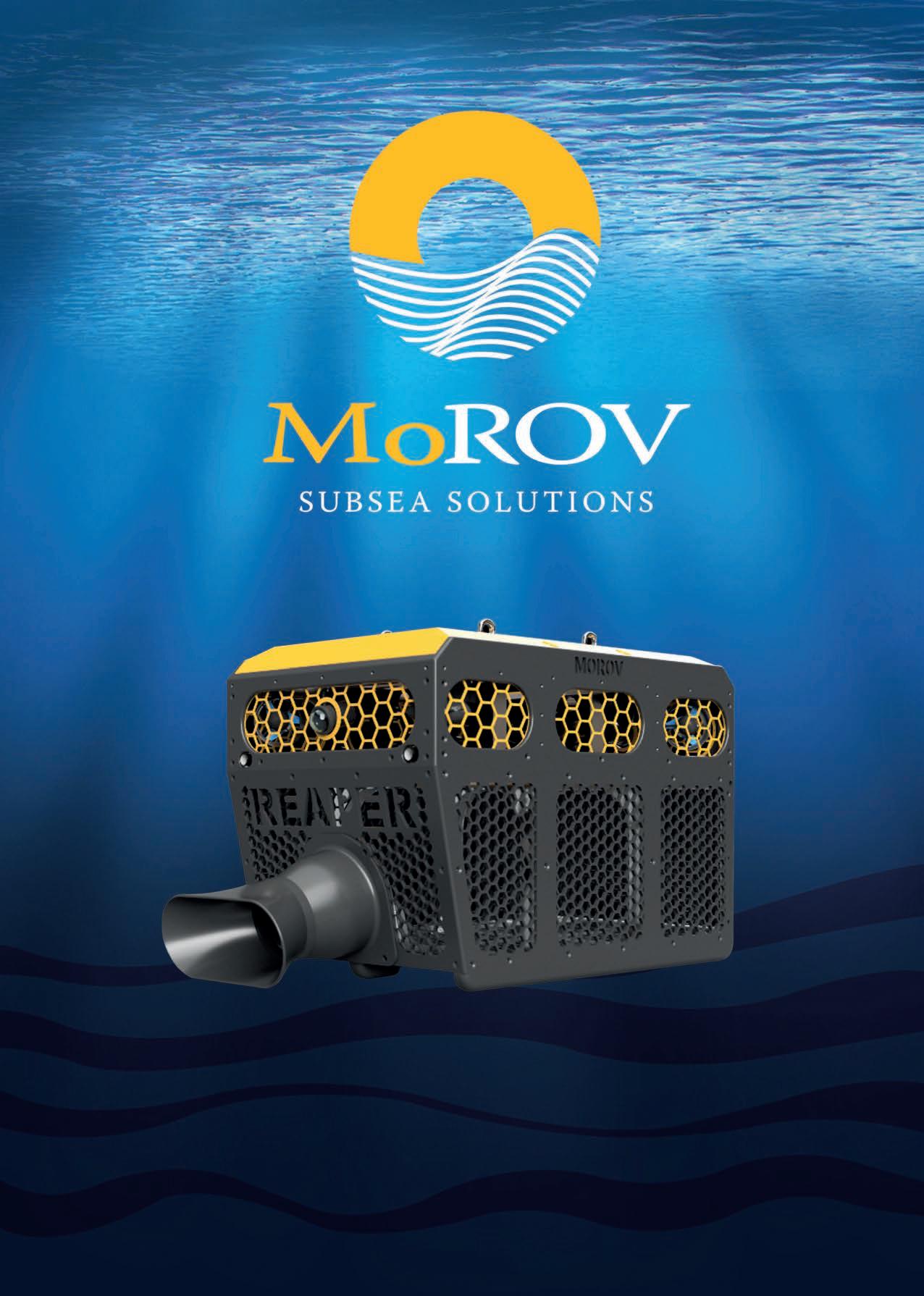


sponsored by Seafood Scotland, with the judges deciding the scale of its support for local causes – £633,000 in one year alone – gave it the edge in a field with many deserving entries.
Thomas Begg, of Bakkafrost Scotland, was named Farmer of the Year, an award sponsored by Optoscale. Judges cited his decades of devotion to the sector, his inspirational leadership and his championing of young talent in the company.
The Animal Welfare award, sponsored by Institute of Welfare, went to Bakkafrost Scotland, for the company’s Welfare Awareness programme, launched last year and aimed at educating farm teams about fish health, biological challenges, monitoring and the importance of identifying trends.
Inverlussa Marine Services won the Aquaculture Supplier of the Year award, sponsored by Mowi. The Mull-based, family-run company, with its investment in boats, technology and people, has been pivotal to the growth of the salmon farming sector.
The Best New Start Up award, sponsored by Fish Farmer, went to Chilean firm Chucao Tech, which has developed ground-breaking nanobubble technology to improve fish health and minimise environmental impact by making permanent oxygenation at farms feasible and affordable.

Malcolm Johnstone, Independent Aquaculture Auditor/Consultant; and Nicki Holmyard, Communications Specialist, Offshore Shellfish. Aquaculture Awards organiser Diversified Communications paid tribute to all the award entries, and to the sponsors, including Scale AQ, UK Agri-Tech Centre, Poseidon, BioMar, Seafood Scotland, OptoScale, Institute of Aquaculture, Mowi, Fish Farmer, Vonin Scotland, Crown Estate Scotland, and Cargill.
Event Director Cheri Arvonio said: “Congratulations to all the amazing winners, and to all those shortlisted too, in what has been an incredible Aquaculture Awards, with a record number of entries.
“The standard as always was very high, making the judges’ task difficult, but reflecting the wealth of talent, the initiative, dedication and achievement so evident throughout the sector. We are proud to be able to recognise and celebrate such excellence.”
Commenting on his award, Bakkafrost Scotland’s Thomas Begg said: “Having been nominated for this award felt like a victory in itself. It is amazing to have been recognised for making a positive impact within my team and the industry. It means a lot to me especially after 38 years of dedication and hard work.









“I am grateful to my colleagues, whose tremendous support and shared dedication has made this possible.”
Scottish Sea Farms Managing Director Jim Gallagher paid tribute to his colleague Ralph Bickerdike: “From my first meeting with Ralph, it was clear how much he cared about nutrition, fish health and helping farmers do the very best by the livestock in their care.
“I felt he could make an even bigger difference working directly for us, and without doubt he has.”

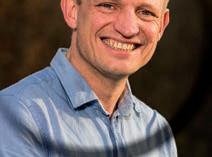




Scottish Sea Farms’ Dr Ralph Bickerdike was named as the Unsung Hero of 2024, sponsored by Vonin Scotland. The judges were impressed with his unwavering commitment to fish welfare and his contribution to more than 20 collaborative research projects, as well as being a trusted and respected ambassador for the entire sector. In the same category, Emma Matheson of BioMar was highly commended.




John Holmyard, of Offshore Shellfish, was the Best Producer of the Year, sponsored by Crown Estate Scotland. The judges said he has not only pioneered offshore mussel farming, but he has also engaged with government, industry, funders, academics and other aquaculture experts to help navigate post-Brexit challenges and further the sector for all involved.
Finally, the Judge’s Special Recognition award, sponsored by Aquaculture UK, went to Sarah Riddle of Northern Light Consulting, recognising her exceptional work across the aquaculture sector over many years. Hailed as “a one-woman dynamo”, her roles have ranged from aquaculture consultant, SAIC business engagement supremo, innovator, and auditor, to educator and mentor. The awards event was compèred by comedian and broadcaster Fred Macaulay.
The judging panel consisted of David Little, Deputy Director, Institute of Aquaculture, University of Stirling; Heather Jones, Chief Executive, SAIC; Andrew Watson, Head of Communications & Partnerships, Salmon Scotland; Jenny Hjul, Freelance Journalist;

Eight years on, Bickerdike now leads a team of 13, including four in-house vets. His remit extends far beyond simply feed, helping bring about key advances such as the use of cleaner fish, freshwater treatments and water quality surveillance, along with ongoing work to establish a secure supply of Scottish broodstock. Most recently, he has been part of a project group to deliver a new incubation unit.
Meanwhile, responding to the Community Award, Mowi Scotland said: “This award is dedicated to the Mowi team for their hard work, tireless effort in all aspects of community work whether that be beach cleans, supporting events with the salmon wagon, hosting visits, school fairs or volunteering in their communities in the various rescue services.
“Writing the cheque is the easy part, it is all the additional work that Mowi and our teams support in other ways, so to receive the recognition is fantastic. Thank you to the judging panel for your votes and to Aquaculture UK for another fantastic conference and awards gala dinner.”



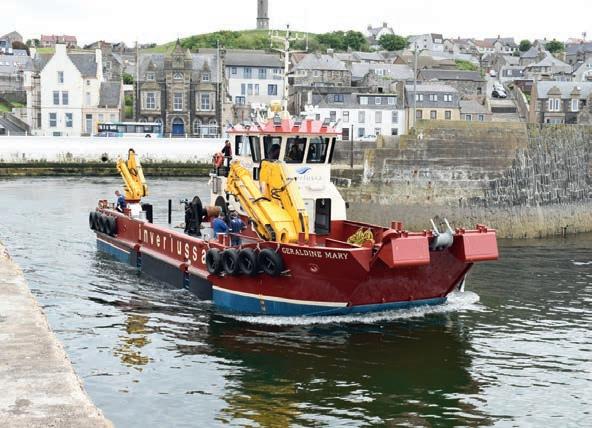
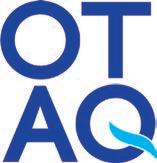
OTAQ’s groundbreaking Live Plankton Analysis System was launched at Aquaculture UK trade event, and its next phase will include zooplankton detection

Above: Example AI performance. Below right: LPAS onsite hardware set-up
Following the successful launch of the Live Plankton Analysis System (LPAS) at the recent Aquaculture UK exhibition in Aviemore, OTAQ have received huge interest from the industry, appreciating the value that LPAS provides in combatting the rising threat of harmful algae blooms (‘HABs’).
By integrating specialised AI technology to automate the detection, identification and quantification of harmful algae, LPAS saves time by streamlining monitoring processes, enhancing the accuracy and frequency of monitoring, supporting team members in making confident identifications, and assisting in the standardisation of practices across the industry. LPAS marks a significant advancement in safeguarding aquaculture against potentially devastating HAB events.
Among the industry professional organisations working closely with OTAQ is Bord Iascaigh Mhara (‘BIM’), Ireland’s Seafood Development Agency, which has now placed an initial order for LPAS for use on Irish farm sites.
Damien Toner, Aquatech Business Manager at BIM commented: “A key part of BIM’s role in supporting the growth and sustainability of Ireland’s seafood industry is to assess and promote new technologies that will assist farmers manage their operational risks and efficiencies. Following trials of LPAS Beta units during 2023, we see the vital benefits LPAS brings in streamlining and enhancing algae monitoring in production areas and therefore we are pleased to be progressing our relationship with OTAQ to the benefit of Irish farms.”
”We see the vital benefits LPAS brings in… enhancing algae monitoring
The newly launched LPAS has undergone extensive training to accurately identify and quantify harmful phytoplankton groups, which are recognised by both farmers and academia as posing significant HAB threats to fish health and welfare in marine farms.
However, the global increase in harmful zooplankton species is also presenting a major challenge to fish farmers due to their potential to cause significant harm to fish. Recent reports of devastating mortalities at Scottish and Irish farm sites caused by blooms of micro jellyfish (hydrozoans) underscore these threats.
To address this pressing need, OTAQ has initiated a new product development program aimed at delivering precise and automated identification and quantification of harmful zooplankton species. This initiative will empower farmers with early warning capabilities and valuable insights for proactively managing this increasing threat to global marine aquaculture.
The zooplankton analysis program is currently underway, and OTAQ is actively seeking collaboration with farmers and industry bodies to participate in image collection and product trials. If you are interested in joining this program or wish to receive further information on LPAS in general, please reach out to the OTAQ team at info@otaq.com





Norway’s Subfarm plans to take salmon farming to new depths – and exciting new locations – as Robert
THE ocean is wide. Despite that, however, competition for marine space is growing. As fish farmers increasingly look to deeper, more exposed locations, they are vying for the prime spots with the catch fishing sector, oil and gas operators and, more than ever, the renewable energy industry.
It makes sense, then, to team up with other marine users where possible, and look for ways to co-locate fish farms with other types of infrastructure. That is the thinking behind a collaborative project announced earlier this year involving Freja Offshore, a joint venture between energy businesses Mainstream and Hexicon, and the Norwegian company Subfarm.
The initiative aims to establish a fish farm inside the proposed 2.5 GW Mareld offshore wind farm, in Swedish waters 40 kilometres west of Lysekil.
The fish farms will be placed between the wind turbine platforms, and they will be anchored with their own mooring system. The submersible fish cages will be lowered to a depth of 50-70 metres and hoisted up to the surface position for checks and harvesting. They would then be transported by ship to land.
Lysekil Municipality, the research institute DHI and the Norwegian industrial cluster Blue Maritime Cluster are also involved in the collaboration.
Sweden’s Västra Götaland region needs to triple its electricity production in the coming years to meet energy demand, and offshore wind will play a key role in this. At the same time, wind power must be able to coexist with other important interests, not least the fishing industry and sea-based food production.
“Seafood and offshore wind power are two industries that Sweden will need more of in the future, that’s why we want to find ways for these two industries to co-exist,” says Magnus Hallman, CEO of Freja Offshore.
So who are Subfarm? The Norwegian company has been working since 2018 to develop submersible sea cages for locations where conventional surface-based net-pens are unsuitable.
The three founders of Subfarm – Karl Strømsem, Paal Hylin and Morten Lyssand – have worked together for some time
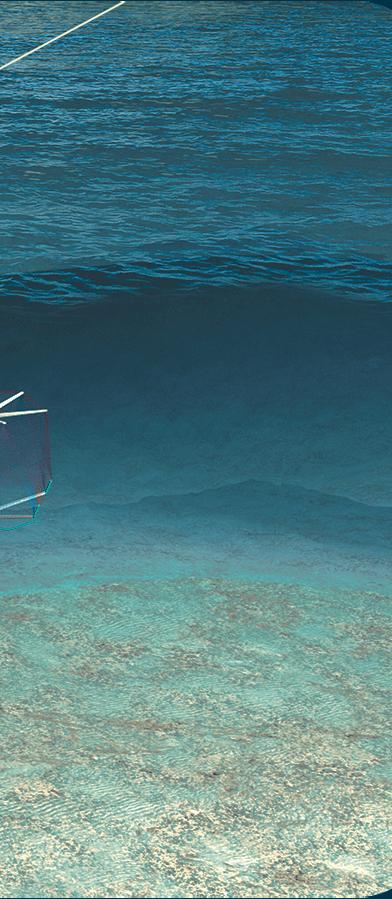
developing technology, initially with Global Maritime Group. They had first-hand experience helping to create one of the most well-known offshore salmon farming projects, SalMar’s Ocean Farm 1.
Then, as the co-founders of technology start-up Noerd, they started working on what they believe is a less expensive, simpler solution to the offshore question: submersible fish cages.
Chief Technology Officer Morten Lyssand explains: “In exposed locations or even just offshore, being on the surface is harsh for the structure, the net and the fish.”
Being placed below the surface protects the structure from
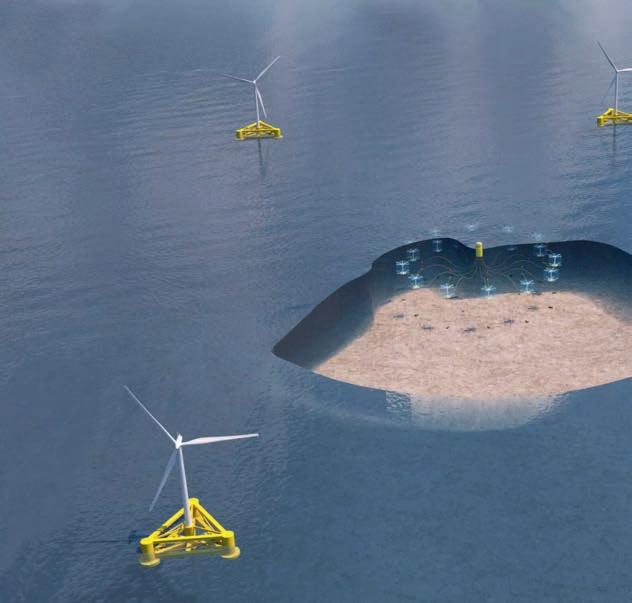
waves and storms. Recent research also suggests that, at greater depths, salmon are less exposed to sea lice and jellyfish. A further advantage is that deeper water is much more stable in terms of temperature. This means that salmon could thrive in warmer climates such as the Atlantic coast of Span and Portugal, or even the Mediterranean.
Lyssand says: “In Portugal, for example, if you go below 40 metres you will find temperatures of 14-15ºC all year round. So you can open up new areas.”
Portugal was chosen as the first location for a trial of the technology, in collaboration with Jerónimo Martins, the country’s biggest food retail group. The project came to an end in 2020 with the onset of the Covid-19 pandemic, with the team having gained some valuable experience.
As CEO Paal Hylin puts it: “We learned what we cannot do!”
The next step was to create two new companies: Subfarm, to develop the submersible cage system, and Open Ocean Farming, to put the new technology
To grow more salmon we need to go offshore ”
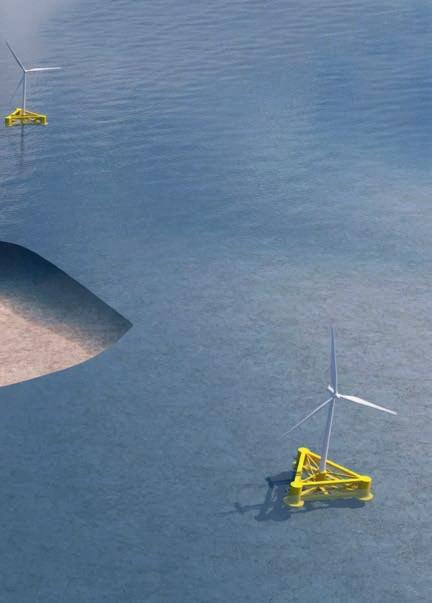


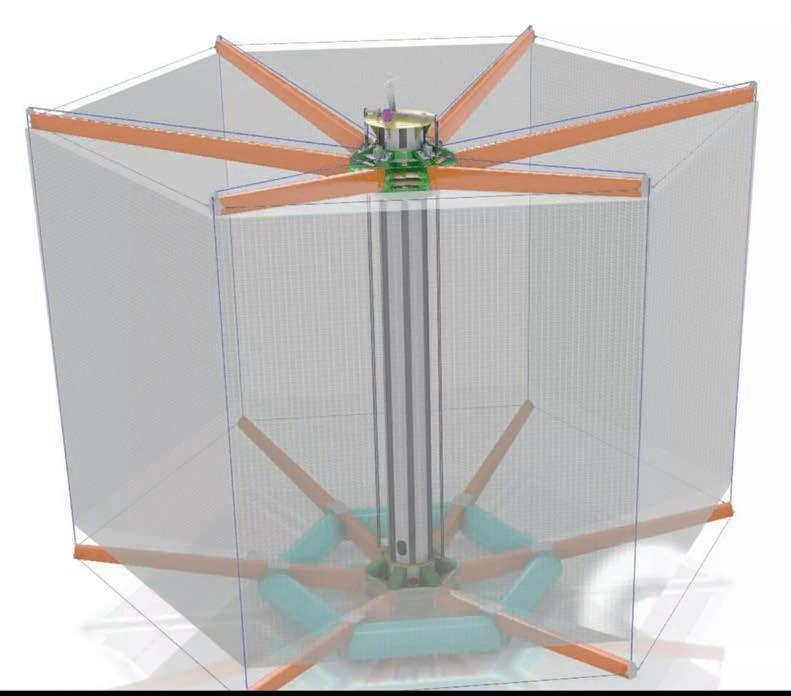
into practice with a commercial farming operation.
Working with Norway’s Sea Technology, one of Subfarm’s investors, Subfarm has now built a one-tenth scale prototype and is now working on a full scale pilot system, for testing off the Norwegian coast.
The revised system is a fully submersible cage, designed to remain underwater for the majority of the time. An air dome will allow the salmon to refill their swim bladders without have to swim to the surface. Feed will be distributed from a specially designed feed barge (the design for the barge was developed in collaboration with Sevan SPP). Feed distribution will use a waterpumped system – which as Paal Hylin points out, uses less energy than blowing feed using an air pump.
Subfarm anticipates the submersible farms would be remotely operated, controlled from the shore and monitored using underwater cameras.
Morten Lyssand says: “You don’t need people walking around the cage anymore, it’s ‘precision farming’. You can count the fish with cameras and have a good view of the biomass inside the cage.”
This model would be more expensive than the typical net-pen used in inshore waters, but considerably less costly than the large offshore structures that have been developed in the past few years.
Subfarm has a twofold business model: in established salmon farming regions, it aims to sell its cages as a turnkey solution for established producers; while in new areas, it would seek to farm on its own account, probably in collaboration with established aquaculture businesses.
The first location selected for the latter is Croatia, where Subfarm is applying for licences to farm in the Adriatic.
So, when could all this happen? Lyssand says: “The timescale depends on equity, as we are a start-up company, but if we pushed the button tomorrow, we could have a prototype ready for sea trials in five to seven months.”
The Subfarm team believe they are, for now anyway, ahead of their larger competitors in terms of this technology. And they are convinced that the time is right for it, if the salmon industry is to meet the growing demand for its product.
As Paal Hylin puts it: “To grow more salmon, we need to go offshore, and to go offshore, we need to go submerged”.

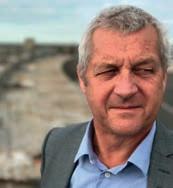
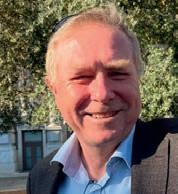
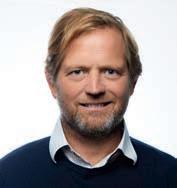 Opposite: Subfarm pictured with Sevan SSP feed barge
Left: The submersible cages can be colocated with a floa�ng wind farm
Opposite: Subfarm pictured with Sevan SSP feed barge
Left: The submersible cages can be colocated with a floa�ng wind farm
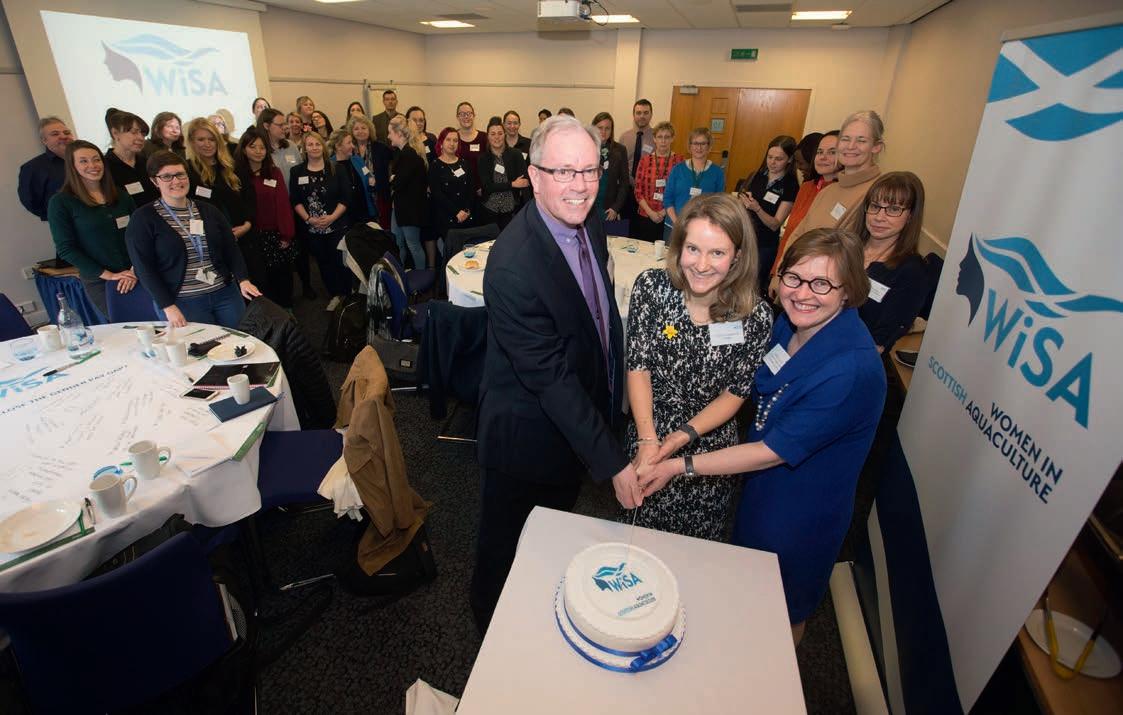
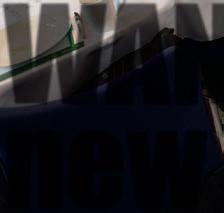

A ground-breaking body set up to encourage the development of women in aquaculture is looking for a new supporter, as Sandy Neil reports
WOMEN in Scottish Aquaculture (WiSA), a network dedicated to supporting the growth and development of women in the aquaculture sector, is seeking a new host to ensure the group continues its impactful work in the future.
WiSA was founded by the Sustainable Aquaculture Innovation Centre (SAIC), which up to now has hosted the organisation and provided vital administrative support. Now, with SAIC itself required to operate with a much narrower focus, WiSA’s future depends on finding alternative support.
WiSA was formed on International Women’s Day in 2019 following a consultation of 200 people working in the aquaculture sector.
Nearly all (90%) of the respondents were keen to see a network of support for women working or considering a career in the industry. At that time, published research showed that only 12% of the aquaculture workforce was female.
At the launch, SAIC’s chief executive Heather Jones said: “Diversity matters - research shows that it can significantly impact business performance, with companies that commit to diverse leadership likely to be more successful than those who don’t.
“Equality is a universal value that Scotland champions and SAIC is proud to be a founding member of the Women in Scottish Aquaculture network. We’re committed to delivering positive change through this initiative over the next five years.”
WiSA carries out a range of activities, including mentoring schemes connecting early-stage professionals together with experienced aquaculture leaders. One participant said: “The mentoring programme is such a positive, supportive experience. As a mentor, it’s great to have sight of the wealth of talent already within the industry, and really rewarding to be able to help develop
”WiSA… continues to be a shining example
Above: The launch of WiSA, 2019, (from le�): Graham Black of Marine Scotland, Charlo�e Maddocks and Heather Jones Opposite from top: Mairi Gougeon at WiSA event, Edinburgh; WiSA launch, Sco�sh Parliament
people’s confidence and experience to reach their goals.”
A dedicated virtual forum was launched in October 2021, funded by Marine Scotland, providing a space for WiSA members to connect with and support one another, access events and share career opportunities. WiSA also hosted a Scottish Government-funded returners’ training programme for women looking to get back to work after a career break.
A New Wave of Talent campaign, in collaboration with SAIC and rural skills body Lantra, featured videos of young women and men at work to promote aquaculture careers. The WiSA Awards were also launched in 2021 to recognise exceptional women in the sector.
By WiSA’s third anniversary in 2022, more women had been welcomed into the sector. Speaking at a celebration in March that year, Heather Jones reported: “In the three years that it takes a salmon to transform from fertilised egg to adult fish, WiSA has gone from a nascent idea to a mature organisation, full of life, energy and impact. We now have a well-established peer-topeer network for women, supporting one another in what is still, numerically at least, a male-dominated sector.

“In many cases, cultures and attitudes are already changing and we have seen some great progress made through the likes of recruitment approaches, parental leave policies and gender pay gap reporting. However, there is always more that can be done and WiSA has an important role to play in making that happen.”
Rural Affairs Secretary, Mairi Gougeon MSP, added: “Since 2019, Women in Scottish Aquaculture has proved to be an invaluable organisation that showcases the many career opportunities for women in a sector which plays a key role in our economy.
“The peer-to-peer support of the network is outstanding and encourages more young women with science, technology, engineering and maths-related degrees to take up careers in aquaculture.
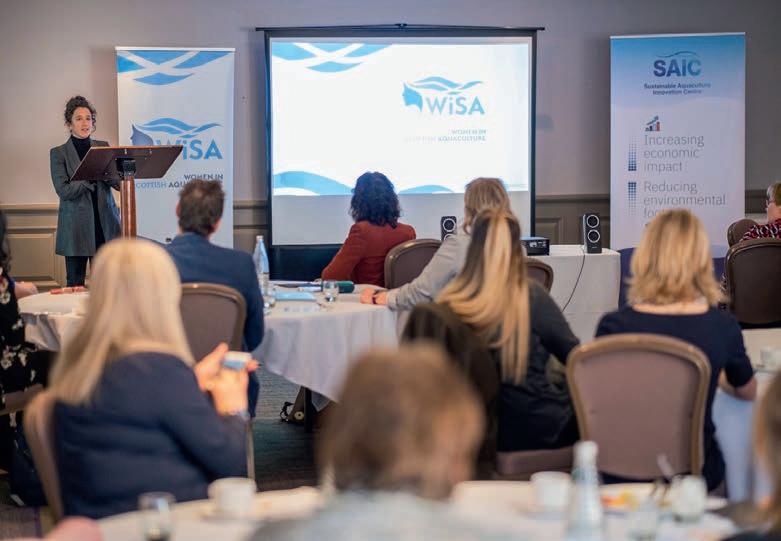
“I am proud the support provided by the Scottish Government to the network has helped make a real difference in attracting and retaining the skills of talented women in the aquaculture sector.”
Since its inception, WiSA has now grown to almost 400 members, including representatives from finfish, shellfish, and seaweed, operating in industry, government, academia, and nongovernmental organisations. WiSA membership is open to anyone, of any gender, studying or working in Scottish aquaculture.
“WiSA is an achievement in that it continues to be a shining example of how working together can improve equality so that our children can look forward to a brighter, fairer future with rewarding careers,” said Robin McLean, former WiSA Advisory group member.

“I was very proud to be involved with WiSA from the beginning and it is fantastic to see how much has been achieved so far,” said Rowena Hoare, former WiSA Co-Chair in 2022. “It allows women a safe space in which to develop skills. Often just talking with others in the same situation, or those who are further ahead in their career, can be extremely helpful. It is encouraging to see the impact WiSA has had on equality and inclusion in the industry.”
Now, in its fifth year, WiSA is looking for a lifeline after its founding body has had to step back. Up until now, SAIC has administered WiSA, using in-house expertise and staff time, with financial support from industry and government.
Last year SAIC’s own main source of finance, the Scottish Funding Council, announced it would cease funding SAIC.



Under a new package of support announced last month, SAIC’s funding has been secured, but on a transitional basis and at a more limited scale, and it will operate with a much narrower focus.
WiSA explained: “The innovation centre announced it had secured a new funding package to sharpen its focus on helping to deliver research and development on finfish health and wellbeing, but its new focus means SAIC will have to step back from providing administrative support for WiSA.”
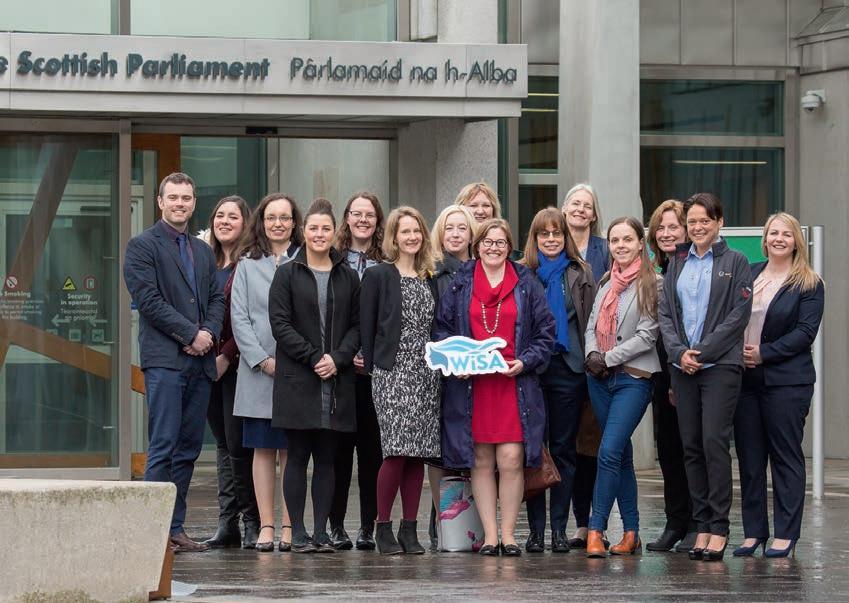




At the Aquaculture UK trade show in Aviemore, WiSA issued a call to any potential sponsors. In a flier issued at the show’s conference, WiSA said: “WiSA is looking for a new host organisation to fund or fundraise in order to administer and deliver our key initiatives alongside our advisory group. If you share our vision and passion, then please come and speak with us about how you can help make sure WiSA continues to exist.”
In a video address to the WiSA session, the Minister for Rural Affairs, Land Reform and Islands, Mairi Gougeon, said that she wanted to see support for WiSA’s work and added: “The Scottish Government is committed to working with you in the future.” She added: “I have met many inspiring women in aquaculture… but there are still barriers to entry.”
SAIC will hold meetings through June and July with prospective WiSA host organisations, with the aim of identifying a new host in August and handing over responsibilities in September.
SAIC’s Chief Executive Heather Jones told us: “I founded WiSA because I am passionate about supporting and promoting the role of women in aquaculture. The network has proven to be a vital step in helping the sector to grow. We are now calling on organisations who share our vision to step forward and help us ensure WiSA’s initiatives continue to thrive.”
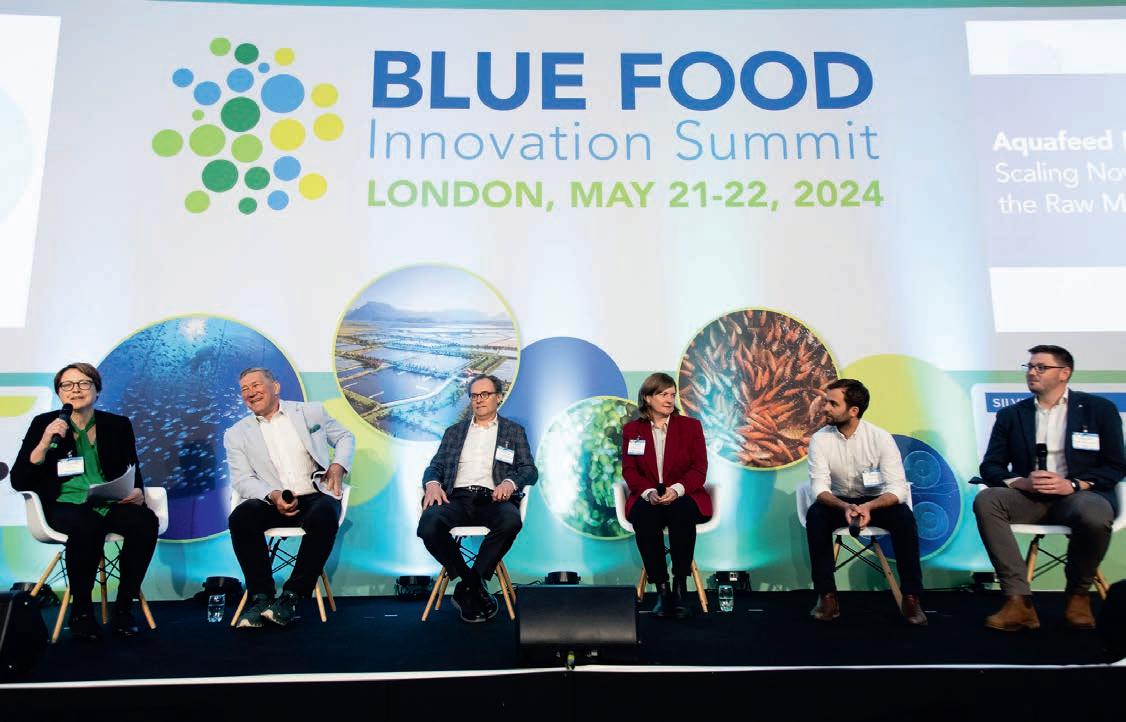
Aquaculture needs to get better at explaining itself, but there were plenty of great narratives at the Blue Food Innovation Summit, as Robert Outram reports
THE Blue Food Innovation Summit, which took place in London on 21 and 22 May, brought together 275 attendees from more than 40 countries to share insights on how the oceans can help to feed us – and whether that can be done sustainably.
The Summit revealed a “blue food” sector with huge opportunities, but which also struggles sometimes to explain itself to investors and consumers.
The opening address came from UK government minister Lord Benyon, who praised the salmon sector’s contribution to the national economy but warned that the industry has more to do if it is to address its critics.
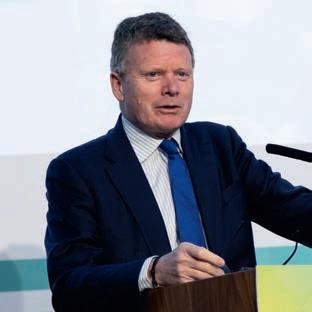

Lord Benyon is (at the time of writing) Minister of State for Climate, Environment and Energy, a joint post with both the Foreign, Commonwealth and Development Office (FCDO) and the Department for Environment, Food and Rural Affairs (Defra). He was opening the Summit on 21 May – as it happened, the day before Prime Minister Rishi Sunak made his surprise announcement and started the UK general election campaign.
The Minister noted the scale and importance of the salmon
industry. He also, however, acknowledged problems with the sector, including sea lice, recent high levels of mortality and use of antibiotics.



Lord Benyon said: “The salmon sector is already investing in technical solutions. But more needs to be done. I’m proud to see the UK leading the way in sustainable salmon farming.”
The Minister added that Brexit had changed the policy framework for the UK, with flexibility to set national priorities including protecting the marine environment and the sustainability of fisheries.
He also referred to the potential for expanding the seaweed industry and said that Defra has been working with the Marine Management Organisation to improve the licensing process.
Lord Benyon concluded: “We are rightly proud of the sustainable and traceable seafood that is produced around our coast.”
The conference’s opening panel, on the topic of “food system resilience”, chaired by Nature Conservancy’s Michael Doane, brought together Catarina Martins of salmon producer Mowi, feed group BioMar’s Paddy Campbell, Lorella de la Cruz of the European Commission and Michael Rubino of the National Oceanic
and Atmospheric Administration in the US.
All the panel members agreed that sustainability is a key issue for the “blue food” sector and a key factor in the “licence to operate”. Catarina Martins added, however: “There is a gap in understanding between those who set regulatory frameworks for aquaculture and those who are involved in the sector.”
It was agreed those in the sector need to get better at telling their story, to ensure that both regulators and the public understand its benefits and challenges.
Addressing the financial landscape, a panel representing investment companies balanced their innate optimism over the sector’s possibilities with a more sober view of the availability of capital in today’s world. As AquaSpark’s Amy Novogratz put it: “A lack of framing and knowledge, and the need for success stories, is holding us back.”
Other panels at the Summit covered, among other topics: changing consumer priorities and the need to communicate the value and sustainability of food from the sea; aquafeed and the need to find alternative sources, especially fish oil substitutes; the increasingly important role of artificial intelligence in aquaculture; “biodiversity” and how to measure and define it; and the need to improve transparency and traceability in seafood supply chains.
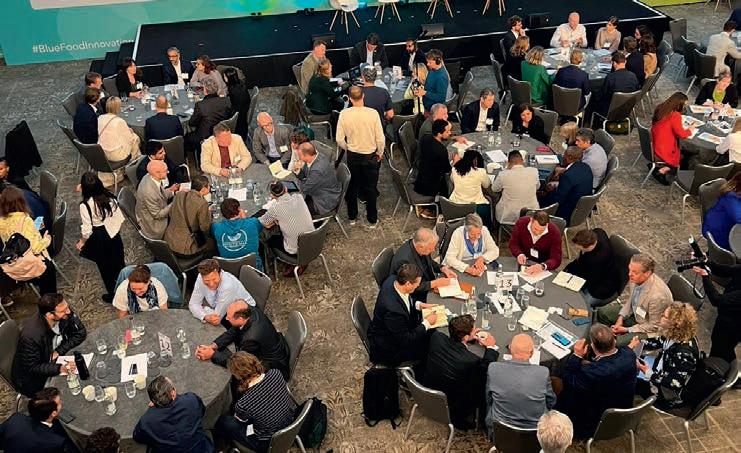



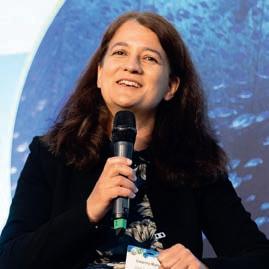
Jamaica’s
Jamaica’s Juli-Ann Russo introduced the Caribbean Aquaculture Education and Innovation Hub, which aims to tackle the problem of overfishing by building up skills in aquaculture, and to create a Caribbean marine park.
Aquaculture Education and Innovation Hub, which
Also presenting was GeoSalmo, a land-based salmon farm project in Iceland, which uses a hybrid flow-through system with a supply of pristine seawater filtered through volcanic rock.
With Maarten-Yan Wierenga of Nutreco and Magakli Rousselot of Mirova as facilitators, four
With Maarten-Yan Wierenga of Nutreco and Magakli Rousselot of Mirova as facilitators, four innovative companies had the chance to set out their stall in the Innovation Showcase.
On the latter, playing devil’s advocate, Ben Conneff of Luke’s Lobster pointed out that investment in certification and traceability is expensive for small operators in seafood, like the lobster fishermen in Maine his company works with. The danger, he said, is that the drive to “sustainability” could lead to the consolidation of the industry, giving up social and economic sustainability in the name of environmental sustainability.
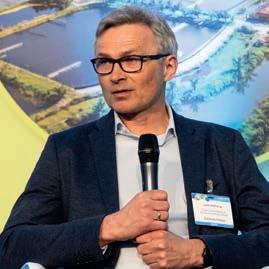

Jim Cannon, founder and CEO of the Sustainable Fisheries Partnership, said he recognised the concern but added that safeguarding structures can be put in place to make sure that environmental initiatives are not exploited by larger players to squeeze out the competition. Delegates heard from three different projects around the world that illustrate the huge range within aquaculture.
Bendito Mar Seafarm, Mexico, is a regenerative aquaculture project based in Baja California, Mexico. It combines community development, restoration of
Oyster Heaven offers “marine regeneration as a smart business opportunity” with a plan to create oyster reefs at the lowest cost and largest scale, with
Oyster Heaven offers “marine regeneration as a smart business opportunity” with a plan to create oyster reefs at the lowest cost and largest scale, with “mother reefs” constructed out clay bricks, a very environmentally friendly material.
For Pine Island Redfish, founder Megan Sorby explained how her company aims to farm the popular red drum in a RAS facility on a Florida island, using waste from the farm as a nutrient for growing mangrove forests and varieties of salt-loving vegetables as a secondary cash crop.
We need capital with a long-term view, and we need collaboration
vegetables as a secondary cash crop.
Joyeeta Das introduced the concept of Samudra, a
Joyeeta Das introduced the concept of Samudra, a robotic, automated approach to seaweed farming that has already been trialled in Scotland. The farm structures are made from seaweed-based plastics - a truly circular approach. Sometimes seaweed can be a problem. Thalasso, a Mexican company was set up to deal with the problem of sargassum, a highly invasive seaweed that has taken over many beaches around
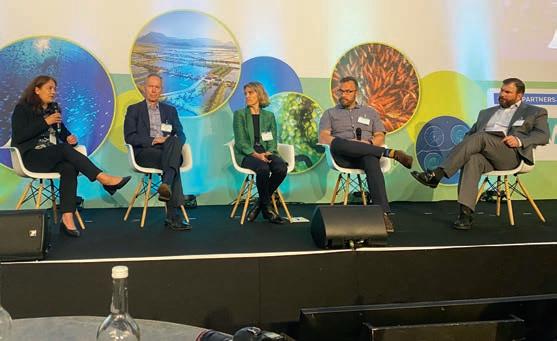
and Douglas Mar�n, MiAlgae; Lord Benyon
This page from top: Roundtables from above; Catarina Mar�ns; Lars Galtun; Food sector resilience panel: (From le�) Catarina Mar�ns, Michael
Photo: Rethink Opposite from top: Aquafeed panel: (From le�) Jane Byrne, Feed Navigator; Chris Ninnes, ASC; Laurent Develle, Regal Springs; Louise Bu�le, DESMFirmenich, Clément Ray, Innovafeed;

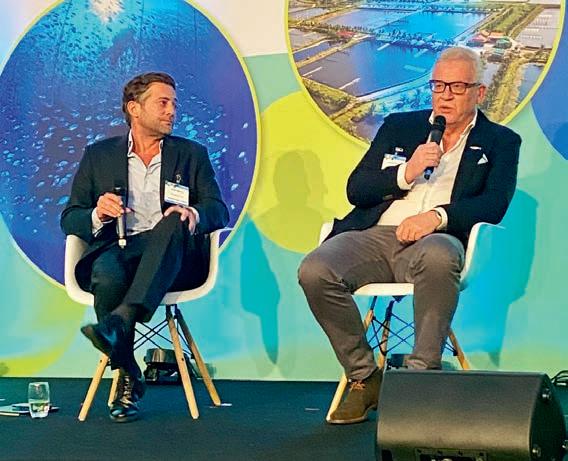


the Caribbean. As Paulina Zanela explained, however, sargassum can be used for a variety of commercial purposes – if only the facilities are there to harvest and process it.
Seaweed was also the theme for the plenary session after lunch, with contributions from seaweed expert Vincent Doumeizel of Lloyds Register Foundation, Patricia Estridge of Seaweed Generation, Benjamin Armejan of Oceanium and Pierre-Yves Pasilier of Notpla, which has developed an algaebased plastic.
The panel agreed the possibilities are exciting, especially if Europe’s seaweed industry can make use of the open ocean, but capital is an issue. Vincent Doumeizel said: “We need capital with a long-term view, and we need collaboration with the seaweed industry in the Far East.”
The conference also heard case studies showing the restorative ocean economy in action.
Hilary Roberts of the Earthshot Prize introduced representatives from: Seaforester, an initiative to replant vital kelp forests on Europe’s Atlantic coast; the “Sea Ranger” programme providing (paid) work experience for young people restoring seagrass in the North Sea; and Purina, the pet food company that has committed to supporting these and other regenerative projects.
Company’s current CEO; Trond Håkon Schaug-Pettersen, CEO of Norwegian flow-through fish farmer Salmon Evolution; and Ståle Økland, Director of Communications and ESG with the AKVA Group, the aquaculture technology business.
The panel agreed there is not just one technology for land-based fish farming that will emerge. As Ohad Maiman put it: “Asking ‘RAS or flow-through?’ is like asking whether a Porsche or a Landrover is a better car. It depends on what you want to do.”

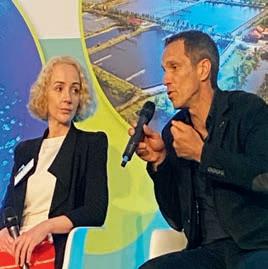
is like asking whether a Porsche or a

Compared with a typical net-pen farm at sea, land-based fish farming requires a higher capital outlay, but Vincent Erenst argued: “Better control makes your fish perform better. We have been surprised at how well our yellowtail have performed in RAS.”

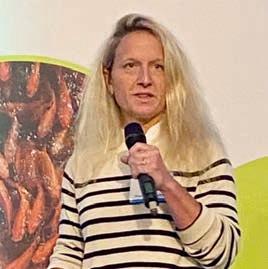
perform better. We have been surprised at how well our RAS.”

– but reliance on a supply
Schaug-Pettersen said flow-through technology is simpler than RAS and there is less to go wrong – but reliance on a supply of clean water at the right temperature limits where you can operate. He said that in terms of capex, Salmon Evolution is now near parity with a sea farm. The technology is developing fast but there are probably limits, as Ohad Maiman put it: “You can grow salmon in the Sahara Desert – but it doesn’t mean that you should!”
A lack of framing and knowledge… is holding us back ”



Other sessions covered the future for smallholders in aquaculture in regions such as Africa and Indonesia – where there are opportunities to invest in taking the sector forward as long as there is also investment in the whole supply chain and infrastructure and not just in individual farms.
The panel on aquaculture production systems brought together some of the key players in land-based aquaculture: Ohad Maiman, a partner in Aquafounders Capital and former chief executive of The Kingfish Company; Vincent Erenst, The Kingfish
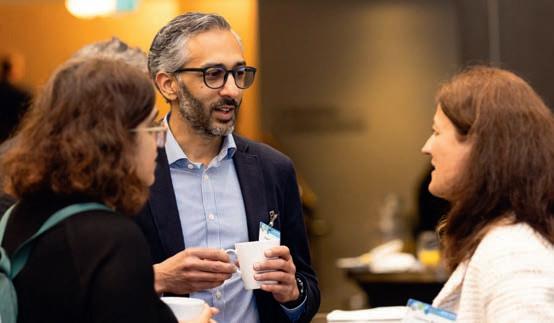
now near parity with a sea farm. The technology is developing fast but there are by
The Summit was organised by Rethink Events. Gold sponsor was DSMFirmenich and Silver partners were ASC, BlueYou and MiAlgae.
Gold sponsor was DSMFirmenich and Silver partners
This page from the top: Ohad Maiman (le�) and Vincent Erenst; Patricia Estridge, Seaweed Genera�on, with Vincent Doumeizel, Lloyd’s Register Founda�on; Megan Sorby, Pine Island Redfish; Amy Novogratz, AquaSpark; Networking at the Summit
“THERE is no contradiction between good sustainability and good business performance. Both those things go in the same direction.”
LARS GALTUNG, CERMAQ GLOBAL.
“Aquaculture cannot be ignored – it must be embraced, but we have to do it better. It’s time to lean in and ensure that the industry grows in the way we want it to grow.”
MICHAEL DOANE, NATURE CONSERVANCY.
“We need to drop the carbon hype [around seaweed] and focus on what seaweed is, and what it can do.”
BRIANA WARNER, ATLANTIC SEA FARMS.
“Social licence doesn’t exist if you don’t build trust… we are in the fight of our lives!”
JENNIFER BUSHMAN, CULINARY MEDIA GROUP.
“When you innovate with new technology, you also have to change as an organisation”.
SVEN KOLSTØ, OPTOSCALE.
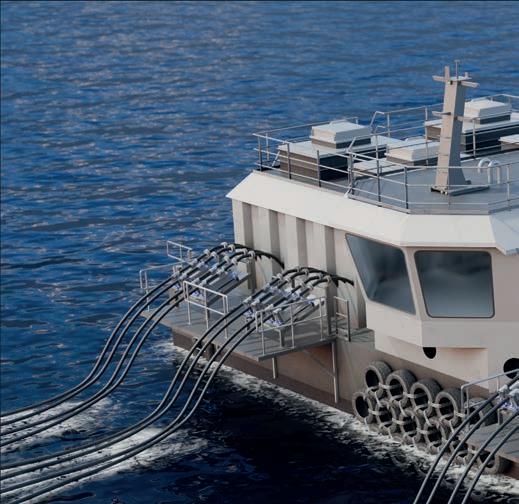
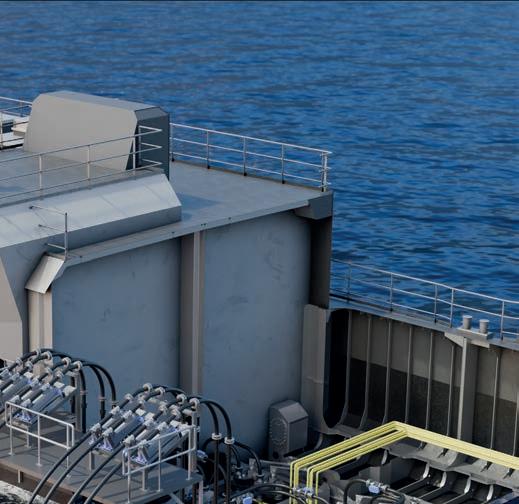




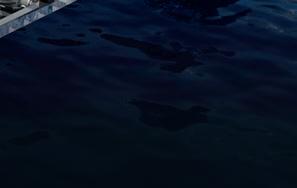



• Multiple deployment options - Dry and wet submersible pump configurations
• Hybrid options - Retrofitted to existing air feed system
• Water transport of pellets reduces wear and clogging of feed pipes
•Reduced power consumption 30-50%
• Reduced noise from feed transport in pipes
• During the first cycle, it can be expected that the entire deep operations investment will be “repaid” in the form of reduced expenses for lice treatment. Increased fish welfare and an associated increased superior share.
• Local and remote control with AKVA connect 4.


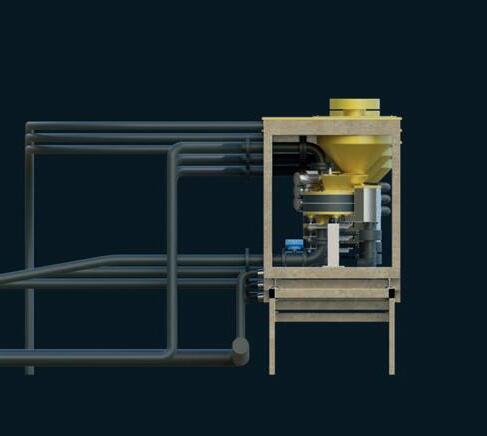

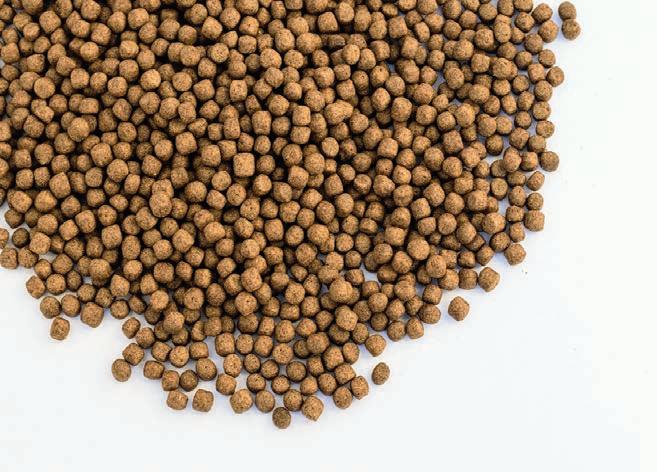
The industry knows that we need to find
alternative ingredients for aquafeed,
but will consumers have a problem with that?



ONE of the North Atlantic’s key fish stocks is in crisis. Coastal states are stuck in a deadlock over quotas for blue whiting, a migratory pelagic fish that is valued as food for humans and as a source of fishmeal and fish oil.
A coalition of businesses, North Atlantic Pelagic Advocacy (NAPA) Group, is calling on the squabbling nations to sit down and thrash out a deal as a matter of urgency or the blue whiting fishery will no longer be considered “sustainable”.
So, why does any of this matter to fish farmers? Whiting is a key marine ingredient for aquafeed, and NAPA represents the biggest names in feed for the aquaculture industry. “Unsustainable” fish stocks cannot be used by a feed supplier looking to establish its credentials as “responsible” and, in particular, suppliers fear that their certification under schemes like the Aquaculture Stewardship Council could be put at risk. Ultimately, it could mean
that their biggest customers would not be able to buy feed derived from potentially endangered stocks.
The impasse on blue whiting involves seven states – the European Union (negotiating as a single entity), Faroe Islands, Greenland, Iceland, Norway, the Russian Federation and the United Kingdom.
For several years these parties have been unable to agree quota allocations, so they have individually set their own catch quotas. Unfortunately, these add up to more than 100% of what scientists say is a sustainable total.
Because of the failure to agree on quotas, the Marine Stewardship Council suspended its certification for Atlantic blue whiting in 2020, but NAPA stepped in with a Fishery Improvement Project (FIP) which offers a route to sustainability through better management of the stocks. This FIP is due to end in October 2024. Without any agreement on the part of coastal states,


blue whiting will no longer be certified as sustainable – and therefore it will be off limits to the big aquafeed suppliers and their customers.
In an open letter to the Oslo government last month, NAPA is calling upon Norway to meet with fish feed producers and reflect seriously upon its own sustainability commitments. The alternative will be that the producers will have to boycott the whiting fishery altogether.
Speaking in April at Seafood Expo Global in Barcelona, Dave Robb, Sustainability Lead with the Cargill Aqua Nutrition Group, said: “Without a science-based sharing arrangement between coastal states, blue whiting cannot be used for Aquaculture Stewardship Council (ASC) feeds.
“At Cargill, we are obliged to source fish sustainably, just as salmon producers and other aquaculture businesses are obliged to purchase certified feed. There is very little time left for change. We are preparing





for a future where we must fundamentally change the sources of marine ingredients we use.”
As Mowi’s Salmon Handbook 2024 points out, feed for salmonids was once heavily dependent on marine ingredients. Unpredictability of supply, and related high prices for fish meal and fish oil, have led fish farmers to look for alternatives and now vegetable protein and vegetable oil represent a substantial percentage of typical salmon feed.
In Norway, for example, fish oil and fish meal combined accounted for just 30% of aquafeed last year.
Atlantic salmon can grow and be healthy as long as they have the right combination of protein, amino acids, vitamins and other






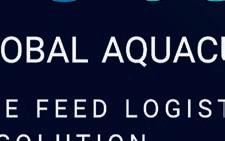

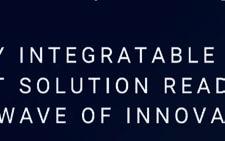
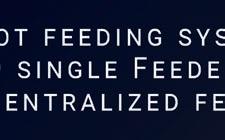
nutrients. They do not have to come exclusively from marine ingredients, but the more these are reduced, the more specialised alternative ingredients – such as algal oil, containing the long chain fatty acids known collectively as “Omega-3” –are required.
As the handbook points out, the supply of fish oil and fishmeal is volatile, and this is reflected in the price. Last year in Peru’s second anchovy season – an absolutely vital part of the world market – only 6,000 tonnes of fish oil was produced.
IFFO, the international organisation representing the marine ingredients industry, says that for the first three months of 2024, global fishmeal production dropped by approximately 27% compared to the same period in 2023.
This decrease was driven by the early onset of the second fishing season in Peru’s North-Central region back in 2023, along with a lower-than-average granted quota, resulting in a diminished catch at the tail of the fishing season at the beginning of 2024.
There is very little time left for change




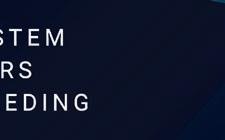


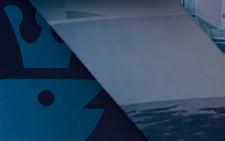





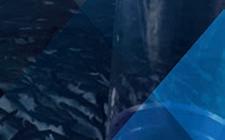




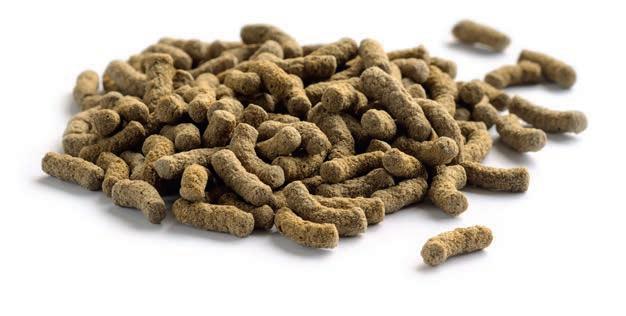
In contrast, Chile, the USA and the African countries have been showing a positive trend in fishmeal production compared to 2023.
As for fish oil, IFFO says, globally, cumulative output through March 2024 was 30% down year over year, mostly due, here again, to the timing of the Peruvian fishing season last year. In 2024 so far, the USA and the African countries are the only ones that have registered a positive trend compared to January-March 2023.
Meanwhile the argument is often made that using forage fish for animal and aquafeed risks depriving local communities of a nutritious food source.
Of course, plant-based ingredients are not entirely free from volatility. In 2022 wheat prices spiked, for example, following Russia’s invasion of Ukraine, and there are also questions about the sustainability of soya crops if mass deforestation is required to grow them.
It’s not surprising, then, that there has been a concerted effort to find alternative protein sources. Insects fed on agricultural by-products, myco-protein derived from fungi and single-cell microbes are all being actively explored, to name just three. But will consumers balk at eating fish fed on unusual ingredients?
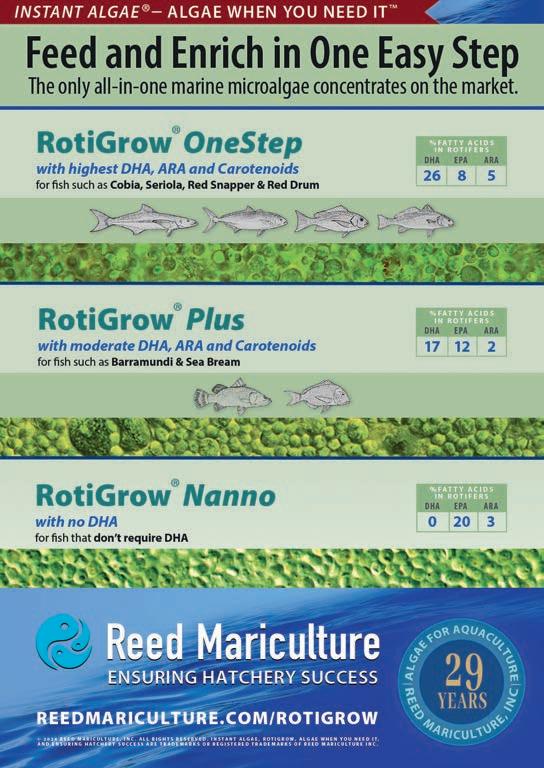
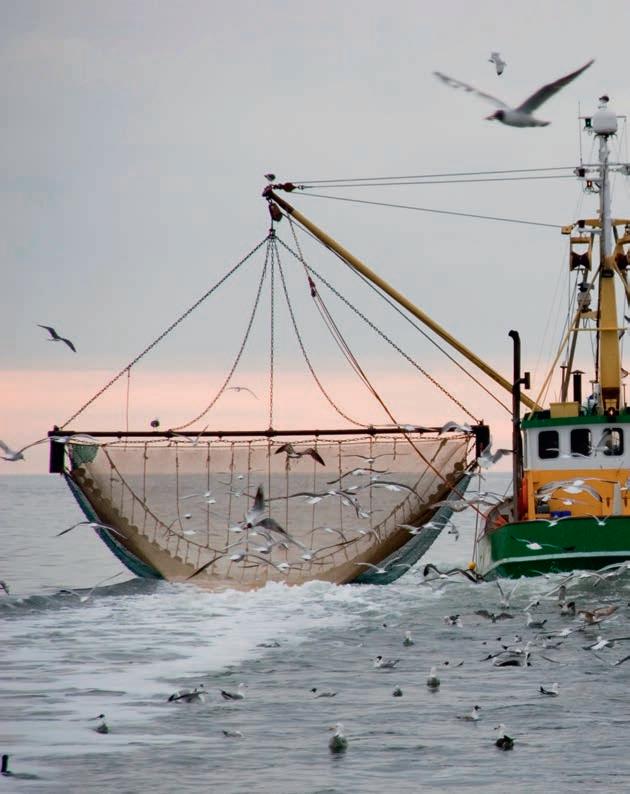
A recent study by Norwegian research institute Nofima, with the retail group Auchan, found that consumers know very little about what the fish they eat actually eat themselves.
Consulting company Insightquest conducted a consumer survey in France, using focus groups, on behalf of Nofima and Auchan. The survey was conducted in the autumn of 2023 with 24 French consumers between 20 and 45 years of age, from different backgrounds, who all stated that they occasionally buy salmon.
“The respondents loved eating salmon, but did not know much about the fish”, says Katerina Kousoulaki, a senior scientist at Nofima.
She is currently leading a project aimed at creating sustainable salmon feed from algae and insect meal. This is why she has been listening in on focus groups where French consumers of salmon have discussed their beliefs and thoughts.
“My impression is that we need to educate the consumers”, says Kousoulaki.
My impression is that we need to educate the consumers
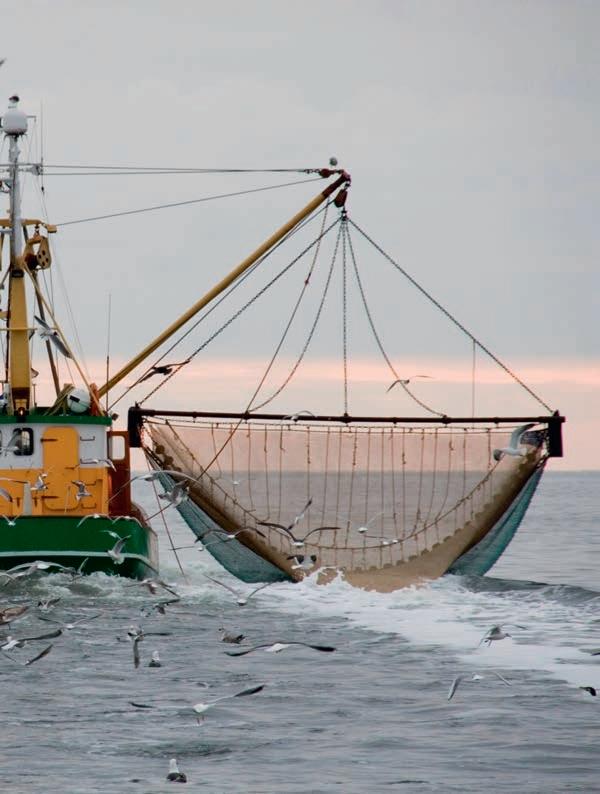
It turns out that consumers know very little about Norwegian salmon. What’s more, they think they “know” several things that are in fact wrong:
“Everyone was sure that farmed salmon contains lots of antibiotics – which is not correct. They like to eat salmon, but they don’t know much about how it is produced,” Kousoulaki adds.
When even existing knowledge is lacking, it makes it even more challenging to talk about feed with new raw materials.
“If you ask people what salmon eat in the wild, many will answer ‘algae’ and ‘shrimp’. However, salmon don’t eat algae, and they don’t eat much shrimp, either. They mainly feed on fish, and upriver they feed on insects,” she explains.
“Many of the surveyed consumers had a positive attitude towards using algae in fish feed but did not think that insects were a natural food for the salmon.”
François Saulais, international coordinator for the seafood division of Auchan, commented: “Our customers’ knowledge about the products they buy is not as good as we would like. This does not come as a surprise to us; the only surprise is that more people than we thought believe that fish farmers use antibiotics and growth hormones, a misconception we need to address.”
Sandra Bretagne, a leading partner in Insightquest, is confident that it is possible for consumers to accept salmon being fed more insects and algae – but it will take time and focused communication efforts.
She argues: “We need to start the communication on a very basic level. Consumers have little knowledge about industrial processes.”
It seems that it is not just the fish that need to be persuaded to accept novel ingredients.























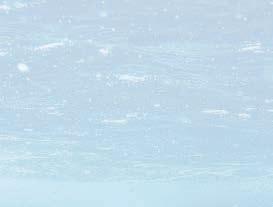
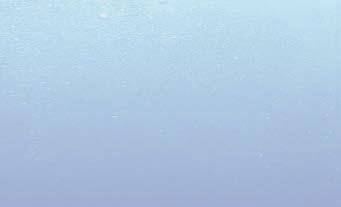

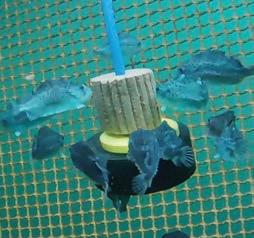


Integrated aquaculture is catching on in world-wide markets, reports Julia Hollister
INTEGRATED multi-trophic aquaculture, or IMTA, is similar to polyculture, where two or more crops are farmed in an integrated fashion to improve efficiency, reduce waste and provide ecosystem services, such as bioremediation.
“All the research has one main goal: to feed the world,” says Michael D Chambers, PhD Research Associate Professor at the
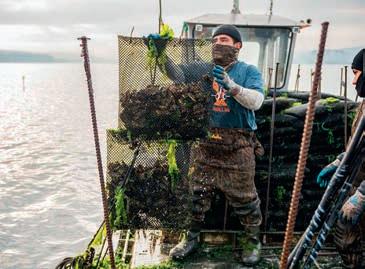
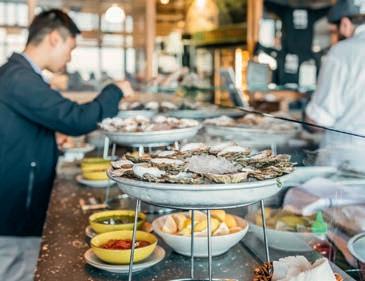
University of New Hampshire, Aquaculture Specialist, School of Marine Science and Ocean Engineering and Center for Sustainable Seafood Systems.
The Center is rethinking how seafood is produced not only in the US but the world.
The US has seafood trade deficit of approximately $16 billion (£12.6bn), with products shipped over the oceans contributing to industry’s carbon footprint. Sustainable seafood produced locally reduces this climate impact and provides jobs that enhance communities.
“For instance, innovative seafood systems can balance combinations of finfish with extractive species (shellfish, sea vegetables) and echinoderms (sea urchins and sea cucumbers) on land or at sea with positive environmental impact. Products are not only for human consumption, but also animal feed, organic fertiliser, and fuel,” Chambers says.
Multi-trophic sea farming can better utilise the three-dimensional space at a farm. It utilises the bottom, mid-column and surface areas of a site. The lower trophic species such as shellfish and seaweed provide ecosystem services through nutrient extraction from the fish in culture and from the environment.
As Chambers explains: “This reduces nitrogen input and provides additional income to the farmer by growing and selling multiple species from a farm. I have been advancing open ocean farming technologies for over 30 years in the US and abroad. In the US, we have managed submerged cage culture projects in the Gulf of Mexico, Hawaii and the North Atlantic.”
This page from top: Hog Island Tomales Bay Farm; Hog Island harves�ng; Hog Island Oyster Co, San Francisco Opposite from top: Combined mussel and seaweed farm, graphic; Combined mussel and seaweed farm at sea
I have been advancing open ocean farming technologies for over 30 years
More recently, he has been developing and training fishermen on small scale, integrated multi-trophic aquaculture of steelhead trout, blue mussels, and sugar kelp on floating platforms.
Additional efforts at the University of New Hampshire includes development of novel submerged mussel, seaweed and sea scallop techniques that can minimise potential entanglement of marine creatures.
Species at the lower trophic level (usually plants or invertebrates) use waste products such as faeces and uneaten feed from the higher trophic species (typically finfish), as nutrients. The lower trophic species can then be harvested to give the farmer more revenue, or even to be fed back to the fish.
The owners of Hog Island Oyster Co, north of San Francisco, which grows oysters in the bay and runs several Bay Area restaurants, have long wanted to harvest the seaweed to put into the nori butter and hand-harvested sea salt used to flavour the restaurants’ dishes.
Now, after years of planning, the edible sea lettuce and rusty-brown nori seaweed that grow there are finally being collected for culinary use.
Earlier this year the company completed its first major harvest of 500 pounds of wet seaweed, mostly nori. The nori will be dried, which shrinks it to one-tenth of its original weight.
“There are many different types of integrated aquaculture systems being utilised or researched in the United States,” says Fritz Jaenike, Executive Director of the Texas Aquaculture Association.
In many types of integrated aquaculture systems, there are bivalves such as oysters being utilised and macroalgae species such as kelp. No companies are actively utilising integrated aquaculture systems in Texas, however.
Jaenike says: “Although there are several oyster farms operating in Texas, to my knowledge, none of them are utilising integrated aquaculture systems with algae which is harvested as part of the aquaculture system. Currently several integrated aquaculture systems utilise kelp as a harvested macroalgae which is harvested as a by-product of the system. Kelp is a cold water species that we cannot grow in Texas waters.”
There is also a new integrated system being operated in Maine which is using fish and polychaete worms as a multi-trophic integrated aquaculture system.
IMTA has been the focus of worldwide research because it is seen as a way to make aquaculture more sustainable – and profitable – on land or at sea. An oftenheard criticism of finfish net pen aquaculture is that wastes, and uneaten feed pollute the bottom under the pens and release nutrients such as nitrogen into the water,
which in turn can fertilise algae blooms.
In IMTA, other organisms that can use these wastes as nutrients are grown by the fish farmer in proximity to the net pens. In a recent trial carried out in Canada by Cooke Aquaculture, kelp was grown nearby salmon net pens to utilise the nitrogenous wastes excreted by the fish.
The CCAR (Center for Cooperative Aquaculture Research) has worked on IMTA research since 2009, with cages in Mexico and a location near Guam.
In the first study, scientists captured wastes from a halibut tank system and fed them to marine worm beds in a series of raceways. The worms thrived on the waste feed and faeces, and required only a minimal input of additional feed.
Encouraged by these findings, and with the help of funding from the Maine Aquaculture Innovation Center, workers were able to colonise the sediments under the pens with worms.
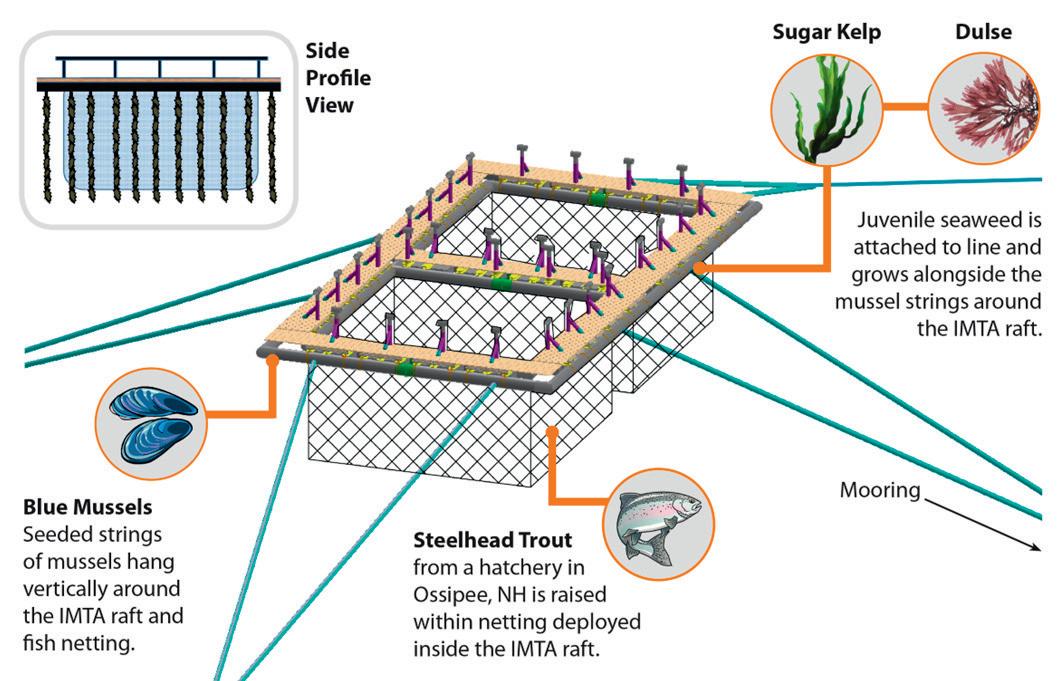

√ Aquaculture technology that is scaled appropriately for fishermen and family farmers.
√ An affordable, user friendly platform.
√ Can locate farm near or between fishing grounds.
√ Helps fishermen diversify their trade and income on the working waterfronts.
√ Provides a new source of fresh, sustainable seafood to local markets.
√ Utilises species with high market demand.
√ Reduces nitrification from fish through integrated multi-trophic aquaculture.
The Chinese fish farming sector is steadily growing, as part of a drive to ensure food security, as Eugene Gerden reports



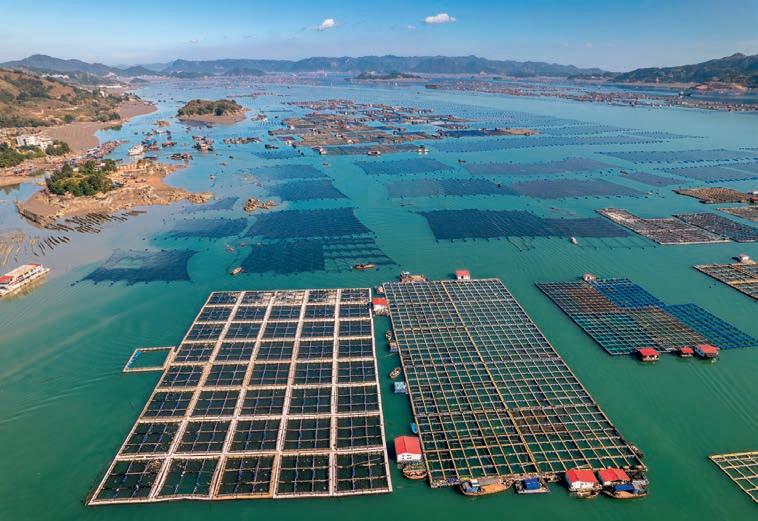

THE Chinese fish farming sector is steadily growing these days thanks partly to the growth of the country’s economy as a whole, which stimulates local demand for quality fish, especially in vast rural provinces of the country.
Last year, China recorded gross domestic product (GDP) growth of 5.2% and the International Monetary Fund expects that growth will be around 4.6% in 2024.
Despite the economic progress achieved by China in recent years, however, the majority of the country’s 1.4 billion population still live in its rural areas, where the level of well-being remains still very low. The most complex situation is seen in western provinces of the country, which do not have access to the sea.
The development of the fish farming sector since the beginning of the 2000s has been considered a priority by the Chinese



government, as a way to ensure stable food supplies to the poorest provinces of the country, as well as employment for the local population.
China remains the only country among the world’s major producers where aquaculture production exceeds catch fishing. This is partly due to its geographical conditions, given that inland rivers, lakes, reservoirs, ponds and other waters cover an area of 550 million acres, and the inland water surface area suitable for aquaculture production is about 100 million acres.
China is also one of the world’s largest consumers of fish and seafood. With annual consumption reaching 68 million tonnes and continuing to grow, despite limited fish catch, the bulk of the country’s needs in fish and seafood are already met by farmed fish. It is possible that its importance will only continue to grow.




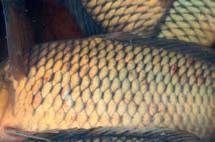



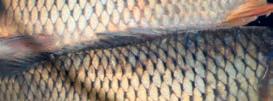


The existing moratorium for catch in the coastal fishery areas every summer leads to the decline of the overall fish catch in the country and contributes to the growth of fish farming sector.
the domestic market now comes from
According to the Chinese Ministry of Agriculture and Rural Affairs, more than three-quarters of fish and seafood in the domestic market now comes from aquaculture, far exceeding the volume of catch fisheries.
The annual volume of farmed fish and seafood produced in China is currently estimated at 43 million tonnes coming from a total area of more than two million hectares. It accounts for 80% of overall consumption of fish and seafood by Chinese.
In 2022, Premier Xí Jìnpíng introduced the “Big Food” concept, launching an initiative which calls for an effective supply of major food groups and protein diversification, improving the efficiency of domestic agricultural production and reducing food waste.
The latest state plans envisage aquaculture as an important driver of growth for many of the country’s poor rural areas, and the means to ensure the food security of the population..
“The implementation of the ‘Big Food’ concept in the fishery field has a foundation, advantages and huge potential,” said Liu Xinzhong, Director of the Fisheries Administration Bureau of the Ministry of Agriculture and Rural Affairs.
The Chinese government also plans to create conditions for the further expansion of the range of fish and seafood grown in the People’s Republic, which already now exceeds 300 species both for marine and freshwater aquaculture.
According to the Chinese National Bureau of Statistics, in volume terms, the annual output of the marine aquaculture




sector is about 22 million tonnes and has seen annual growth rates of 4%-5% in the last several years. In value terms, the sector is estimated at 370bn yuan (US $51bn or around £40bn)
Among the centres of marine aquaculture production in China are the provinces of Hubei, Shandong and Jiangsu.
In terms of products, shellfish account for a large share of China’s marine aquaculture, with an output of 15 million tons in 2023, accounting for 69.67% of the national output; algae are second, with an output of 2.5384 million tons, accounting for 12.29%. The output of fish and crustaceans is similar, at 1.6058 million tons and 1.7438 million tons, accounting for 7.78% and 8.44% respectively.
As for freshwater aquaculture, at present its annual output is estimated at 21 million tonnes with an annual value of up to 620 billion yuan (£67bn). Compared with marine aquaculture, China’s freshwater aquaculture industry has a longer development history, a more complete industrial structure and a larger output value.
This year, the government has plans to continue its active support of the domestic aquaculture sector, paying a particular focus to mariculture.
In 2023, the Chinese government allocated 390m yuan (£42m) in fishery development subsidies to support the construction of 39 national marine ranch demonstration areas, and more than 300 marine ranches have been built.
No. 1”, have been cultivated in various coastal areas.
As for large yellow croaker, it is currently the fish with the highest production volume of marine aquaculture fish in China, with national aquaculture production reaching 254,000 tons per year.
Xu Leju, Director of the Fisheries Development Strategy Research Center of the Chinese Academy of Fishery Sciences, said that to better meet consumers’ demand for high-quality aquatic products, the government plans to rationally adjust aquatic products through measures such as cultivating high-quality aquatic product varieties, promoting high-value, well-known varieties, and improving breeding technology.
Xu Leju commented: “It is necessary to strengthen the construction of aquatic product cold chain logistics, further expand the aquatic product consumption market in the western region, and accelerate the construction of a cold chain logistics channels.”
As part of its plans, the government has also plans to tighten environmental controls for the sector. It said that some major successes have already been achieved in this field in recent years. For example, the Second National Pollution Source Census Bulletin, which has been recently published by the Chinese government shows that compared with 2007, the emission intensity of chemical oxygen, total nitrogen and total phosphorus per unit output of aquaculture produced decreased by 20.0%, 23.8% and 30.7% respectively.
With a big population to feed, plans for developing China’s aquaculture sustainably need to be equally big.
Opposite: Aerial view of the sea fish farm cages and fishing village in XiaPu, FuJian province, China
Above: Carp in a market
This page from top: Yellow croaker; aquaculture fish ponds in Kunming, People’s Republic of China
Particular attention will be also paid to the increase of domestic deep-sea aquaculture output, which is considered as one of the most promising segments for development by the Chinese government and provincial authorities.
In 2023, national deep-sea aquaculture output exceeded 393,000 tons, accounting for more than 20% of the marine fish aquaculture output. New species suitable for deep-sea aquaculture, such as large yellow croaker “Yongdai No. 1” and “Fufa No. 1” and golden pomfret “Chenhai
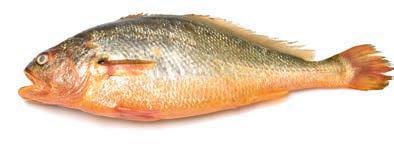
The fish farming sector… has been considered a priority by the Chinese government





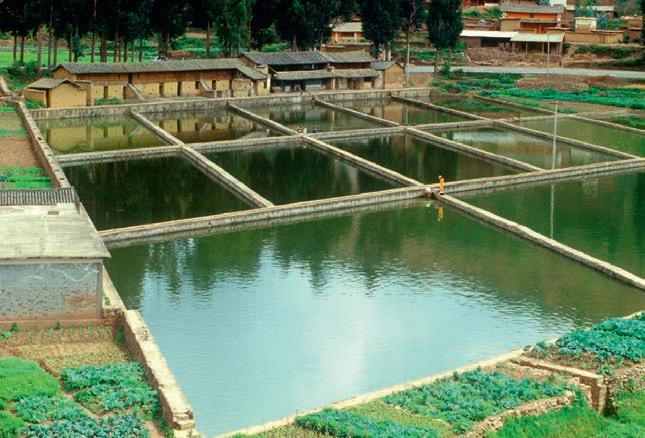
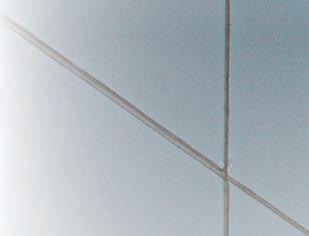




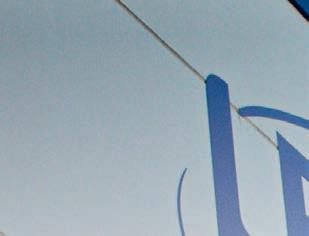
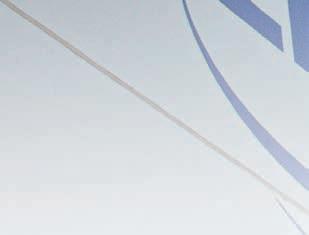







As Vince McDonagh reports, Lerøy Seafood Group says it is finding solutions for the many challenges that beset the business last year




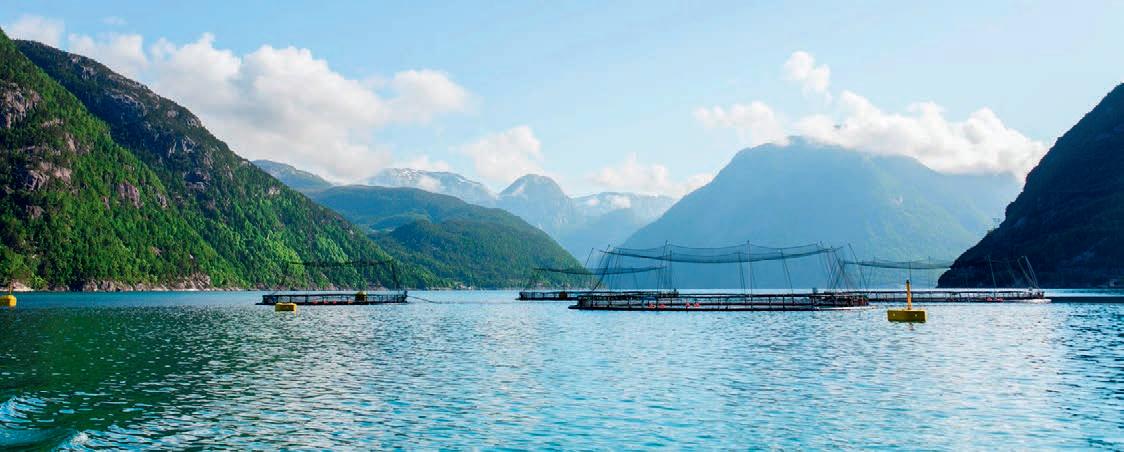
THE Lerøy Seafood Group is celebrating its 125th anniversary this year, but 2024 is already off to quite a dramatic start.
Fish escapes, biological challenges and issues with Listeria are among the problems that the company has been forced to tackle recently.
Determined to not to be overwhelmed, Lerøy is fighting back, and the early signs suggest that it is winning.
The group’s fish farming and deep sea trawling businesses are largely Norway based, but its fortunes are also important to the UK. Lerøy owns half of Scottish Sea Farms which, incidentally, has turned the corner with its own problems.
Lerøy CEO Henning Beltestad tells investors in the group’s annual report that 2023 had been a year full of learning. Well, that is one way of describing events of the recent past.
In 2023 the company endured everything from the threat of large ice floes to severe jellyfish attacks and mass mortalities. And some of those issues did not end with the start of a new year.
Nevertheless, Beltestad says that the group continued to develop in growth as it has done throughout the last 30 years.
efficient and sustainable value chain for seafood. We are always looking for ways to improve our company.
“We are developing the company for eternity. And never in our history have we learned so much as we did in 2023. We got new and better insights about technology, handling big sets of data, and gained a lot of new insights.”
And despite cod quota reductions, the company recorded its highest wild catch volume because it was able to turn to other species.


“Last year we passed an income of NOK 30bn (£2.2bn) for the very first time in our history. At the same time, 2023 has been a challenging year in some areas.
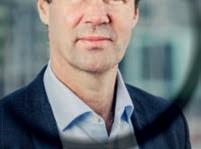
“However, we are working in a structured and targeted manner to solve the challenges and continuously creating the world´s most
It was also “leaving a rough time behind” with its aquaculture value added products ( VAP) sales and distribution segment following two years of Covid and extremely volatile prices.
To add to these challenges, the company had been faced with a strong increase in raw material prices.
The year 2023 wasn’t all uphill though. The group saw a significantly improved performance through better utilisation of the capacity in its factories and
”
We are developing the company for eternity

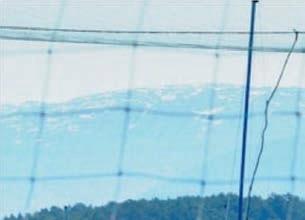

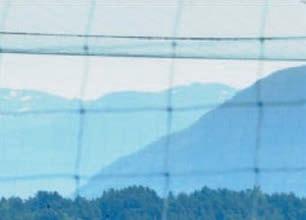
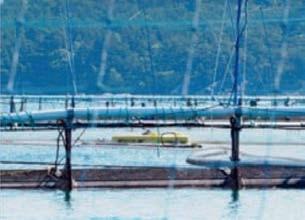
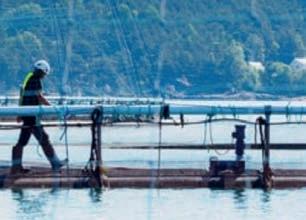
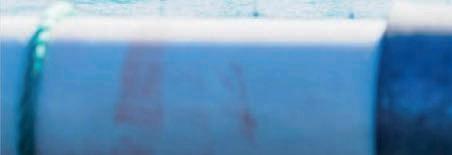
an improved market balance, and it expects that to continue.
Lerøy and its CEO believe new technology is one of the principal keys to future improvement.
He says: “We have had challenges due to fish health and welfare, and we see that implementing new technology helped to solve some major issues in our aquaculture segment.
“The new technology that we started to implement last year is working very well, and so far, the results are promising. Lerøy is committed to ensuring sustainable aquaculture and will continue to roll out these technologies in the near future.
“The aim is for 35% of the salmon to be placed in submerged or semi-closed cages by 2024. I am also eager to notice that our employees have a strong belief and motivation for these solutions, and everyone is working very hard in this direction.
“Working with our new shielding technology, we have significantly better control on the fish and on its welfare.
“This shielding of lice will bring down our need for lice treatment and the fish will have better health and welfare.”
There has been similar progress with sustainability and digital transformation, which it describes as a long-term strategy. Lerøy has set out a development plan that includes ending the complex and very
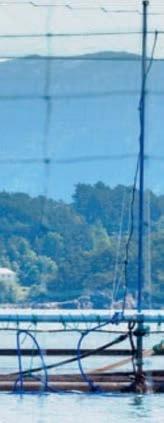


fragmented chains which seems to be an inbuilt part of aquaculture.
It says these are incompatible with the requirements of customers and with regard to other issues such as food safety, cost efficiency, traceability and increased sustainability.
The CEO states: “We have always been a customer-centric company, and our vision requires us to keep developing to become a preferred supplier of seafood on a global scale.
“Our customers are predominantly within retail and food service, and our aim is to increase their satisfaction and willingness to pay through an efficient and sustainable value chain, with a large product range and customer integration.”
He adds: “In turn, this will help our customers gain new market shares. As we have grown, we have therefore focused on securing access to raw materials that are fully traceable and have gradually developed an integrated value chain for seafood. “
This integrated value chain for seafood is a key part of Lerøy’s long-term strategy, the company says. It will entail developing long-term customer relationships and an in-depth understanding of the customer’s requirements, continuously improving the processes in the group’s own value chain and developing strong alliances with suppliers.
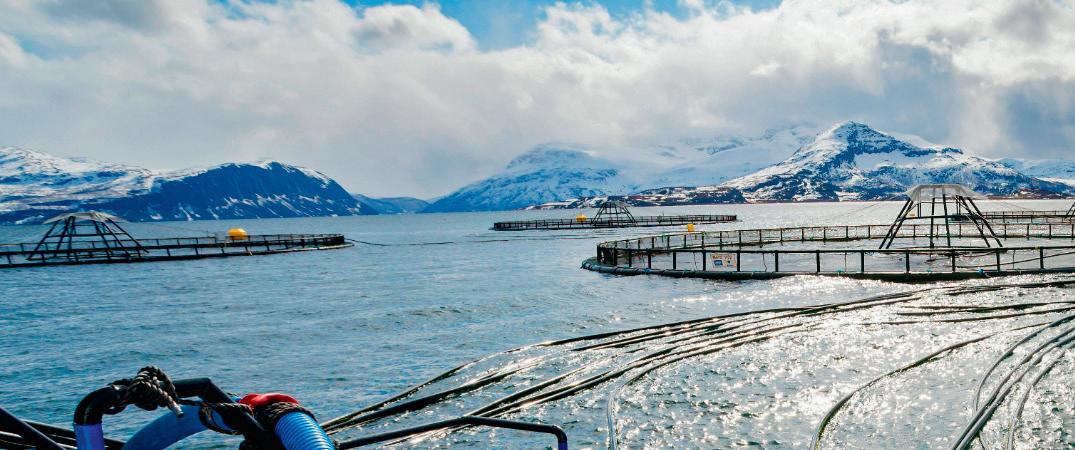
LERØY says lice pose a substantial challenge in the open sea phase.
Sea lice, and the treatments required to comply with the regulatory maximum number of lice per individual fish, have a substantial impact on both growth and fish welfare.
In 2022, a programme initiative called “Coastal Production Technology” was launched. The programme evaluated a significant number of different technologies intended to shield the farmed fish from sea lice, in order to determine which could be suitable and where the deployment of such new technology would have the greatest impact.
As of today, the technologies used across different sites in Norway are much the same. For its part, Lerøy believes that more site-specific technologies will be deployed in the future.
The implementation of such new technologies continued through 2023. This includes four fully submerged installations and one with semi-closed technology.
The plan now is to roll out a further 12 installations in 2024, of which 10 are submerged and two are semi-closed.
Around one third of Lerøy’s salmon will be raised in installations that make use of “shielding” technologies by the end of 2024.
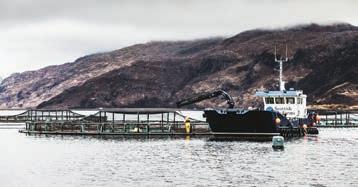
SCOTTISH Sea Farms Ltd (SSF) is one of the largest aquaculture companies in the UK. And Leroy says 2023 was an extremely challenging year, with significant biological challenges related in part to micro jellyfish.
SSF harvested about 25,000 tonnes of salmon in 2023, down from 36,000 tonnes in 2022. Which gave it an operating loss, before fair value adjustment related to biological assets, of NOK 303m (£22m) in 2023, down from an operating profit of NOK 214m (£15.5m) in 2022.
But at the start of 2024, the biological situation had turned around with a significant improvement in both biological and financial results. The harvest volume in 2024 is expected to total 37,000 tonnes.

Instead of a dozen species-specific standards, the ASC is rolling out one. Robert Outram finds out why
THE Aquaculture Stewardship Council (ASC) is one of the leading standard-setting bodies in the sector – and its new Farm Standard is set to bring in some major changes.
The final consultation period on the new Farm Standard has just ended, and the ASC staff are working through responses, ahead of finalising the Standard.
The biggest difference is that, instead of the existing range of species-specific standards, the new Farm Standard comes in the form of a single global, robust standard. The Farm Standard addresses, in particular, environmental and human rights impacts of aquaculture, regardless of production system or location of the farm. It also includes new requirements on animal health and welfare, contributing to lower stress and better wellbeing.
Launching the last round of consultation

earlier this year, ASC CEO Chris Ninnes said: “This new Standard will draw together years of experience, research and input from a range of ASC stakeholders spanning many backgrounds. It is a milestone development not only for ASC certification, but also for responsibly produced farmed seafood worldwide.”
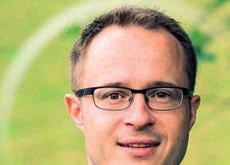
of times as saying the bigger the impact, the stricter the Standard becomes.”
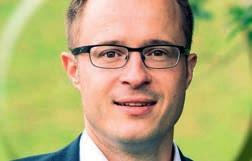
This means that in a more sensitive area the requirements will be stricter – such as for a fish farm in a protected marine area, or one situated in the same body of water as a number of other farms.

Fish Farmer talked to Michiel Fransen, ASC’s Director of Standards and Science, about the thinking behind the new Standard and how the organisation plans to take it forward.
First, what are the most far-reaching elements of the new Farm Standard? Fransen points to the revised environmental elements, especially as regards the benthic (seabed) and water quality requirements, which have been improved.
He says: “Within both criteria, we have content that allows the Standard to be more tailored towards the site’s specific circumstances, and that means that the Standard becomes more relevant for the variety of production systems and regions that the ASC Programme covers.
“We’ve referred to the concept a number
Fransen also points to “Principle 4” which for the first time sets out a general principle for animal health and welfare in aquaculture.
This includes “operational welfare indicators” such as observable wounds and behaviour. The Standard is also prescriptive regarding the slaughter process and permitted slaughter methods.
Fransen explains: “We’ve composed a number of technical working groups on these welfare-related topics and there’s now actually a lot of evidence of scientific understanding of what is better practice when it comes to slaughter, and generic welfare, available for the majority of species in the ASC Programme.
“The previous standards either had seven or eight principles depending on the document.
“The welfare component was far less
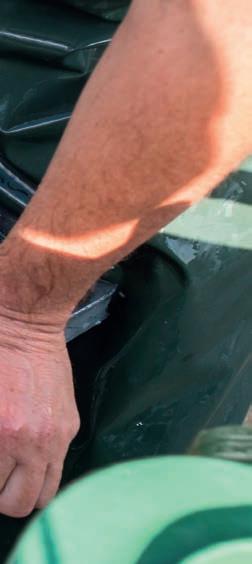
”The bigger the impact, the stricter the standard becomes
advanced compared to where it is now, and that’s something that we’ve sought to improve in this new version.”
These revised requirements on benthic impacts, water quality and welfare are likely to require more action and attention on the part of the industry. To help them comply, the ASC is implementing a transition period, with clear communication on the new rules, and also offering a service to advise and guide farmers.
The Standard also comes with an embedded calculation methodology, which is in essence an easy way for producers to calculate their greenhouse gas emissions, not only on site, but also down into the supply chain. This will help not only producers, but also the retailers they supply, to report their carbon footprint.
Fransen says: “The Standard gets support from the various stakeholder groups that we have that we have interviewed, but they also are quite open on the challenges, especially on the timeline to implement these new practices moving forward.”
ASC is now reviewing and analysing the comments received in this final round and Fransen says they will be accommodated wherever possible.
He adds: “We have, of course, consulted a number of times before. This is the sixth round of consultation in total on parts or the entirety of the document, and throughout those various consultation rounds we’ve sought to incorporate all the feedback generated so far.”
There will also be a training portal set up for producers, auditors and NGOs, so that all the stakeholders directly involved get the same, and the best, understanding of what the ASC Farm Standard requires.
The consultation process for this new Standard has been as thorough as the ASC could make it, with engagement from stakeholder groups across the spectrum, including producers, academics, NGOs, governments and retail partners.
In addition, ASC has also carried out more than 40 interviews with producers and NGOs. The technical staff at several government agencies also have an input through their membership of the ASC’s technical committees.
ASC is seeking to evaluate feedback and finalise the Standard by the end of this year. The document will then be released into the public domain by Q1 of next year, 2025, probably around the time of the next Seafood Expo Global in Barcelona.


Opposite from top: Salmon in a fish farm; Michiel Fransen, ASC; shrimp
This page from top: Trout breeding facility; fish in pen
That release will start a 24-month transition period before the Standard becomes mandatory for all farms in the Programme.
The new Farm Standard replaces 12 existing species standards, which up to now have covered for more than 2,000 certified farms. It still spells out species-
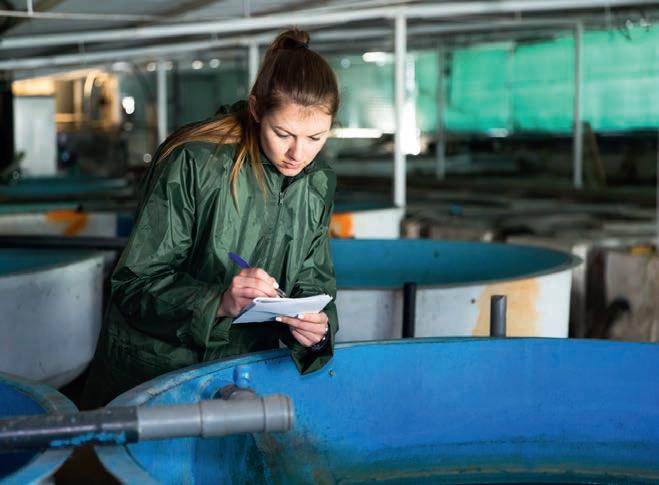

specific parameters within the document, however.
Fransen explains: “Certain criteria or certain indicators apply only to specific culture systems or to specific species in specific culture systems, and that allows us to tailor it [the Standard] as we go through the document.”
One criticism of international standards in aquaculture is that compliance is feasible for large, well-funded producers but a real challenge for the many small operators around the world, especially in the global south.
Fransen acknowledges this but explains what ASC is doing to address the issue: “First, it’s important that the Standards are translated, so they are accessible to producers, together with the needed support on training and guidance material.
“Also, there is a category of producers that simply needs time in order to make the changes and to work up towards meeting the Standard.”
For that ‘pillar’, or category of work, ASC has developed the ‘ASC Improver Programme’ with guidance and resources allowing producers to make steady progression over a number of years, in an assessed and controlled manner. ASC also recently launched ASC Group Certification, allowing groups of smaller producers to work together to achieve certification, lowering the cost for each producer while maintaining the stringent ASC standards.
There is no doubting the ASC’s ambition for this document to be setting the global standard for responsible and sustainable aquaculture.
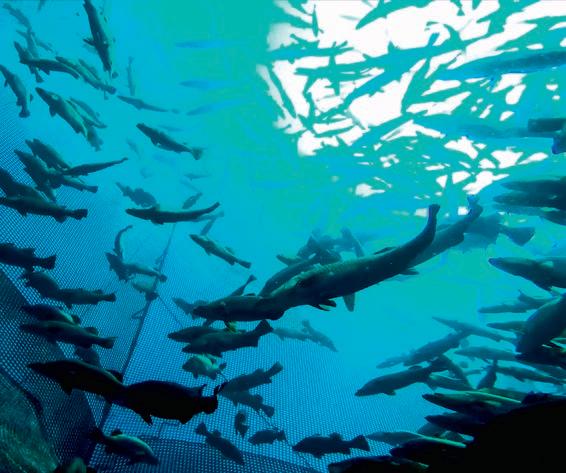













Iceland’s elected representatives are weighing up the arguments for and against further growth in the country’s salmon farming sector. Vince McDonagh reports
ICELAND’S fish farmers could be heading for confrontation with the Reykjavik government over the future of their industry.
The aquaculture bill now being presented to the Althingi, Iceland’s parliament, is setting out a long-term strategy for the country’s salmon sector. The farming companies are far from happy with some of the proposals in the draft bill, however – and they want to see changes.
Iceland’s salmon industry is growing at an impressive rate and has brought major economic benefits to many once depressed coastal communities, which had seen fishing revenue decline.
Aquaculture is also providing a sizeable chunk of tax revenue for the country’s exchequer, which the government cannot ignore.
Politics and fish farming are never far apart, and it is the same in Iceland where much of the country is divided on the issue – especially over open pen salmon farming.
As with most Nordic countries, Iceland is governed by a broad and a sometimes puzzling political coalition.
After the 2021 parliamentary election, the new government became, like the previous government, a tri-party coalition of the conservative leaning Independence Party, the Progressive Party and the Left-Green Movement.
The government is headed by Bjarni Benediktsson of the Independence Party. He succeeded the long-serving Katrín Jakobsdóttir of the Left-Green Movement, who stepped down in April this year and, at the time of writing, is running as a presidential candidate.
The problem for the government is that salmon farming has become highly controversial among some groups over the past year following escapes and other serious incidents.
Criticism, however, tends to be concentrated in urban areas far from where the fish farms are located. It is a different matter to those living on the coast.
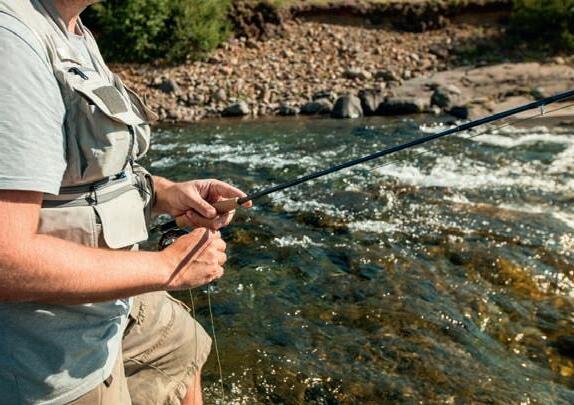



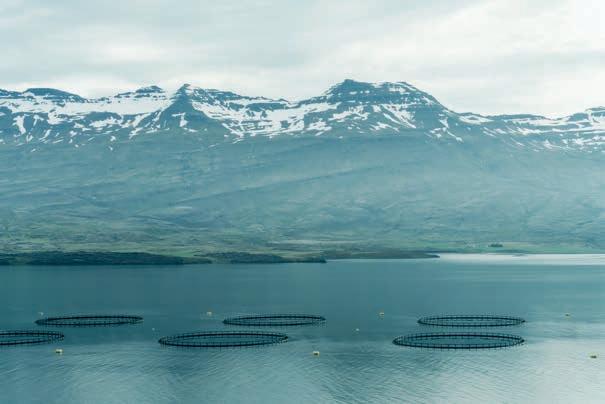
The government believes its Aquaculture Bill strikes a reasonable balance, but the seafood industry organisation, SFS (Fisheries Iceland in English) does not agree. It argues that some of the measures contained in the bill are both excessive and coercive.
A significant proposal which could allay some concerns – and one in which Iceland is likely to differ from the much larger Norway – is that each fjord would be restricting to a single fish farming company, so the farmer would take individual responsibility for issues such as water quality.




Kolbeinn Árnason, Director General at the Icelandic Ministry of Industry and Innovation, said recently the country had learned from Norway and the Faroe Islands that shared responsibility resulted in a race to the bottom, in environmental terms.
SFS maintains: “Fisheries should be built in a sustainable way, but care must be taken that unrealistic demands for risk and fees do not hinder too much innovation and the development of the industry.”
Progress, it argues, should be done through reforms in the administration of fish farming, with incentives for investment in
innovation and more environmentally-friendly solutions.
The SFS also states: “Infrastructure development [is important] together with a simple and efficient regulatory framework and working environment for operators. It is also necessary to ensure increased supply and access to green energy for land heating and general energy exchange, and to strengthen the pillars of education in legal heating holistically.”
The organisation says that it has long focused on strengthening the competitiveness of Icelandic aquaculture and creating the conditions for sustainable productivity growth that results in increased national economic value.
SFS also argues that fees for fish farming in the sea, as set out in the bill, do not take into account the operational status of Icelandic companies and will continue to damage competitiveness in international terms.
The industry also believes the effects of the bill are not sufficiently clear. For example, the minister is entrusted with a great deal of power to make decisions and issue government directives on matters important to the interests of licence holders.
But SFS does concede that the plan does contain a large number of innovations that the organisation believes can contribute to the achievement of some of the goals it seeks, although there are worries over some of the provisions.
Other concerns include broad and disproportionately burdensome injunctive relief and administrative sanctions, along with certain coercive measures and onerous sanctions.
It also believes that some of the monitoring and reporting measures are far too stringent and says that while it supports the establishment of marine protected areas, some of those set out have not been properly studied or evaluated.
There are also concerns over proposals to cancel operating licences and the government is now wavering on whether to make those licences permanent. A period of around 16 years has been suggested.
In fact some Althingi MPs are demanding that the licences should only be for strictly limited periods.
SFS argues: “The most important thing is that operators are guaranteed stability and predictability when it comes to their operating authorisations and that the rules for their renewal are based on objective



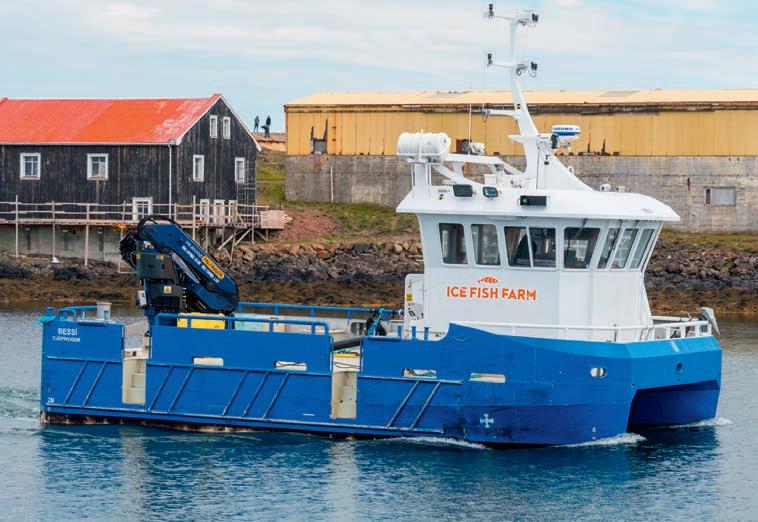




criteria and are compatible with the basic principles of equality and proportionality.”
There has also been a groundswell of opposition from members of the public, environmental lobby groups and organisations representing Iceland’s large sport fishing industry. As reported elsewhere in this issue, more than 46,000 people have signed a petition calling for open net-pen fish farming to be banned altogether.
The industry is still hoping that some of its concerns will be taken on board, but the pessimistic view is that the government has made up its mind and most of what is being proposed will go through. If that happens, it will not make for a happy future relationship.
Opposite from top: Icelandic salmon farm; salmon jumping; sport fishing organisa�ons are campaigning to stop net-pen salmon farming
Above: Ice Fish Farm boat
”Plans to have the licences open for an indefinite period have met with opposition
ICELAND’S Food Minister Bjarkey Olsen Gunnarsdóttir believes her bill is both ambitious and about protecting the environment and nature.
She said Iceland had gone further than nearby fish farming countries such as Norway and the Faroe Islands, adding that the aims of the bill included sustainable development, value creation, settlement in the country and the protection of wild beneficial populations.
There were also measures to reduce lice infestation, protect wild salmon and make excessive waste dumping a criminal offence.
But she may well change her mind on the length of licences issue following political pressure.
She said that during the preparation of the bill, it was believed that these goals could best be achieved by making operating licences open-ended and strengthening regulators’ powers to revoke and reduce licences.
The Minister has since said, however: “The plans to have the licences open for an indefinite period have met with opposition from numerous parties, and I understand that and have considered it necessary to act.”
She has told MPs that the matter has been referred to a committee of the parliament.






Some MPs had described the plan to make licences indefinite as a massive mistake, arguing that government appears to have earlier bowed to pressure from the industry on this issue.



A pioneering net cleaning pump, designed and manufactured by Brimmond, has completed its first live industry campaign. Brimmond’s NetJet™ has spent the last month contracted to a key aquaculture firm, which operates multiple sites on the west coast of Scotland. Managing Director of Brimmond Tom Murdoch said: “Developing such high-end technology, from initial concept through to an aquaculture net cleaning campaign on a west coast fish farm, has been a real team effort. So everyone at Brimmond is absolutely thrilled to see how well the NetJet™ performed during its first outing.” www.brimmond.com/netjet
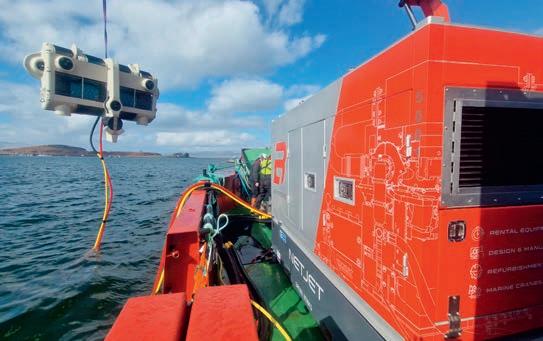
Scottish Sea Farms’ Shapinsay is the latest site in Orkney to complete the installation of Innovasea’s comprehensive environmental solution, aquaEnvironment. Supplied and installed by RS Aqua, this advanced system comprises wireless underwater sensors, a receiver, and a userfriendly dashboard to promptly alert farm managers in real-time to suboptimal environmental conditions that could threaten fish health. This investment represents just one part of a broader initiative to implement solutions aimed at improving livestock welfare, boosting overall farm productivity, and driving the adoption of sustainable farming practices across all Scottish Sea Farm sites. rsaqua.co.uk


As automated fish feeding becomes more sophisticated, so do the demands for ultra-reliable, efficient, and low-maintenance blower systems. Blowers can also be found on specialist feed boats and supply vessels that deliver feed to the farms.
KAESER’s latest innovative Rotary Screw Blowers are highly efficient across a broad flow rate control range. Their exceptional performance and efficiency allow savings of up to 35% compared to conventional blower systems.
Our reliable, energy-efficient KAESER products are specifically designed and built to provide maximum durability in aquaculture environments and ensure maximum process reliability to minimise the risk of downtime. www.kerrcompressors.co.uk

Analysis of DNA traces in the environment is an effective way to assess the health of ecosystems, according to a new study, directed and supported by organisations including the Scottish Environment Protection Agency (SEPA), NatureScot, and the Scottish Government’s Marine Directorate, and delivered by NatureMetrics. The research showed how studying traces of environmental DNA (eDNA) can be used to detect, identify, and map the distribution of many different species in a range of land, sea and freshwater habitats, including important threatened and invasive species, without directly observing or collecting them.
Aquaculture technology specialists Ace Aquatec have partnered with Shrimp Welfare Project to expand access to humane stunning solutions amongst shrimp producers globally. The Shrimp Welfare Project aims to provide 24 shrimp producers across the globe with Ace Aquatec’s Prawn Humane Stunner Universal, free of charge and on a limited time basis until the end of 2025, provided that they are willing and able to use the devices with some basic requirements. The idea is that humane electrical stunning could replace the commonly used, but less effective, ice slurry technique.

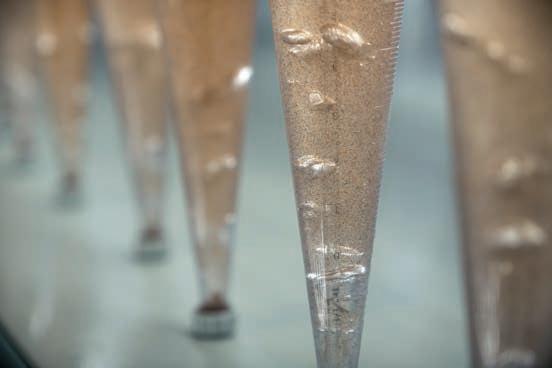
Reed Mariculture Inc has announced a ground-breaking partnership with INVE Aquaculture to distribute Inve products in the United States and Canada. INVE is a global leader in providing specialised nutrition and health products for the aquaculture industry. Reed Mariculture has set the standard in aquaculture supplies since 1995, offering essential products for larval fish, bivalves, crustaceans, and other filter feeders. Its flagship brand, Instant Algae®, serves over 500 hatcheries, universities, and research organizations in 90 countries. For more information see reedmariculture.com and reedmariculture.com/pages/inve-aquaculture
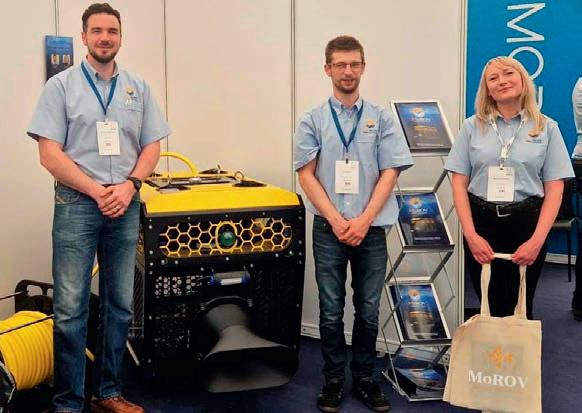
OTAQ’s Live Plankton Analysis System (LPAS) was successfully launched at the Aquaculture UK event last month, and since then it has been attracting interest from the fish farming industry. LPAS uses state-ofthe-art artificial intelligence technology to help identify the plankton that can cause the harmful algal blooms (HABs) which can pose a serious threat to fish health. Following successful trials, Ireland’s Seafood Development Agency, Bord Iascaigh Mhara, has placed an initial order for use at Irish fish farm sites. To find out more about LPAS, see “Early warning for harmful plankton” on page 37 of this issue.
otaq.com

Mort collection solution sees Aviemore debut Aquaculture 2024 in Aviemore was the first outing for Scottish ROV company MoROV to showcase their new mortality collection ROV (remotely operated vehicle). With the company’s base conveniently located in Inverness it was a short journey to the show, but the road to the final product involved 24 months of robust testing of all the components to ensure the utmost reliability in the most dynamic of environments. This focus was recognised and resulted in extremely positive feedback in Aviemore. The stand is already booked for Aquaculture 26 where the MoROV team look forward to showcasing future innovative products. www.morov.co.uk
A new collection of academic essays explores global food security issues and the role of aquaculture
Food security has come again to the fore as a policy issue, underlined by events over the last decade – including wars and a global pandemic – and this is the starting point for a collection of essays, edited by two academics from the University of Stirling.
It is a complex issue, however, where the role of the aquatic food supply chain is not well defined, the authors say.
Whilst there are a number of good scientific papers available covering aspects of food security, a single book exploring the issues from production to consumption does not exist.
Filling the gap, Aquatic Food Security explores these issues using global examples to illustrate both strengths and weaknesses within the existing aquatic food supply chain. It covers topics such as the role of intensification in global aquaculture production, the importance of nutrition and selective breeding, diseases and public health considerations, the role of markets and of processing and retail sectors and quality issues in the global seafood market.
This is already an area of vital importance and it will increase in importance as the aquaculture industry grows for the foreseeable future. It is in fact the fastest growing food production sector globally and has started to surpass some sectors of terrestrial animal farming.
The Editors, Dr Margaret Crumlish and Professor Rachel Norman, are qualified experts teaching food security and sustainability at the University of Stirling’s Institute of Aquaculture. For this publication, they brought together an international team of authors with diverse expertise in various areas of aquaculture and food security.
To define the remit of this book, the authors have adopted the UN Food and Agricultural Organisation’s definition that food security: “… exists when all people, at all times, have physical and economic access to sufficient, safe and nutritious food to meet their dietary needs and food preferences for an active and healthy life.”
The chapters each focus on a particular topic or implication regarding aquatic food security, focusing particularly on aquaculture.
Chapter 2, The role of intensification in global aquaculture identifies both the benefits of, and the challenges involved with, intensive aquaculture systems.
Chapter 3, The importance of animal nutrition and selective breeding in aquaculture production explores genetics and nutrition in aquaculture.
The fourth chapter, Aquaculture production now and in the future – an ecosystems perspective introduces the idea of “environmental goods and services” and shows how environmental modelling can be used to encourage good practices in aquaculture.
Chapter 5, Production level diseases and public health
Hopefully lessons have been learned from the unexpected events of the last few years ”
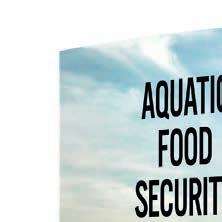



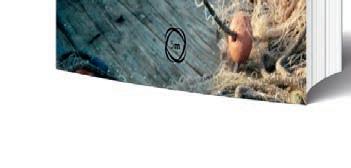

considerations in aquaculture looks at health issues in aquaculture and the complex nature of evolving pathogens, which are often see not as individual diseases that can readily be analysed, but as multiple infectious threats.

Global aquatic food production, Chapter 6,takes a broad view of food security and places it in a social, economic and political context.
Chapter 7, The role of markets in global aquatic food security looks at the different forms of distribution for aquaculture products in low to middle-income countries and in high income countries. This theme is further explored in Chapter 8 The role of processing and retail sectors, which compares and contrasts the different preservation approaches and looks at how novel methods can increase accessibility to seafood.
Chapter 9 focuses on raw seafood practices, risk and public health in south-east Asia, highlighting how cultural factors can affect food choices.
Chapters 10 and 11 focus on aquatic food safety and quality issues
The final chapter, Horizon scanning for aquatic food security, discusses the uncertainties involved in this sector. It looks not only at the many challenges – such as population growth, climate change and social and political instability – but also at the opportunities that could help mitigate them. These include investing in new production methods such as recirculating aquaculture systems, offshore fish farming and integrated multi-trophic aquaculture, as well as information technology and “alt-seafood” where cells are grown independently of a living organism.
The authors conclude: “Hopefully lessons have been learned from the unexpected events of the last few years and we are in a stronger place to develop resilient production and supply chains that will protect food security for everyone with seafood playing a, perhaps the most, significant role.”
Aquatic Food Security is available on Amazon and from 5mbooks. com at the links below. Price £150.
Amazon: www.amazon.co.uk/Aquatic-Food-Security-MargaretCrumlish/dp/1789181321
5mbooks.com: 5mbooks.com/product/aquatic-food-security

The latest aquaculture events, conferences and courses
SEAWORK
www.seawork.com
Southampton, United Kingdom
June 11-13, 2024
Europe’s largest on-water commercial marine and workboat exhibition.

SEAGRICULTURE EU 2024
www.seagriculture.eu
Tórshavn, Faroe Islands
June 18-20, 2024
Venue: The Nordic House
Leading conference for the seaweed sector in Europe.
ASIAN PACIFIC AQUACULTURE 2024
www.was.org
Surabaya, Indonesia
NEW DATES July 2-5, 2024
Aquaculture – Driving the Blue Economy is the theme of the conference at the Grand City next year.
24
AQUA 2024
www.aquaeas.org - www.was.org
Copenhagen, Denmark
August 26-30, 2024
Aquaculture conference and exhibition organised by the European and World Aquaculture Society.
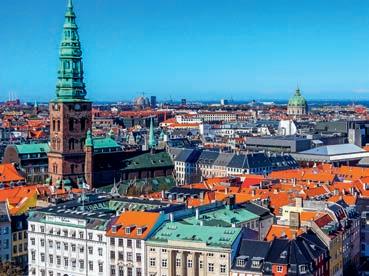
SEAGRICULTURE USA 2024
www.seagriculture-usa.com
Ketchikan, Alaska
September 11-12, 2024
Leading conference for the seaweed sector in the US.
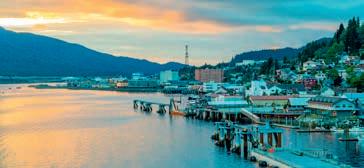
LATIN AMERICAN & CARIBBEAN AQUACULTURE 2024
www.was.org
Medellin, Colombia
September 24-27, 2024

NOVEMBER 24
SCOTTISH SEAWEED INDUSTRY ASSOCIATION
www.ssia.scot
Corran Halls, Oban UK
November 19-21, 2024
SSIA is an organization dedicated to the growth and innovation of the seaweed industry.
AFRAQ 2024
www.was.org
Hammamet, Tunisia
November 19-22, 2024
ALGAEUROPE 2024
www.algaeurope.org
Athens, Greece
December 10-13, 2024
Venue: Grandior Hotel Prague Conference on science, technology and business in the algae biomass sector.
25
AQUACULTURE 2025
www.was.org
New Orleans, Louisiana USA
March 6-10, 2025
SEAGRICULTURE ASIAPACIFIC 2025
seagriculture-asiapacific.com
Adelaide, Australia 18-20 March 2025
APRIL 25
WORLD AQUACULTURE 2025 CHINA
www.was.org
Qingdao, China
April 24-27, 2025
MAY 25
AQUAFUTURE SPAIN 2025
www.aquafuturespain.com
Vigo, Spain
May 20-22, 2025
Venue: Ifevi Fairgrounds
An international meeting space for the Spanish aquaculture industry.
JUNE 25
WORLD AQUACULTURE SAFARI 2025
www.was.org
Entebbe, Uganda
June 23-26, 2025
AUGUST 25
AQUA NOR 2025
www.aquanor.no
Trondheim, Norway
August 19-21, 2025
The world’s largest aquaculture technology showcase.
25
AQUACULTURE EUROPE 2025
www.aquaeas.org
Valencia, Spain
September 22-25, 2025


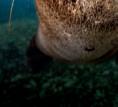

info@aceaquatec.com www.aceaquatec.com


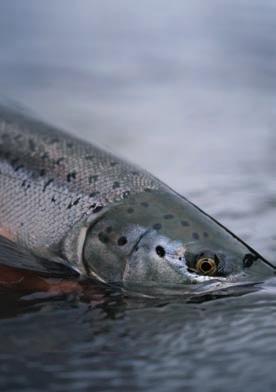


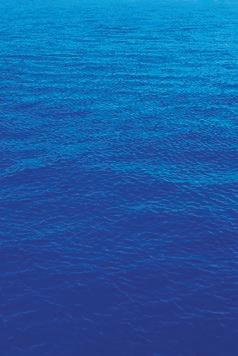





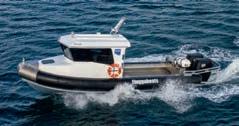














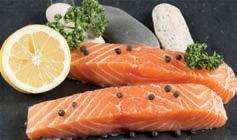
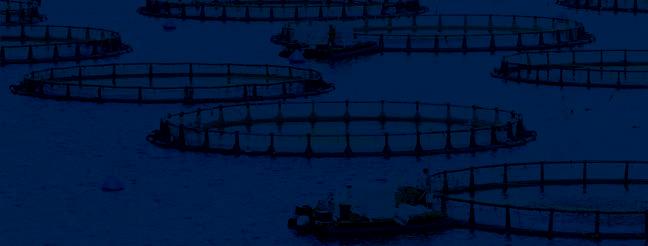
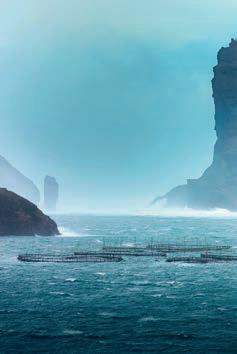
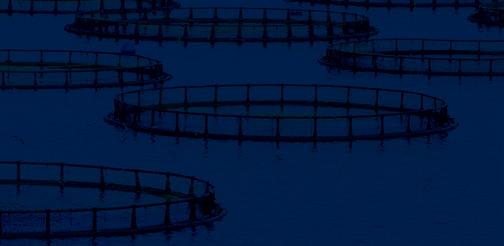
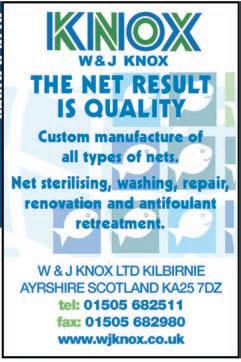




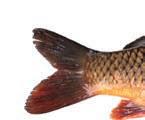











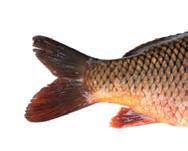

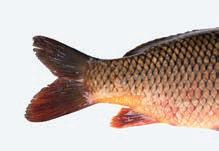
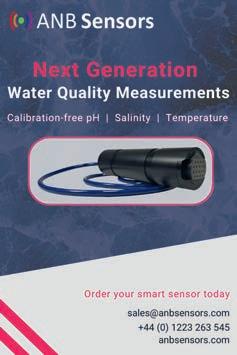




SO here I am trying to concentrate whilst looking after my extremely active granddaughter. My thoughts are punctuated with “Granddad, granddad can you come and…”
To a flagging grandparent, this endless energy is like the wearing nature of a long gale on a high tide. Anyway, in between bouts of questioning, being asked to help or just being given a big hug, the question of the future she will face comes into my head more and more.
What is very clear is that our democracy is not threatened as much by the incredible incompetence of our politicians but by the corruption of our civil service. I am not nostalgic enough to think that the people within the civil service were neutral in the olden days. Of course they weren’t, but they understood that they were the bastions of democracy and that they had to ensure balance. Their role was to deliver the will of the people delivered to them through politicians, however much they disagreed with it.
Then along came organisations like Common Purpose and the like who thought that they had a higher purpose. They know better than the general public, so they have the right to influence at a core level in order to get the government to do the right thing as they see it.
The fundamental problem with this type of thinking is that passion for a view is not necessarily linked to the correctness of that view. Once you start down this route, however, it is impossible to stop; primarily, because the whole concept is based on not admitting to influencing or having a bias. In other words, lying.
As a fish farmer, you may work out quite quickly where I am heading because we have been the targets of such activism for a very long time. I remember well when a certain head of SEPA, the Scottish Environment Protection Agency, supposedly unbiased and reasonable, acted against the industry. Speaking with colleagues, I questioned whether the person was an angler and was told emphatically that he wasn’t. Surprisingly, when he retired, he became chair of a notorious angling group. This isn’t against the law, but it is highly unethical.
It is not unknown for an individual from a campaigning organisation to be seconded to a public sector post. I can hardly think of a better way to ensure undue influence for an extremely long time. Is this regularly discussed and would someone in that position recuse himself or herself from meetings because of their connections? I doubt that is the case.
As an industry, and we are not the only one, we need to start to think much more strategically if we want to be able to deal with extremely stupid regulations like the new SEPA sea lice rules (and I could mention a whole load more).
The face we see is politicians and so we blame them for the policies they promote or enact. The problem is much more insidious, however. To test the theory just try debating with the advisers involved. If they refuse to debate you in public, then they fear the data and the truth. It is not easy to counter this sort of scheming. We
”Passion for a view is not necessarily linked to the correctness of that view
could follow the American model and use lobbying to counter activism. This carries the risk of becoming a matter of who can pay most to achieve their policy.
The other option is to start calling out individual civil servants. This risks creating implacable enemies (and court cases). Whatever answer is chosen, industries are going to have to become much more strategic about how they deal with the civil service and expect it to act against their best interests in all circumstances. It is never likely that the civil service will virtue signal its support for an industry against an activist.
If you feel that I am too cynical, just try debating with one of these people and you may find yourself converted remarkably quickly.
Meanwhile, I shall return to a small smiling face who would rather have a hug and play with the dogs than think about the problems of the world. If you ask me which is more important... no contest!
